
Jump to…
Do we have a treat in store for you spy book fans! Many of you will know Tim Shipman as the Chief Political Commentator at the Sunday Times or maybe you know him as the author of All Out War? But did you know that Tim is also a huge fan of spy books and boasts his own very impressive Spybrary? In this exclusive Spybrary feature Tim is going to share with us his top 125 spy authors ranked!
UPDATE – On August 7th, we hosted our first ever live episode of Spybrary. A panel to discuss Tim's list of the best spy writers. Tim revealed more about his method and criteria for selecting this monster list of spy authors. Joining us were Professor Penny Fielding, author and critic Jeremy Duns, spy blogger Matthew Bradford, and John le Carre book collector Steven Ritterman to run the rule over Tim's pick of the best spy writers. You can watch the discussion below or listen in via your podcast app.
Or listen here
I blush when I think back to the early days of the Spybrary project. I worshipped at the altar of Len Deighton, John le Carre, and Ian Fleming. I had no idea that there was such a wide universe in the spy book genre with so many talented spy authors that I had yet to discover. Buckle up and get that credit card ready as Tim takes us on a journey highlighting and showcasing his top spy authors.
Before we dive in, four items for you to consider.
1 – We are not all going to agree with Tim's top spy authors and that is fine. We hope this feature will help you discover new spy novels or revisit the work of spy authors of yesteryear. Do come and share your views in our friendly Spybrary community. Tim welcomes and encourages constructive debate and discussion.
2– I will update this blog post as often as I can but definitely weekly, sadly that East German desk is rammed at the moment, what with Dicky Cruyer never writing his own reports but it pays for my spy books.
3– Please please if you can buy any of the spy books listed directly from an independent bookstore/shop that would be epic. I am using Amazon links on this page because Spybrary is a global community. Use it for reference, price checking, reviews, etc and try and buy locally or at least independently if you can.
4. We are very lucky that Tim is giving up his time to write this for us. He interviews Prime Ministers and Presidents for a living, so please consider sharing this feature with friends and peers.
Take it away Tim!
With Spybrary Founder Shane Whaley‘s permission, I’m going to commence a new list : a countdown of my top 125 spy authors. This is my third such list hereafter ranking the John le Carre novels and the James Bond films (coming soon.)
This list has been a long while in gestation and brings together everything I know and love about spy fiction.
The idea is to introduce some of you to authors you may not be familiar with and to provoke a discussion about their relative merits.
Spy fiction is a broad church, of course.
You will find here, full-time spy novelists, detective writers who dabble in spy fiction on the side, literary authors who have tried their hands, career intelligence officers, cerebral leading men and women, action man adventure thrillers with a spying element, some classics of the genre and a few one-hit wonders.
The main focus is the Cold War, but it also includes a lot of wartime espionage and a very small flicker of American blockbuster fiction, which my friend David Craggs refers to as “the Kalashnikov kids”.
As you will see, my taste leans heavily towards the more cerebral spies (I’ve never read Brad Thor, Lee Child, or Mark Greaney), but I’m also a fan of excitement, suspense, and tension.
Clever doesn’t have to be boring.
I like great writing, characters you care about, snappy dialogue, and a moody sense of time and space as well as plots that twist and turn, that surprise and shock. (Nearly) everyone here has some of these attributes.
In compiling my top spy author rankings, I have tried to judge people based on a body of work, but those with a few great works stand shoulder to shoulder with people who churned out far more. But, generally, if you published a full series at a high level, you’re going to rank higher than someone who turned their hand to a couple of spy books.
There are authors here (Philip Kerr and Ross Thomas to name two) who perform well but would be much higher for their overall body of work. They deserve a place here, but they are better known for their non-spy work and fall here behind some who devoted their entire canon to espionage.
Are there 125 spy authors worth the trouble?
Randall Masteller’s brilliant site, Spy Guys + Gals, currently lists nearly 2,000 different spy series, from many hundreds of authors.
He currently gives 149 of them a grade of A or better. Of these, not all are pure spy fiction, but his site is a great resource and it has helped me find many great books. I haven’t read nearly as much as Randall, or even the great Mr. Craggs.
The only rule for inclusion here is that I have to have read an author for them to appear, and to get high I must have read a good number of their books. A final note: this is not an attempt to quantify the greatest authors, it is MY list of 125 spy writers I like in the order I like them.
There are many more spy authors I need to read. I will soon add to this the 30 spy authors I most want to read to make up a full list of 150 and to cover some people who may be unjustly excluded. I would hugely value all your opinions about what follows, particularly where you strongly disagree.
I’m going to be updating this post every day and will send it to Spybrary weekly, culminating in the top 10 spy writers. Some entries will be quite short, others will be much more detailed. You might think you can guess a lot of what will follow, but I hope you find some of it, including several top 10 entries, surprising.
But wait there's more…!
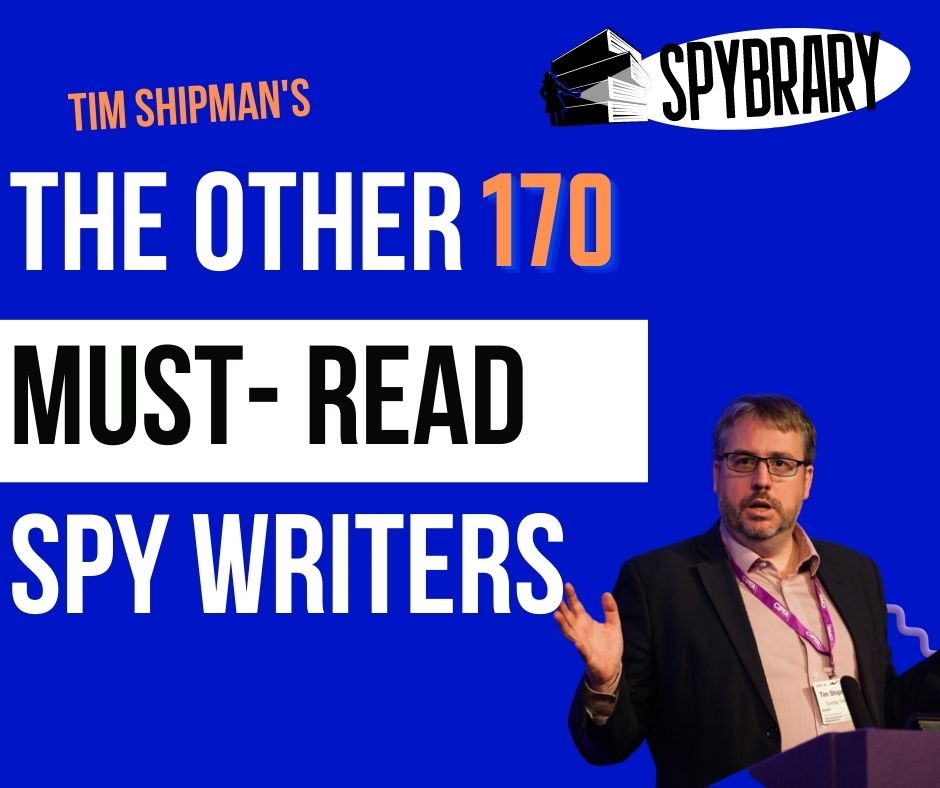
The Other 170 must-read spy authors by Tim Shipman.
Let’s just call this project the Top 300 spy writers. As promised, I’ve now augmented the main list of 125 best spy writers I have enjoyed with what follows: more than 170 new spy writers who should be read…
A NOTE ON SOURCES
I've been crediting a lot of people along the way, but several reference works have been invaluable in checking details and jogging my memory about these authors. The two most important are Randall Masteller's brilliant website, Spy Guys & Gals, which is an absolute treasure trove of information.
At the British end, the expert is Michael Ripley, whose book Kiss Kiss, Bang Bang, the boom in British thrillers is absolutely essential for Spybrarians. After that the website Good Reads has a lot of reviews that are worth reading (and a lot that are not), Fantastic Fiction fills in some gaps and Wikipedia does most of the rest.
Without Randall and Mike particularly I would not have come across a lot of the writers here. I'm hugely grateful. I'd also like to give a shoutout to the blog Existential Ennui, which has a lot of brilliant material on spy fiction and collecting first editions, though the guy behind it has spent several years focusing on other genres like science fiction. The other key source, of course, is Spybrary, which includes the greatest group of thriller fans I know. We all owe Shane Whaley a huge debt of gratitude for bringing us together. In terms of reading advice, I'm grateful to Jason King, Matthew Bradford, and Jeff Quest in particular.
Tim would love to hear your thoughts on his top spy author list, either leave a comment here or better still why not join us on the Spybrary Facebook group and read observations on Tim's list written by your fellow spy fans.
125. WILLIAM LE QUEUX
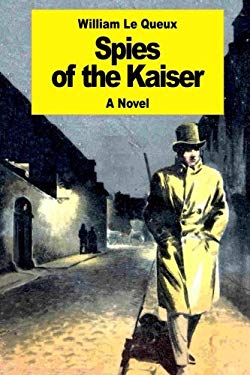
Active: 1891-1931
Key works: The Invasion of 1910, Spies of the Kaiser
Let’s be frank if this was a list of 1,500 spy writers William Le Queux would probably be 1,500th on the list. By modern standards his propagandist penny dreadfuls from the early part of the 20th century are fairly unreadable, focusing as they do on paranoia about French and German spies under the bed.
But these are arguably the first popular spy novels in England and Le Queux joined forces with newspaper magnate Lord Northcliffe to publish pulp fiction for the credulous masses.
As such they are a fascinating insight into the mindset of the times, particularly in the run-up to the First World War. (Le Queux himself demanded protection by the police from German agents at the start of the war – a demand that seems to have been met with hilarity by the Metropolitan police).
The Invasion of 1910, serialized in the Daily Mail in 1906 sold a million copies in book form and was translated into 27 languages. All spy fans should try a bit of Le Queux.
Spybrary suggested further reading: Le Queux: How One Crazy Spy Novelist Created MI5 and MI6
124. FRANCINE MATHEWS
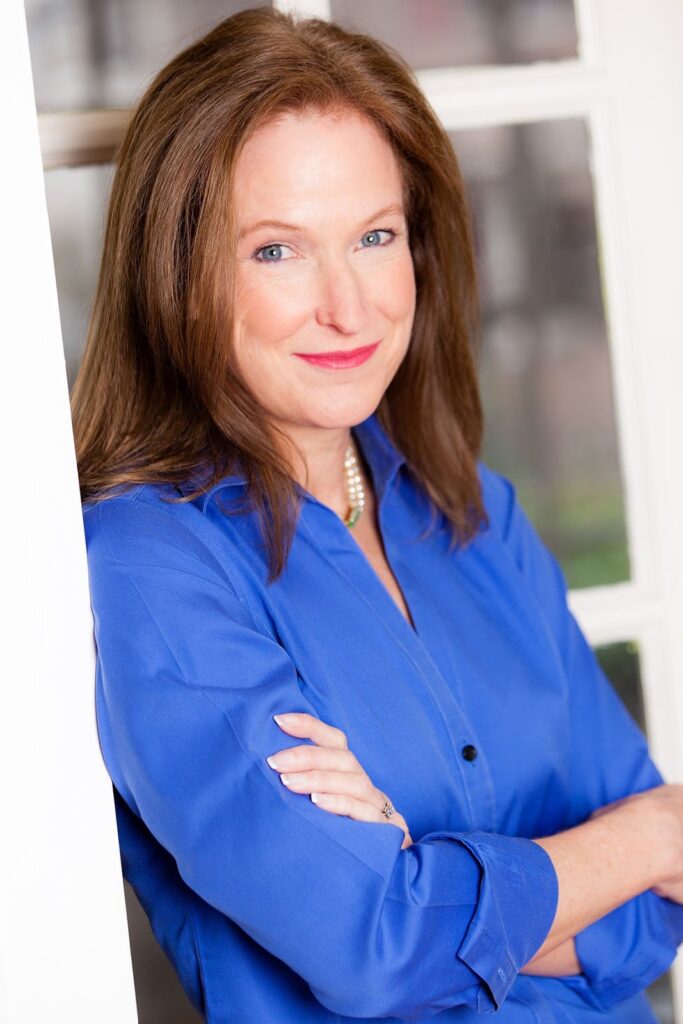
Active: 1994-
Key works: The Secret Agent, The Cut Out, The Alibi Club
Francine Mathews spent four years as an intelligence analyst at the CIA, including work on the Counterterrorism Center's investigation into the bombing of Pan Am Flight 103, over Lockerbie in 1988.
She has since penned more than 15 books, most of them detective thrillers set in her native Nantucket. But she has also put her intelligence background to good use in a handful of pacy spy thrillers. They skip along and have enough of a ring of authenticity to lift them above the run of the mill.
Further reading: Denver novelist Francine Mathews finds inspiration for thriller in Ian Fleming
123. GÉRARD DE VILLIERS
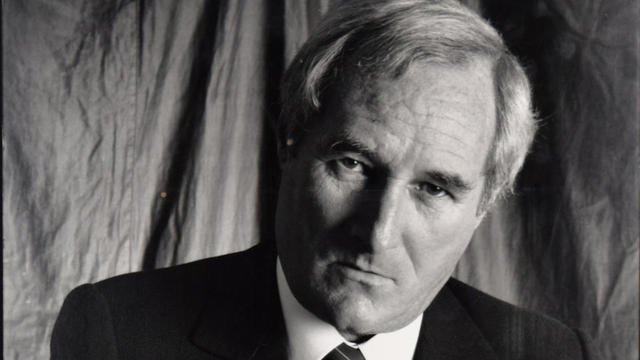
Active: 1964-2013
Key works: The Madmen of Benghazi, Revenge of the Kremlin
France’s most prolific spy writer penned 200 books about his hero Malko Linge at the rate of four or five a year and sold 120 million copies. Curiously, France’s answer to James Bond is actually an Austrian prince who works for the CIA and the series is known there as the SAS books (equivalent to HRH in English).
The writing is more slapdash than Fleming and they are not for the faint of heart since de Villiers revels in fairly explicit sex scenes every few pages. Nonetheless, there is actually a perverse realism to some of it.
Gerard De Villiers was known to hang out with French intelligence officers and wrote several prophetic books about real life events. Very few of these are available in English, but I’ve tried the Madmen of Benghazi and Chaos in Kabul, the first two translated after his death and there are three others with a Russian theme. They’re salacious fun.
122. CHRISTOPHER WOOD
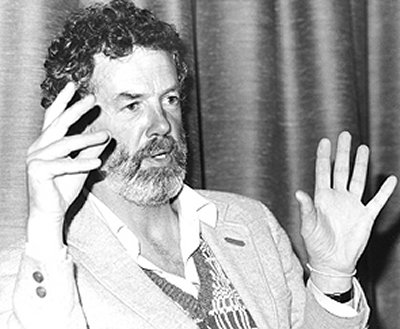
Active: 1977-79
Key Works: James Bond, the Spy Who Loved Me, James Bond and Moonraker
Wood was a screenwriter responsible for two of Roger Moore’s best-known Bond films, including The Spy Who Loved Me, which for me is one of the all-time greats and Moonraker, arguably one of the worst. He also penned two novelizations of the films and became the first Bond continuation author since Kingsley Amis.
These books are surprisingly decent, particularly the first and have acquired greater kudos in the Bond collector community because most of the hardback first impressions found their way to libraries and are almost impossible to find in good condition. Even a library copy will set you back £200 while a clean non-library version is £500+.
121. JOSEPH FINDER
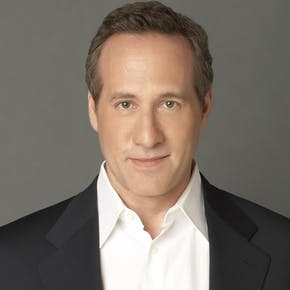
Active: 1991-
Key works: The Moscow Club
Finder is best known for the Jack Reacher-style series featuring his character Nick Heller and he has also written books featuring industrial espionage, which has a lot of similar themes to the ones we Spybrarians enjoy. However, he’s primarily here because he began authorial life knocking out a couple of decent spy thrillers. The Moscow Club features a KGB coup against Soviet leader Mikhail Gorbachev. Extraordinary Powers recounts the discovery of a Soviet mole in the CIA. He’s a highly professional writer, who understands tension.
120. GAYLE LYNDS
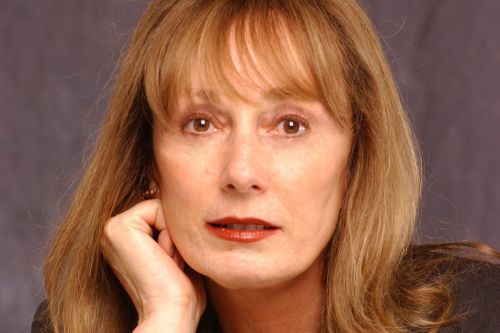
Active: 1996-2015
Key works: The Last Spymaster, Masquerade
Known as the Queen of Espionage Fiction (at least in America where she founded the group International Thriller Writers with David Morrell (author of the Rambo books). Gayle Lynds also spent time at a government think tank where she earned a top secret security clearance. Her first book, Masquerade, in 1996 became the first spy bestseller by a woman. Like Mathews, she writes for the pacy airport end of the market, but there is enough insider knowledge to reward die hard spy fans.
119. WILLIAM F. BUCKLEY JR.
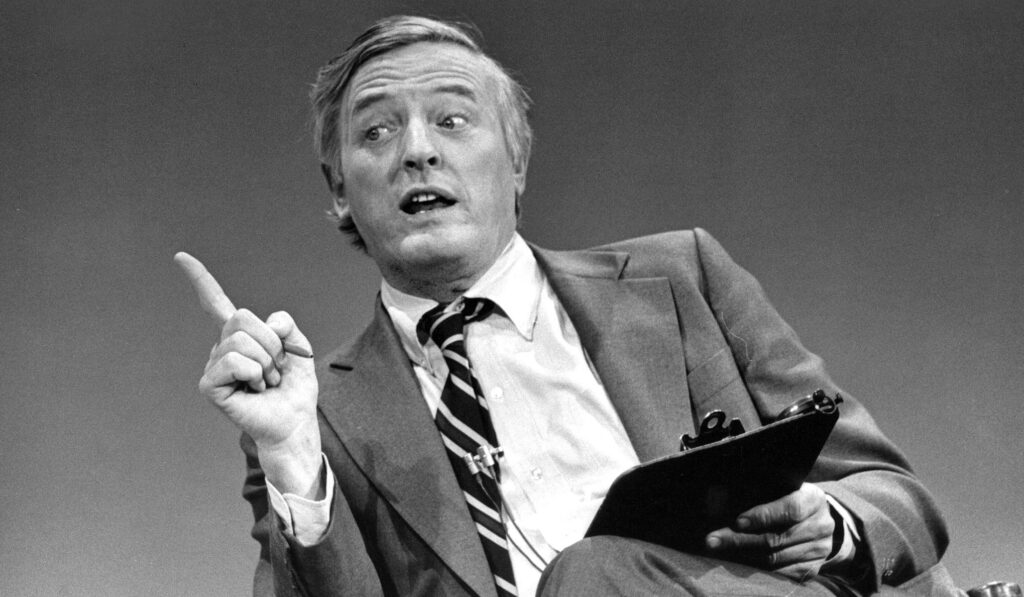
Active: 1976-2005
Key works: Saving the Queen, Stained Glass, Who’s On First
Bill Buckley was arguably the most celebrated Conservative political writer in America in the latter half of the 20th century, a serious public intellectual and founder of National Review, a magazine that did much to incubate debate on the right.
He was also the author of 11 rather less serious, but undeniably fun, spy thrillers featuring Blackford Oakes, a charming but rebellious spook. These books, of which I’ve read a couple, are escapist but contain a clear world view where the CIA are the good guys and the KGB are the bad guys.
Buckley, who had little time for the moral ambiguity of Le Carre, was inspired to write the first by reading Frederick Forsyth’s Day of the Jackal. If his mission to entertain was successful the result is perhaps too consciously lightweight to be enduring but they are an amusing diversion.
118. PALMA HARCOURT
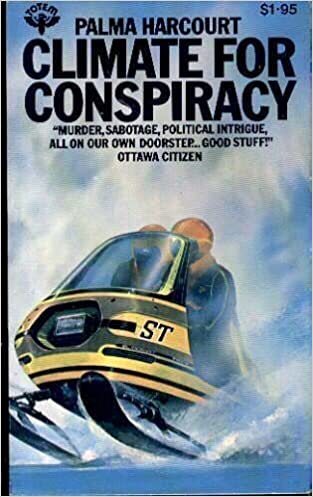
Active: 1974-96
Key works: Dance for Diplomats, Climate for Conspiracy, Shadows of Doubt
Another female spy writer who has been largely lost to the mists of time. What got me trying her was a cover quote from Desmond Bagley proclaiming: “Palma Harcourt’s novels are splendid”, which is measured enough to be accurate praise, rather than the hyperbole that passes for advertising on many books these days. The paperbacks of her espionage thrillers market her as a new Helen MacInnes.
Harcourt’s books tend to be set in the diplomatic milieu, of which she clearly has personal experience, making them a little different from agency-focused spy fiction.
Low key but rewarding reads.
117. TERRY HAYES
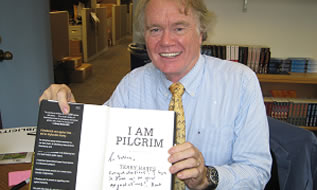
Active: 2013-
Key works: I am Pilgrim
Terry Hayes is a man of many parts, but so far the author of only one novel. Hayes is a highly successful screenwriter whose credits include two Mad Max movies, From Hell, Payback and Dead Calm.
When his book, I am Pilgrim, was released in 2013 it was hailed by publishers as “the only thriller you need to read this year”. Perhaps that was because, at 700 pages, it would be the only thriller some people had time to read that year. But that’s a cheap shot.
There are very few thrillers that seem to divide opinion like this one. Some reviewers declare it the best thing they’ve ever read. For me, there are some brilliant set-piece passages that, had he had a stricter editor, could have placed this in the stratosphere, but too much padding and implausibility between them to make the whole hang together very satisfactorily.
A sequel, The Year of the Locust, was planned for release in 2016, but has yet to see the light of day. Wikipedia wryly notes: “Publish dates vary from 2020 to 2045”.
If he nails that one Terry will be moving up, if it’s just as flabby he may be moving out.
116. HENRY S. MAXFIELD

Active: 1958-1960s
Key works: Legacy of a Spy
Henry S Maxfield did a few years on the Berlin desk of the CIA before leaving the agency. In 1958, his first book, Legacy of a Spy, was published and was made into the 1967 movie, The Double Man, starring Yul Brynner and Britt Ekland. I haven’t seen the film.
The book is fairly hard to come by but has a premise that is well explored. As GoodReads puts it: “Montague was a steel-nerved, quietly brilliant counterespionage agent. Carmichael was Comrade Slazov's next assignment for killing. The shadowy Ilse loved a man who called himself Slater. One of the three would probably have to kill Ilse. Neither Slasov nor Ilse suspected that the three were one man.”
Cue a tense and absorbing novel with some interesting tradecraft and multiple swapping of outfits and identities. Maxfield wrote a few other books, but so far as I’m aware only one other spy novel: A Dangerous Man, which I haven’t yet found.
115. ANTHONY TREW
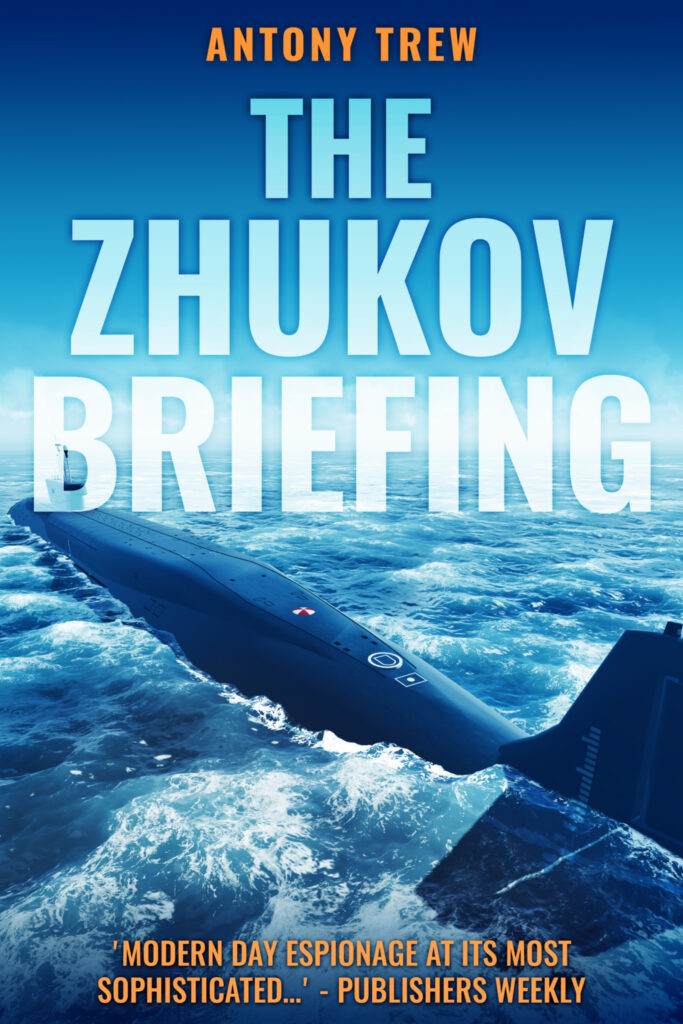
Active: 1963-89
Key works: Two Hours to Darkness, The Zhukov Briefing
Anthony Trew served with the Royal Navy and the South African navy in the Second World War, gaining experience in the Atlantic, the Mediterranean and on the Arctic convoys. He commanded the escort destroyer HMS Walker and won the Distinguished Service Cross. All of which means, as you would expect, that he writes very well about the sea. Unlike a lot of maritime thriller writers, his plots, while not pure espionage, contain a spying element. They also tend to have characters that have a little more depth and drive the plot, rather than bob like flotsam atop it. This is certainly the case in Two Hours to Darkness, written just a year after the Cuban missile crisis, which features the commander of a nuclear submarine coming a tad unhinged. I also enjoyed The Zhukov Briefing, where a Russian sub runs aground in Norway and the world’s intelligence agencies descend to try to steal its secrets.
114. ANDREW GARVE

Active: 1965-71
Key works: The Ascent of D13, The Ashes of Loda, The Late Bill Smith
Andrew Garve was the pseudonym of journalist and crime writer Paul Latimer, who penned more than 40 books, a handful of which were espionage thrillers. His best known and the one that gets him in here was The Ascent of D13, a thrilling mountain climbing thriller, where agents from East and West second on the mountain where a hijacked plane carrying a super weapon has come down. It’s not just gripping, but the denouement is ingenious.
113. Colin Forbes
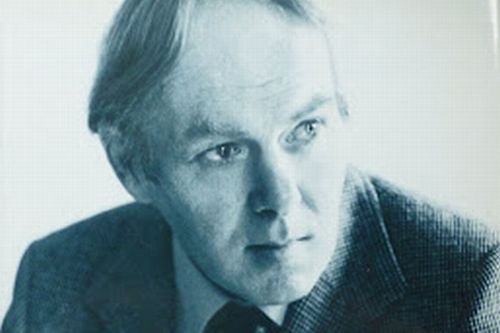
Active: 1969-2006
Key works: The Heights of Zervos, Double Jeopardy, Avalanche Express, The Stockholm Syndicate
Colin Forbes
A pseudonym of Raymond Harold Sawkins, it is a curiosity that anyone seeking to write thrillers should choose to call themselves “Colin” but we must put that aside. Forbes is one of the most difficult “spy” writers to evaluate. Some of his early stuff is really quite good (The Heights of Zervos stands out as a wartime adventure thriller) and he created a durable spy chief series featuring a British intelligence boss called Tweed (beginning with Double Jeopardy), which ran for years at a time when most people were writing standalone thrillers.
For awhile in the 1980s he was spoken of by some in the same breath as Freddie Forsyth. Forbes’ schtick was that he visited everywhere he wrote about (at a time when cheap air travel was impossible) so his books have what some see as an air of verisimilitude. Critics might say that too often they descend into an arid version of the Baedeker guide. Mid period Forbes is merely formulaic, late period Forbes is to be avoided. Serious people think he kept publishing after he had become senile and things don’t hang together well. Avoid the dreadful Lee Marvin film of Avalanche Express.
112. VINCE FLYNN
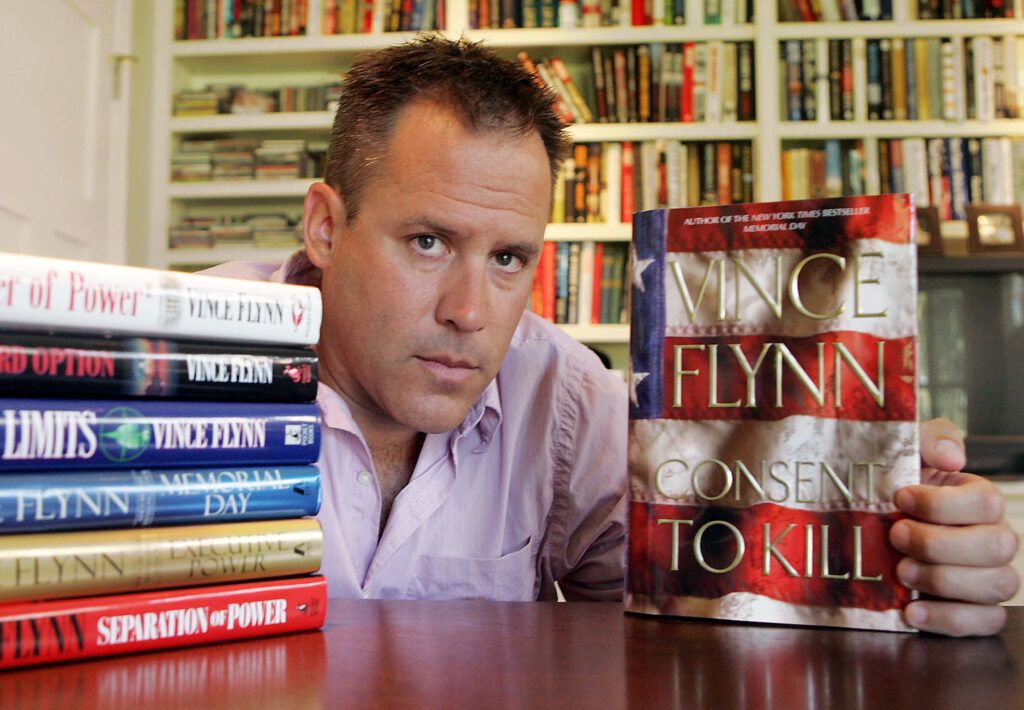
Active: 1999-
Key works: Transfer of Power, American Assassin, Term Limits, Memorial Day
Ok, here’s my one concession to Kalashnikov kiddery. Mitch Rapp is one of the landmark shoot ‘em up spies of the age. I have little to compare him to, since I haven’t tried Jack Reacher, Court Gentry and the others. Randall Masteller, who has read more spy books than anyone else alive says Reacher is the gold standard, but Flynn writes with a fairly gripping exuberance and when I lived stateside he was one of my go-to airport novelists when I needed an amuse bouche for the brain. Flynn’s first, Transfer of Power, is almost absurdly gripping tale of terrorists seizing control of the White House. Go on Craggsy, give it a try…
111. TIM SEBASTIAN
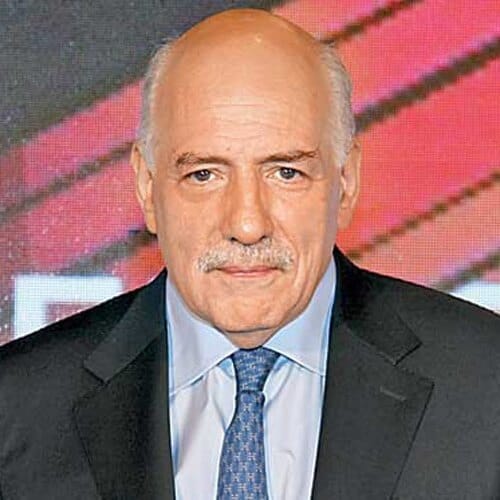
Active: 1988-1997
Key works: The Spy in Question, Spy Shadow
Tim Sebastian was one of the foremost foreign correspondents of his era and his credentials for this sort of thing include being expelled as the BBC’s Moscow correspondent in 1985 accused of spying… He penned a series of moderately successful spy thrillers. None is spectacularly good but they all have a realism and documentary grittiness which you would expect of someone who knows the mean streets of Moscow and Warsaw and crossed paths with people in this world.
110. JAMES NAUGHTIE
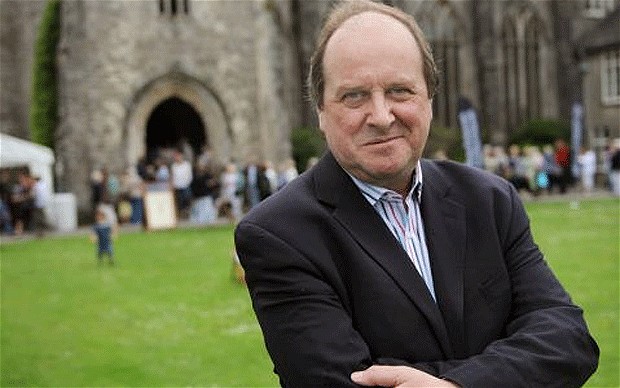
Active: 2014-16
Key works: Paris Spring, The Madness of July
Another BBC man, James Naughtie is best known for his two decades presenting Radio 4’s flagship current affairs breakfast show Today, and a series of non fiction books on political subjects. In his dotage he has penned two rather good thrillers.
Where Sebastian is a shoe-leather reporter, Naughtie is an ideas man, a more elegant writer and someone good at conjuring a sense of time and place. The Madness of July features a spy on the hunt for family secrets in 1970s London and Washington. When I met Naughtie at the Borders book festival a few years ago, he asked if I had read his second, Paris Spring (set in the revolutionary fervour of 1968), then frogmarched me to a till and signed the paperback. “This one is better,” he said. He was right.
109. DEREK LAMBERT
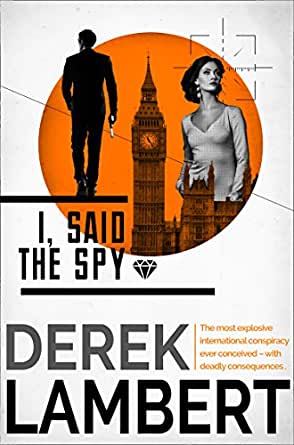
Active: 1969-97
Key works: I Said the Spy, The Yermakov Transfer, Red Dove, The Man Who Was Saturday
Derek Lambert was a foreign correspondent for the Daily Express and knocked out very serviceable thrillers throughout the 1970s and 1980s, mostly with Cold War themes and sometimes touching on the Cold War space race. His best known is probably The Yermakov Transfer, which features a plot to kidnap the Soviet premier on the Trans Siberian Express. My favourite is I, Said the Spy, a tale of double-crosses and paranoia set around the mysterious Bilderberg conference of world leaders.
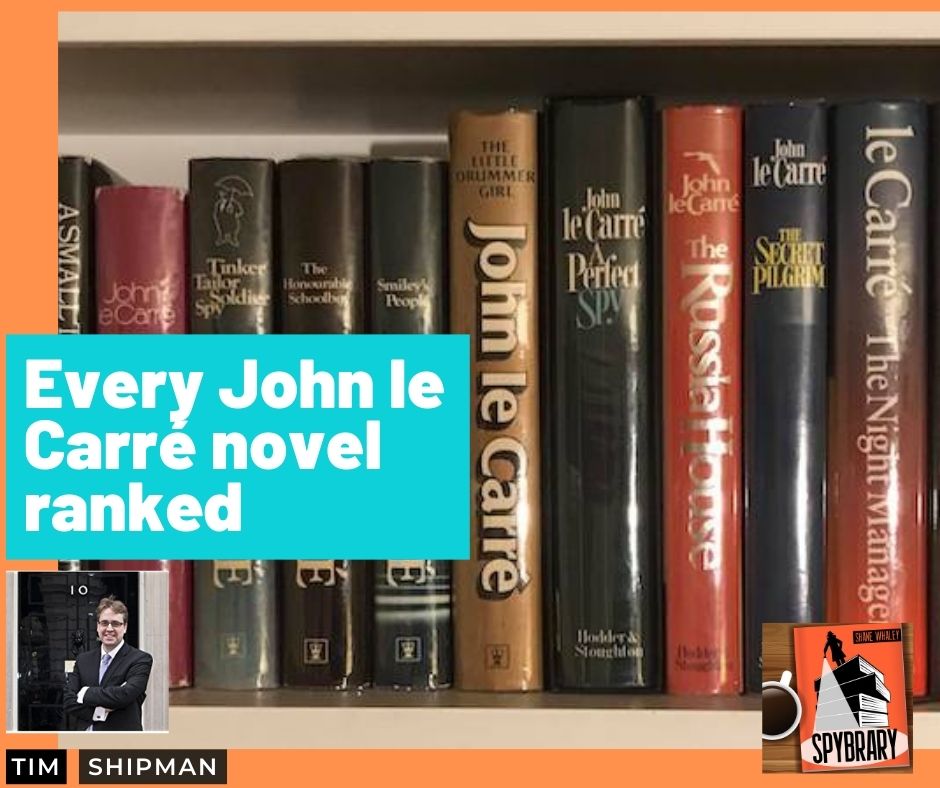
Are you enjoying Tim's spy author rankings? Then why not check out Tim Shipman's favorite John le Carre novels ranked!
108. E. PHILLIPS OPPENHEIM
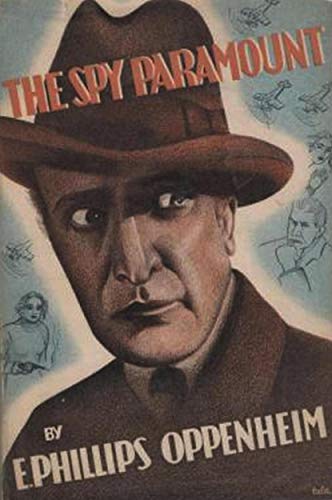
Active: 1888-1943
Key works: The Great Impersonation, General Besserley’s Puzzle Box, General Besserley’s Second Puzzle Book, The Spy Paramount, Miss Brown of XYO
One of the pioneers of the spy novel from the first golden age of thriller writing, Oppenheim’s career took off in 1898 with the publication of mysterious Mr Sabin, an invasion threat fantasy worthy of Le Queux. However, unlike most Le Queux, some of his later 100-plus novels are actually still very readable and several of his best known works have been reissued in paperback in recent years. These include The Spy Paramount, which features an American sent undercover by a spy chief from fascist Italy, with lovely bold cover art in the 2014 reissue. His best known book is The Great Impersonation (1920), which has a classic doppelgänger plot and doesn’t end up being quite what you expect. I haven’t read them yet but connoisseurs are also fans of Oppenheim’s two volumes of short stories featuring spy chief General Besserley. Miss Brown of the XYO, another spy yarn, was unusual for the time in featuring a female lead.
107. VLADIMIR VOLKOFF
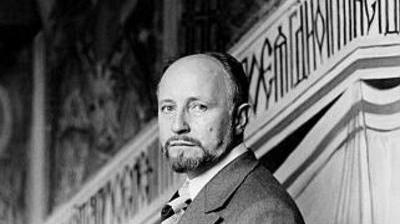
Active: 1979
Key works: The Turn-Around
A French writer of Russian extraction, most of Volkoff’s oeuvre, which features several historical novels about Russia, is not available in English. The one book which is, The Turn-Around, is a very unusual and interesting spy novel. Volkoff is a literary writer and his take on the turning of a double agent is interesting because it explores the inner world of the Russian target and how his discovery of a faith in something other than the communist system helps and hinders the operation. It’s not a thrill a minute but as a character study in the psychology of betrayal it ranks quite highly.
106. SIMON MAWER
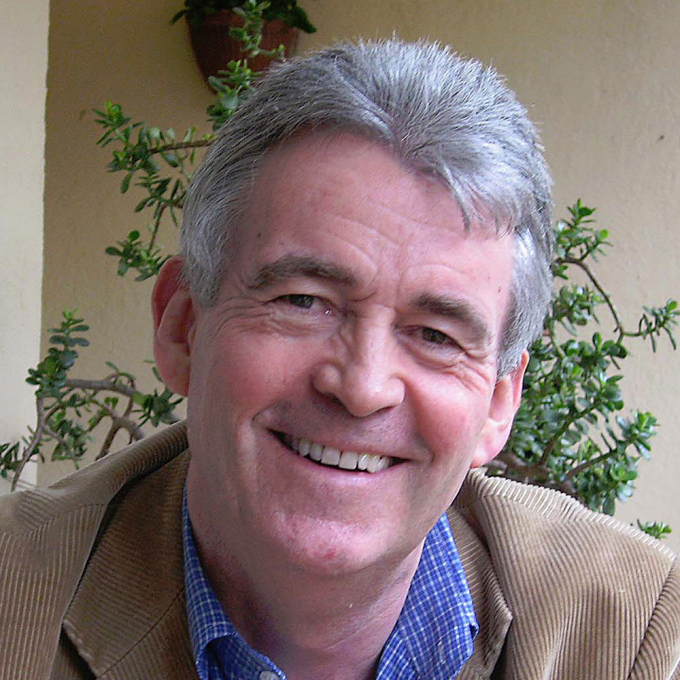
Active: 2012-15
Key works: The Girl Who Fell From the Sky, Tightrope
Simon Mawer is a novelist who has tried his hand at espionage. Mawer has 13 books under his belt but the two which interest us here are The Girl Who Fell From the Sky and its direct sequel Tightrope. They feature a very strong female lead Marian Sutro, who is recruited by SOE and parachuted into France as a resistance courier. Her real mission is to contact an old boyfriend in Paris who is a nuclear physicist. Tightrope picks up Marian’s story in the Cold War of the 1950s. These a very well crafted books, where plot is driven by a character
105. BRYAN FORBES
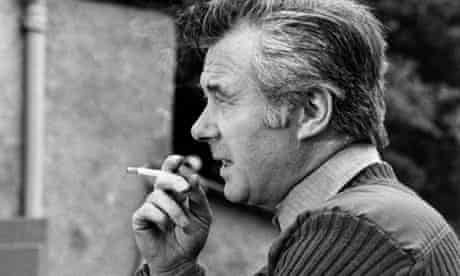
Active: 1986-89
Key works: The Endless Game
Forbes is another of those Renaissance men who obviously love spy fiction and then dabble alongside other career paths. Forbes was a film director, who made The Stepford Wives and Whistle Down the Wind.
He was also the screenwriter for The League of Gentlemen, one of the top heist movies of the 1960s and won a BAFTA for the screenplay of The Angry Silence. So writing thrillers was only the third string to his bow but in the late 80s he penned a few pretty decent spy thrillers (though they’re less well known than his book International Velvet). The Endless Game is a classic Cold War plot with moles and femme fatales and high government politics. It became a fairly lacklustre film, which Forbes also wrote and directed. A Song at Twilight and is a politics-espionage crossover, and Quicksand use the same main character.
Now we're getting serious…
Tim shares the spy writers who will likely not make his top 125 ranking of spy authors
104. DAVID WOLSTENCROFT
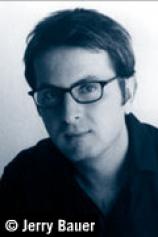
Active: 2004-06
Key works: Good News Bad News, Contact Zero
David Wolstencroft is the creator of Spooks, the BBC series about the British Security Service, which was renamed MI5 in America. He also penned two decent spy thrillers, which have good characters and highly cinematic and pacy. The first – Good News, Bad News – has one of those arresting concept openings, where you quickly learn that two guys working in a phot processing booth are both spies targeting each other. It gallops along with endless twists, which even the author admits become too much, but it’s exciting and different from a lot of spy fiction. Contact Zero has another good premise, a bunch of burned young spies, who have seen most of their colleagues killed, seek out the eponymous organisation, which is supposed to help agents who are burned. It’s less breakneck but a more mature book.
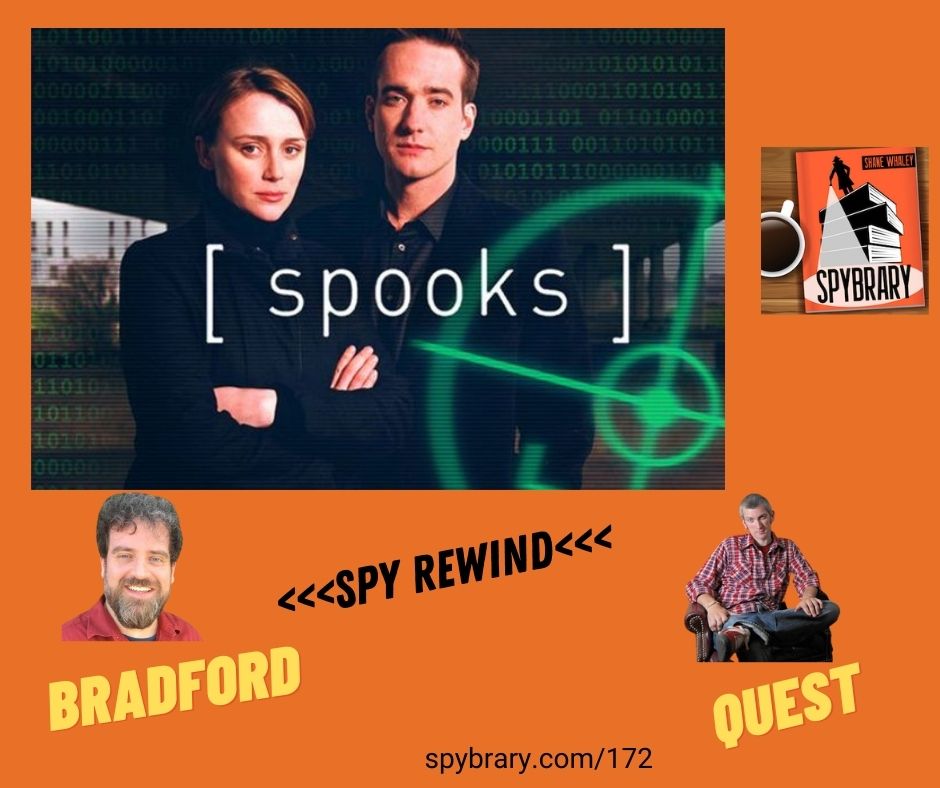
Check out the Spybrary Spy Rewind MI5/Spooks Review
103. DOV ALFON
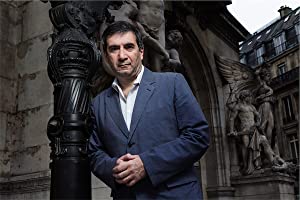
Active: 2019
Key works: A Long Night in Paris
An Israeli journalist, who once edited Haaretz, a respected paper, Dov Alfon took the spy writing world by storm in 2019 with his debut novel, A Long Night in Paris. It’s a multi-perspective thriller that canters along at a good pace and has some interesting top-level political betrayal as well as espionage action. It won the Crime Writers’ Association International Dagger that year and the Marianne award for the top thriller published in France that year. Most importantly, he made Spybrary’s best spy novels of the year, compiled by Craggs/King. He’s now working at Liberation in Paris. I just hope he writes some more.
102. MANDA SCOTT
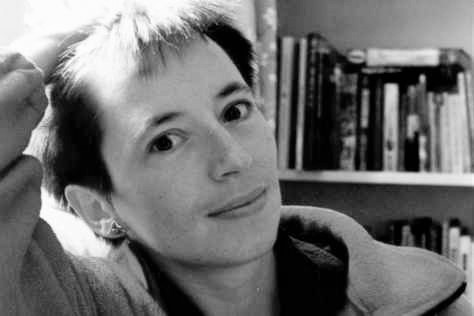
Active: 2019
Key works: A Treachery of Spies
Another spy breakthrough novel of 2019 was Manda Scott’s A Treachery of Spies, one of the best thrillers I’ve read about the French resistance. It also made the Craggs/King list and was a Sunday Times thriller of the month.
Scott is the author of a series featuring a spy in Roman times and another series about Boudicca, so she knows how to write and how to structure and what you get here is a mature book with strong characters and a dual timeline after a modern murder is committed that resembles the way traitors to the resistance were executed. It’s good on themes of betrayal and memory and how collective history shapes us all. It’s also pretty gripping. If she wrote half a dozen more like this in our genre she’d be climbing 60 or 70 places.
101. NICHOLAS LUARD
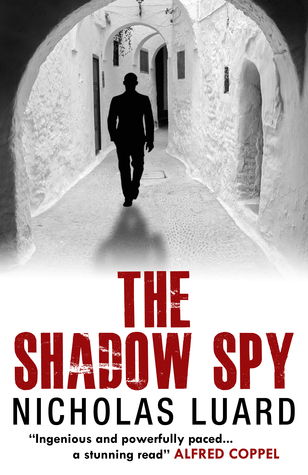
Active: 1975-79
Key works: The Dirty Area (aka A Shadow Spy), The Robespierre Serial, The Orion Line, Travelling Horseman
The great joy of this project is that many of the authors turn out to have very interesting back stories. Nicholas Luard co-founded the Establishment club in the London of the Swinging Sixties with the legendary comedian Peter Cook. For a few years this was the beating heart of coolest city on earth, home to groundbreaking comedy and cabaret. As if that were not enough he became one of those who kept Private Eye, Britain’s leading satirical magazine, afloat.
In 1975 he penned The Robespierre Serial, one of those thrillers that was hailed as one of the best of its year, but it’s assassination/manhunt plot owes more than a little to a better-known thriller. Better is The Dirty Area, also known as A Shadow Spy, a title under which it has been republished both in the Colliers Spymasters series, and more recently by Top Notch Thrillers, the imprint Mike Ripley uses to revive great thrillers which have fallen out of print.
The premise is a good one: a disgraced British officer is blackmailed into going to Tangier to impersonate playboy and agent provocateur Ross Callum only to learn that an assassin is targeting Callum. Luard had contacts in the CIA and the word is they bought up copies of several of his books (Robespierre and Travelling Horseman, which takes the reader inside the Black September terror group) for revealing too much about botched field operations.
100. EDWARD S. AARONS
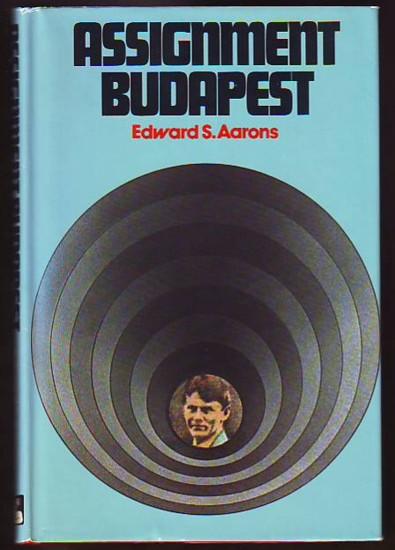
Active: 1955-75
Key works: Assignment Tokyo, Assignment Budapest, Assignment to Disaster, Assignment Suicide
Edward S Aarons wrote more than 80 pulp fiction thrillers, 42 of which featured CIA operative Sam Durrell. Every one of them starts with the word Assignment. The first was Assignment to Disaster. Aarons sold 23 million copies and cemented his place as author of one of the great US action paperback series. Durrell is resourceful, his creator the master of the short sharp sentence. The locations are exotic, the action fast and often violent. These aren’t great literature but they are great fun.
99. TREVANIAN
Active: 1972-79
Key works: Shibumi, The Eiger Sanction, The Loo Sanction
Best known to the outside world for the book of The Eiger Sanction, a middling Clint Eastwood movie, Trevanian is the pseudonym of an American film historian named Rodney William Whitaker, who in the 1970s sold more than a million copies of five consecutive books.
That book is rather tenser than the film and its successor the Loo Sanction also has its merits, but they have to be read understanding that Trevanian was trying to both spoof the genre and do it better than many of its authors. Shibumi, which followed in 1979, is regarded as his masterpiece and certainly, it’s a must-read for Spybrarians. On the positive side, the central character, assassin Nicolai Hel, is as compellingly drawn and eccentric as any spy in popular fiction – capable of turning any object into a murder weapon or taking on Japanese experts at the deep mind game Go.
On the downside, the book is all over the place with an absurd digression into a spelunking scene in the Basque country, which lasts for what seems like a geological age. It’s a cult classic and beloved of our man Craggs, but I’m more intrigued to see what Don Winslow did with a prequel novel featuring Hel, Satori, which the Whitaker estate gave its approval to in 2011.
98. MATTHEW RICHARDSON
Active: 2017-
Key works: The Insider, My Name is Nobody
One of the youngest writers in the successful new wave of British spy writing, Matthew Richardson has published two accomplished thrillers and just finished a third, which will hopefully come out next year.
My Name is Nobody came out in 2017 and features his spook Solomon Vine on the hunt for his oldest friend, who has been abducted from the British embassy in Istanbul. It manages to use modern technology and touch on modern themes like terrorism, whilst maintaining an old school feel. Richardson has read a lot in the genre and it shows. It’s not perfect, but Gregg Hurwitz, the author of Orphan X said of it: “I dare you to find a first novel as self-assured, impeccably researched and beautifully rendered.”
The Insider, which I preferred, is Richardson’s modern take on Tinker Tailor Soldier Spy. The greatest Russian defector of the age is dead and the suspects include his handlers, who all have top jobs in the security apparatus of the government. Vine is brought in to find the traitor. There’s an even more old school feel to this one. In a recent podcast interview, which you can find on the Spybrary website, Richardson talks up this third, The Scarlet Papers, as his best. He says it’s a much bigger book in scope and length, with multiple time frames building a saga of British intelligence from the war to the modern age.
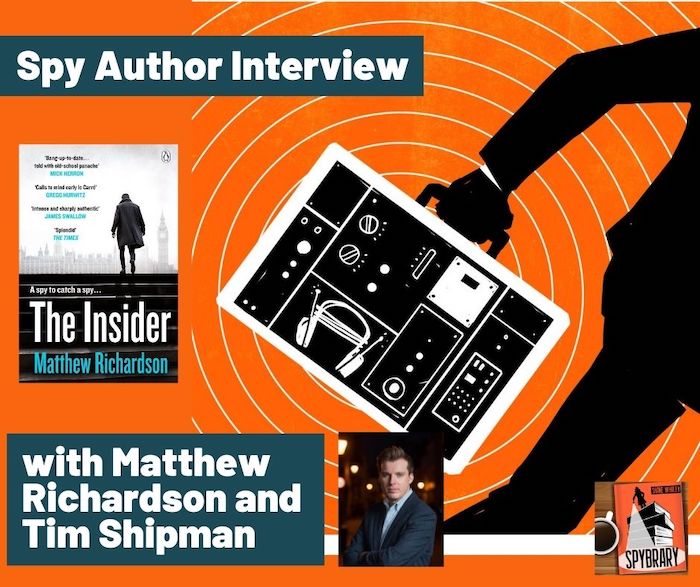
97. ALEX BERENSON
Active: 2006-18
Key works: The Faithful Spy, the Ghost War
Alex Berenson was a reporter for the New York Times before he began a series of 12 novels featuring John Wells, billed in the opener, The Faithful Spy, as the only American ever to penetrate al Qaeda. That won the Edgar Award for a best first novel.
There followed thrillers which touch on Iran and Russia as well as a return to Afghanistan. But the reason Berenson is here is that he writes about the war on Islamist terror with a subtlety that is not often found elsewhere. I think that period was generally bad for spy thrillers as the enemy was much more difficult to humanise and empathise with than during the Cold War. Many big-name writers tried it and to my mind failed badly. Berenson has done it as well as anyone, frankly.
96. JIMMY SANGSTER
Active: 1967-8
Key works: Private I (aka The Spy Killer), Foreign Exchange
Jimmy Sangster penned nine books, of which two were espionage novels featuring John Smith, a former spook working as a private eye, who is sucked back into the spy business. In Private I Smith does a simple job for his ex-wife and becomes embroiled in a three-way dice between British, Russian, and Chinese intelligence. In Foreign Exchange, he is forced to pretend to defect to Russia to send them duff intelligence, a book which ends with a twist on the last page. These are gritty, hard-boiled books, but also wryly funny.
95. TOM BRADBY
Active: 1998-
Key works: Shadow Dancer, Secret Service, Double Agent, Triple Cross, The Master of Rain
Tom Bradby, now the main anchorman for ITV’s News at 10 is a man of many parts: a journalist who covered politics, the royals, Northern Ireland and the far east, experience he then put to good use in a series of successful thrillers. Shadow Dancer, his first, was praised as one of the best thrillers about the Troubles since Harry’s Game and Bradby adapted it himself for the 2012 film of the same name, which is even better.
The Master of Rain is more detective than espionage but is a brilliant evocation of Shanghai when it was a crossroads for international espionage. More recently he has turned his hand to a trilogy where spying is more central, which begins with the premise that the incoming British prime minister is a Russian mole. Bradby says his next book, Yesterday’s Spy, which features an aging spook whose son has disappeared, which is published in May 2022, is his favourite of all his books.
94. STEPHEN COULTER AKA JAMES MAYO
Active: 1964-77
Key works: The Soyuz Affair, Threshold, Hammerhead, Let Sleeping Girls Lie, Shamelady.
It was perhaps inevitable that Stephen Coulter would create a spy series. He served in naval intelligence during the Second World War, then became a reporter for Reuters and then The Sunday Times. Remind you of anyone? Coulter was, in fact, friends with Ian Fleming and helped him with some background for Casino Royale. Coulter’s character, a transparent Bond clone, was Charles Hood, an art connoisseur and British spy who first appeared in 1964 as the Bond film boom led publishers to seek out anyone with an action man agent. One reviewer described the books as “James Bond with the volume turned up to 11”. These are a decent diversion, but the experts, Mike Ripley among them, think his “outstanding” spy thriller The Soyuz Affair (1977) is his best work and once I’ve read it he might move higher up this list.
93. GEOFFREY OSBORNE
Active: 1968-74
Key works: The Power Bug, Balance of Fear, Checkmate For China, Traitor’s Gate, Death’s No Antidote, A Time for Vengeance.
Osborne’s series of six thrillers about British agents Dingle and Jones were another discovery via Spy Guys & Gals, where Randall gives the series an A minus. These are towards the action end of the espionage spectrum, though their appeal comes from two strong characters, who meet in the first book and a degree of ingenuity in solving problems, which include climbing a Himalayan mountain, seizing a ship from hijackers, plus missions deep behind the lines in Siberia, China and Berlin.
92. GEOFFREY HOUSEHOLD
Active: 1939-82
Key works: Rogue Male
How far up this list can you get with just one book? Certainly this far when the book is a 24 carat classic like Rogue Male, the story of a British sniper on the run after a botched assassination attempt on a unnamed European dictator, whose name presumably rhymes with Mad golf Pitler. It’s one of the great suspense books, though not strictly espionage, Rogue Male came out in 1939. Household followed it up with Rogue Justice, which pitches the sniper into the French resistance, a sequel which came a staggering 43 years later. There are other thrillers – Watcher in the Shadows, which pitches two hunters from intelligence against each other in the 1950s, plus two books featuring a character called Roger Taine – but Household is really only famous for his first outing.
91. ERSKINE CHILDERS
Active: 1903
Key works: The Riddle of the Sands
How far does one book take you? Fair enough. If you haven’t read The Riddle of the Sands, you are missing one of the very first spy fiction classics. It is the story of two young Brits on a sailing trip in the Baltic Sea who uncover a secret German plot to invade England. Like much of William Le Queux’s output it was written as a wake-up call to the British government about the threat from the Kaiser. Unlike Le Queux it is well written and understated. Childers served in the Royal Navy during the First World War, winning a DSC at Gallipoli, and his knowledge of the sea shows. The nautical detail on the shifting sandbanks the heroes have to navigate is highly praised by sailors. The author didn’t long appreciate what he had achieved. Childers became a supporter of Irish Republicanism and smuggled guns into Ireland in his sailing yacht Asgard. He was executed in 1922 by the authorities of the Irish Free State during the civil war.
90. HOLLY WATT
Active: 2019-
Key works: To the Lions, The Dead Line, The Hunt and the Kill.
Are these spy fiction? Not, strictly. But there is much in common between undercover journalists operating with subterfuge on their wits and a secret agent in the field in hostile surroundings. Holly Watt has conjured three diamond sharp thrillers and is fast becoming one of the most acclaimed young writers in Britain.
Her first, To the Lions, won the Crime Writers Association Ian Fleming Steel Dagger, which many successful novelists never win and the follow-up was long-listed. The reason for the success of these books is that Holly has written one of the best female leads in contemporary thrillers.
Casey Benedict is an investigative hack, who specialises in exposing the worst characters. To the Lions featured a hunt with humans as prey, The Dead Line looked at sweat shops and The Hunt and the Kill took on pharma. These books are sweat to the palms tense and the journalistic tradecraft is totally authentic as Holly was for years one of the leading investigative journalists in the land. She spent a few months covering Westminster politics, my stomping ground, and we became pals. I think she was a bit mystified by why I got such a kick out of the personality politics of SW1. She was always pretty secretive about what she was up to outside of the House of Commons and guarded her image closely since she was risking her safety undercover a lot.
The principal pleasure for me in these books is in learning about her skillset and the nerves of steel missions like this take. All I needed was a plausible manner and an ability to handle myself on half a bottle of wine over lunch. If you love the tension of espionage, these books will truly tickle the same adrenaline ducts. And one day, if Casey Benedict is ever hired by MI6, she might give us a traditional spy book.
89. DAVID DOWNING
Active: 2007-
Key works: Zoo Station, Silesian Station, Lehrter Station, Jack of Spies
David Downing has a strong following with his seven book saga on journalist John Russell before, during and after the Second World War. Each of them is named after a station. Fans like the period detail and the story of a man thrust into the mess of great events just trying to survive, along with his son and his girlfriend. Russell finds himself frequently playing off the NKVD against the OSS/CIA and the Gestapo in order to survive. They are literate but have a decent narrative force. I’ve only read two or three of them but Downing has contributed a great deal to the spy world. In 2013 he began a second series, with Jack of Spies, about the early days of British intelligence around the time of the First World War. I’ve never felt Downing quite rises to the heights of the greats, but there is a substantial body of work here which is well worth seeking out.
88. JOHN TRENHAILE
Active: 1981-94
Key works: The Man Called Kyril, A View From the Square, Nocturne for the General, Krysalis, The Mahjong Spies
Trenhaile was a big noise in 1980s spy fiction, though he seems somewhat unjustly forgotten these days. He wrote two trilogies, the Kyril saga and another set in the far east, of which The Mahjong Spies is the first. The three Kyril books are a satisfyingly labyrinthine tale of double and triple agents. Kyril is the codename for a Soviet agent assigned to identify a British mole in the KGB. To do so, he must convince the British that he is a double agent. Meanwhile, a member of MI6 is really a double himself. You get the picture. The series is sufficiently ambiguous that it is never quite clear who is playing who. Trenhaile’s fame derived from a really very good TV adaptation of the books, screened in 1988, which featured a top notch cast of some of the best British character actors of the day: Edward Woodward, Denholm Elliott, Ian Charleson and Joss Ackland. Be warned, the four part series was edited down to a two hour film in the US.
87. DUNCAN KYLE
Active: 1971-93
Key works: A Cage of Ice, A Raft of Swords (aka The Suvarov Adventure), Terror’s Cradle, In Deep (aka Whiteout)
Kyle is one of those authors who would be much higher if this was a list of general thriller writers. He is up there with Maclean, Bagley, Innes and Lyall as an adventure writer of the first rank despite having been largely forgotten. Inevitably, some of his characters find themselves embroiled in espionage, including the protagonist of his first book, A Cage of Ice, who ends up joining a CIA rescue mission in the Soviet-controlled Arctic, Terror’s Cradle where the hero’s girlfriend has become mixed up in the smuggling of microfilm desired by both the KGB and the CIA and Raft of Swords, which features half the world’s spies swarming around a peace conference.
86. FRANCIS BEEDING
Active: 1928-46
Key works: One Sane Man, The Four Armourers, The League of Discontent,
“Francis Beeding” is the pseudonym used by John Leslie Palmer and Hilary St George Saunders, chosen because Palmer always wanted to be called Francis and Saunders had once owned a house in the Sussex village of Beeding.
They worked together at the League of Nations and began to write detective stories in the late 1920s. In 1928 they created the character of intelligence chief Alastair Granby, who starts as an agent and rises to run the secret service. Experts say these have aged better than Dennis Wheatley’s output, though they are a product of their time, warning about the danger to peace in the run up to the war from all sorts of dictators, arms manufacturers and plotters across Europe. Granby works for stability and peace (as the authors doubtless saw themselves doing), trying to stop plots to overthrow governments abroad.
During the war Brendan Bracken, Churchill’s protege, who took over the Ministry of Information, hired Palmer and Sauders to write for the government. One of my favourite first editions is a copy of Eleven Were Brave, which was written in 1940 and deals with fifth columnists in France as the Nazis approached Paris, inscribed to Bracken and signed by both authors and their pseudonym. Well worth a try and if you like them (Randall Masteller gives the series an A+) there are 17 of them. Certainly they should be better known.
85. JACK HIGGINS
Active: 1962-2014
Key works: The Eagle Has Landed, Touch the Devil, A Prayer for the Dying,
Higgins (whose real name was Harry Patterson and who also wrote under the pseudonym James Graham) sold far more books than most people on this list and for a while he was part of a wave of powerhouse British thriller writers including Frederick Forsyth and Ken Follett who took the fight to the Americans with novels pitched somewhere between the classic British actioneers of the 1960s post-Bond boom and the modern US special forces books.
The Eagle Has Landed (1975) is a classic story, well told and a very good film. It has sold more than 50 million copies in 43 languages. One week after it was published Higgins’ accountant phoned him to say it had already made him £1 million.
The Night of the Fox, a twisty tale with an interesting premise, but a pretty poor mini series also had elements of deception and espionage, though they are principally war stories, not spy stories. The same character, Liam Devlin (Donald Sutherland in the film) appears in Touch the Devil and Confessional, both of which feature the Irish nationalist sent into an intelligence battle with the KGB. Sean Dillon, another Irish gun for hire, is the hero of another 20-odd books which primarily features terrorism and assassination plots.
84. ANDREW WILLIAMS
Active: 2009-
Key works: Witchfinder, The Interrogator, The Poison Tide, To Kill a Tsar
Williams was for 20 years a maker of history and current affairs documentaries for the BBC but, after knocking out a couple of well received non-fiction books on the Second World War, he is now making quite a name for himself in the thriller world.
His first historical novel, The Interrogator, is an interesting take on the intelligence battle in the Atlantic war and was shortlisted for both the Ian Fleming Steel Dagger and the Ellis Peters Historical Award. His second, To Kill A Tsar got another Ellis Peters nomination and the Walter Scott Prize for Historical Fiction. I found The Interrogator pretty gripping, the latter disappointingly episodic.
His masterpiece so far, though, is Witchfinder, which brilliantly captures the paranoia inside British intelligence after Kim Philby’s defection and the mad rabbit hole Peter Wright and his ilk descended, turning on their own like Roger Hollis. It’s wonderfully atmospheric, with beautifully drawn characters. It’s a must for all Spybrarians.
83. ADAM DIMENT
Active: 1968-71
Key works: The Dolly Dolly Spy, The Great Spy Race, The Bang Bang Birds, Think Inc
Philip McAlpine is brilliantly described by someone on GoodReads as “the spy Austin Powers wanted to be”. He is the hipster hero of four books by Adam Diment, who for four short years was the coolest dude in spy fiction. Diment’s books combine the wry humour of early Deighton with the sexual cynicism of Bond, with added drugs and rock ‘n’ roll.
The plots are somewhat implausible but the writing, for what it is, is clever. These are time capsule pieces, the perfect encapsulation of swinging London, but the attitudes are of their moment. Many will find the overt racism offputting. McAlpine would have been in trouble from MeToo as well. But if you’re looking for a light-hearted but enjoyable amuse-bouche between meaty books, these are perfect.
David Hemmings was supposed to play McAlpine but the film never got made. To add to their allure, Diment led the life himself, driving an Aston Martin DB5 and dressed like Jason King, before disappearing to become a recluse in the 1970s and, depending on which internet rumour you believe, lived quietly in Kent, blew his mind on drugs, or secretly kept writing.
Further Reading:
Esquire article on Adam Diment – The Extraordinary Case Of The Missing Spy Novelist
82. OWEN MATTHEWS
Active: 2019-
Key works: Black Sun, Red Traitor
I’ve read both of Matthews’ thrillers in the last month. They are of considerable quality, with an interesting, flawed KGB operative hero, who wrestles with a deliciously sinister boss, his libertine wife and his own demons. Both books are highly original riffs on real events.
Black Sun sends Alexander Vasin on a hugely atmospheric mission to the closed city where Russia’s hydrogen bombs were developed and features a physicist modeled on Andrei Sakharov. It’s a murder mystery but leavened with enough internal KGB-GRU intrigue to justify its place in this list.
Red Traitor is a gripping foray into the Cuban Missile Crisis, which combines an imaginative reworking of the Penkovsky case and a chilling insight into real-life events on a Russian submarine armed with a nuclear torpedo that was sent to challenge the American blockade with orders to fire. The writing is assured and reminiscent of other historic espionage authors like Paul Vidich and Joseph Kanon. Matthews is half Russian, speaks the language like a native, and was Moscow bureau chief for Newsweek so his drab Russian streets are pitch-perfect. If he keeps at it Matthews has the potential to trouble the top 40 of this list. If that is not enough he is also the author of the definitive English language work on Richard Sorge, Stalin’s Second World War master spy.
81. KINGSLEY AMIS
Active: 1965-68
Key works: Colonel Sun, The James Bond Dossier, Man With the Golden Gun, The Book of Bond
Amis is one of the greatest writers on this list though clearly not one of the greatest spy writers. But he has several claims to inclusion. As an admirer of Ian Fleming, he was probably the first serious figure to take Bond seriously. Amis wrote the James Bond Dossier under his own name and The Book of Bond, or, Every Man His Own 007, a tongue-in-cheek how-to manual about being a sophisticated spy, under the pseudonym “Lt Col. William (‘Bill') Tanner”, who was M's Chief of Staff in many of Fleming's novels.
When Fleming died just as he was finishing The Man With the Golden Gun, it is said that Amis helped to give it a pre-publication polish. This culminated in 1968 when Amis, under the pseudonym “Robert Markham” published Colonel Sun, the first – and for my money, the very best – Bond continuation novel. It’s got a nasty villain, a sexy girl, and a hero who is at the crueler darker end of Fleming’s spectrum. Where others have left their own imprint on Bond, Amis was the most successful at emulating Fleming’s Bond, indeed I would rank it ahead of pushing half of Fleming’s books.
80. Robert Wilson
Active: 1995-2015
Key works: The Company of Strangers, A Small Death in Lisbon
Wilson is a very talented crime novelist. His Bruce Medway series, set in Africa, is reminiscent of Gavin Lyall. His Javier Falcon detective series, set in Seville, has won numerous awards and became a TV series. But he’s here because of two very accomplished, split time historical thrillers. A Small Death in Lisbon won the CWA gold dagger in 1999. It’s a murder mystery, with the timeline switching between Lisbon in 1941, when the city was awash with spies and the SS were in town trying to buy up vital supplies of Tungsten, and Lisbon in 1999 where a murder is linked to old events as the country emerges from the Salazar dictatorship.
Even better, and definitely, a spy novel (one of my favourites to boot) is The Company of Strangers, which pitches a Portuguese woman into the maelstrom of wartime spying, alongside a Nazi double agent, and then follows her into the Cold War. It’s really good and ought to be much better known.
79. Desmond Cory
Active: 1951-71
Key works: Undertow, Hammerhead aka Shockwave, Feramontov, Timelock, Sunburst
Cory was the pen name of the prolific Shaun Lloyd McCarthy, who wrote 45 novels and gave the world Johnny Fedora, a superspy with a license to kill who pre-dated James Bond by two years. One critic described him as “a much more violent, sexy, and lucky agent than James Bond”. The first three all involve Fedora thwarting neo-Nazi movements and there is a sense among the critics that early Fedora has not aged well. However, Cory’s final five books, which form a spy symphony called the Feramontov Quintet, are of higher quality and that’s where I’ve focused my reading energies. Feramontov, a stunted Russian, is a worthy adversary and the books are more stylistically close to the intelligent thrillers Spybrarians enjoy than the brisk adventures of the early years.
78. James Grady
Active: 1974-2015
Key works: Six Days of the Condor
Grady has written 15 novels, but I must confess I’ve only read one of them: Six Days of the Condor. But it’s a belter and gets him this high on its own. It tells the suspenseful story of a minor CIA operative who goes out one lunchtime and returns to find his workmates slaughtered. When he tries to seek help from an emergency number there is an attempt on his life. It’s a real nerve shredder.
The book became a film, Three Days of the Condor, starring Robert Redford, which is one of the cornerstones of 1970s post-Watergate paranoid thrillers. Two sequels followed, Shadow of the Condor (1976) and Last Days of the Condor (2015) but I haven’t read either of them yet. If you’ve only watched the film, give the book a go, it’s rightly a classic.
77. Ian McEwan
Active: 1990-2012
Key works: Sweet Tooth, The Innocent
Another literary novelist who has tried his hand at espionage. Unlike Sebastian Faulks, an author I usually like, but whose attempt at a Bond novel reads like a literary novelist who thinks writing a thriller is easy and somewhat beneath him, McEwan has twice come up with a winner, perhaps because he treated the subject matter like any other subject for literary examination.
The Innocent is a twisty gripper of a book, which embroils a naive telecoms worker in the 1950s tunnel the allies built under the Russian sector of Berlin to tap their communications. He falls for a German woman and his two worlds collide. Sweet Tooth, which came two decades later, pitches a female lead recruited by MI5 in 1972 to penetrate the circle of a rising young writer as part of the intelligence effort to shape the cultural conversation. Then she falls for him. Again, it’s high-quality stuff. If he’d written four like this he’d be way higher.
76. Anthony Horowitz
Active: 2000-
Key works: Trigger Mortis, Forever and a Day, Stormbreaker
Like Amis, Horowitz is here primarily because he is the keeper of the Fleming flame. His two, soon to be three, Bond novels are, for my money, the best and certainly the most faithful homages/additions to the Fleming canon since Colonel Sun. He gets extra points for inserting his works into the existing timeline. There’s no Daniel Craig’s separate cinematic universe here.
Horowitz has two other major strings to his bow. He created the TV drama Foyle’s War which, after Morse had finished, was the best detective drama on British television and included a heap load of espionage plots as well. And Horowitz is also a talented writer for children and his Alex Rider series, about a boy recruited by MI6, runs to 12 books in 20 years. I haven’t read them yet but look forward to doing so when my children are old enough.
75. William Boyd
Active: 2006-
Key works: Restless, Solo, Spy City, Waiting For Sunrise
Like McEwan, Boyd is a “proper” novelist, unlike McEwan he has begun to do a little more than dabble in espionage fiction, finding in it some of the human drama, romance and betrayal that is the stock of literary writers, but perhaps too some pretty decent book sales.
This process began with Restless in 2006 and continued with Waiting for Sunrise. These books impressed the Fleming estate enough that he was commissioned to write Solo, which came out in 2013, sending Bond into a fictionalized version of the 1960s war in Biafra. Some love it, some hate it.
Boyd is also a talented screenwriter, penning the script to the film of Restless and he created the 2020 espionage TV series Spy City, which tells of a molehunt in the British embassy in Berlin in 1961 just as the Berlin wall was about to go up. Let’s hope he has another crack at an espionage thriller since he seems to like and respect our genre.
74. Martin Cruz Smith
Active: 1981-2019
Key works: Gorky Park, Polar Star, Wolves Eat Dogs, Stallion Gate
Another author who is hard to rank, since he is essentially a crime writer, but his main character, Arkady Renko, one of the greatest and best drawn in modern detective fiction is a Russian, who has more than a few run-ins with the KGB and whose work crosses genres.
If I were ranking him as a crime series he would be much higher, but this seems about right when compared to the specialist spy writers who follow. Gorky Park is a classic, which has the vibes of an espionage book though the resolution is not spy related. Polar Star, where Renko is exiled to an Arctic factory ship is even more thrilling. Cruz Smith wrote some stand alones, which have more explicit espionage links, including Stallion Gate, set in the run up to the Los Alamos atom bomb test, but it is not a patch on Joseph Kanon’s Los Alamos.
73. Victor Canning
Active: 1934-85
Key works: The Rainbird Pattern, Firecrest, Birdcage, The Doomsday Carrier
Canning was a ludicrously prolific crime writer, some of whose best work is in the spy genre. In the 1960s he wrote a series of books about Rex Carver, a private investigator who does jobs on the side for the secret service. But Canning’s real purple patch began in 1971 with Firecrest, the first of eight books about Birdcage, a sinister subsection of the British intelligence community. There are a few recurring characters but the agency is the one looming presence, the plots usually about hunting down people going rogue or information coming out (or in one case a plague-carrying chimp).
Critics say his best is the Rainbird Pattern, which I enjoyed, and which won the CWA silver dagger (it was runner up to Ambler’s The Levanter). That book became Family Plot, Alfred Hitchcock’s last film. These are not traditional linear spy thrillers but Canning was an experienced craftsman and they are worth seeking out.
72. Evelyn Anthony
Active: 1953-2005
Key works: The Defector, The Avenue of the Dead, Albatross, The Company of Saints
It is said that Evelyn Ward-Thomas took the pen name Anthony because she wanted to sound more masculine in order to get published, but her virtue actually is that she wrote credible female leads before that was popular in spy fiction. Her early output veered towards romance, with espionage links and she never quite lost that combination of romance and spying (The Tamarind Seed), But, like Helen MacInnes, she wrote effective wartime thrillers laced with spying (The Occupying Power, The Rendezvous).
The place to start, though, is her rather good four-part series about Davina Graham, a female spy sent to interrogate a Russian defector who then falls for him in The Defector, before the series escalates into classic mole hunt territory (The Avenue of the Dead, Albatross) before culminating in a terrorist plot with The Company of Saints.
71. Kenneth Benton
Active: 1969-75
Key works: A Spy in Chancery, Sole Agent, Craig and the Jaguar
Benton was recruited by MI6 in the 1930s and spent the war in Spain, where he was in charge of the counter-espionage unit tracking German spies. After the war, he stayed in Madrid under Kim Philby, an association that ended his career as a covert operative when Philby defected, though he stayed with SIS for some years afterward. Benton penned an enjoyable series about Peter Craig, a police liaison spook skilled in counter terrorism.
The first book, The 24th level, is not a spy book at all, dealing with Craig crossing swords with a diamond syndicate in a mine in South America. But the next two, Sole Agent and particularly A Spy in Chancery, which deals with a mole hunt in the British embassy in Rome, are core Spybrary. Further adventures followed, involving the kidnapping of the niece of the head of MI6 in Peru, Craig’s own capture by Tunisian revolutionaries, and a Saudi Arabian murder mystery. Another effort featuring the defection of a scientist and KGB assassins was published posthumously as an e-book in 2012 (Vengeance in Venice). Craig is an understated but impressive hero and Benton’s experience gives the books an authentic ring.
70. John R. Maxim
Active: 1989-2003
Key works: The Bannerman Solution, The Bannerman Effect, Bannerman's Law, Bannerman's Promise, Bannerman's Ghosts
Maxim is someone I discovered through Spy Guys and Gals, where Randall Masteller gives his series about Paul Bannerman, who runs a group of freelance secret agents, an A++ grade. There are five Bannerman books and four more spun off about other characters in his group, notably assassin Elizabeth Stride.
The first book starts with a great premise, that a bunch of retired spies, killers, and pavement artists all live together in a small town in America, quietly dealing with the local bad guys in their own way. Then the CIA’s head of operations decides to do something about it, which provokes battles of wits, wills, and guns.
Bannerman’s gang of misfits is hugely resourceful and the man himself is gifted with a great tactical brain that devises twisty and amusing ways to get the better of those the group runs up against. The best way to describe them really is that they are the best eccentric ensemble cast in spy fiction before Mick Herron created the Slow Horses. If I’d read more than a couple, I might well push him quite a bit higher on this list.
70. John R. Maxim
Active: 1989-2003
Key works: The Bannerman Solution, The Bannerman Effect, Bannerman's Law, Bannerman's Promise, Bannerman's Ghosts
Maxim is someone I discovered through Spy Guys and Gals, where Randall Masteller gives his series about Paul Bannerman, who runs a group of freelance secret agents, an A++ grade. There are five Bannerman books and four more spun off about other characters in his group, notably assassin Elizabeth Stride.
The first book starts with a great premise, that a bunch of retired spies, killers, and pavement artists all live together in a small town in America, quietly dealing with the local bad guys in their own way. Then the CIA’s head of operations decides to do something about it, which provokes battles of wits, wills, and guns. Bannerman’s gang of misfits is hugely resourceful and the man himself is gifted with a great tactical brain that devises twisty and amusing ways to get the better of those the group runs up against. The best way to describe them really is that they are the best eccentric ensemble cast in spy fiction before Mick Herron created the Slow Horses. If I’d read more than a couple, I might well push him quite a bit higher on this list.Right, people, the list is back…by popular demand
69. Nelson De Mille
Active: 1974-
Key works: The Charm School, The Lion’s Game
There are not many blockbuster, global spy/action US authors on this list and I want to fit in one more before the obvious big two. Nelson De Mille is not an espionage specialist but he has a few notable books which touch on our genre.
The Lions Game is overlong but a warning about the vulnerability of America to Arab terrorism before 9/11 ever happened and it is spooky to re-read now. The same lead character, the wisecracking John Corey, is also in Plum Island and Night Fall, which are nothing to do with spying but among his highest rated novels.
My two favourites are stand alones, though. By the Rivers of Babylon, where a bunch of Israelis who survive a plane crash, stage a Rorke’s Drift-like defence against a bunch of Palestinian commandos, is very exciting and rather moving. But the reason the author is here is The Charm School (1988), which is a genuinely very high quality spy yarn, which spins a thriller around the notion of a Russian facility that trains KGB operatives to think and behave like Americans to infiltrate the US. Anyone who has watched the TV series The Americans will be familiar with the idea, but this was original when written and is still highly recommended.
68. David McCloskey
Active: 2021-
Key works: Damascus Station
I’ve thought long and hard about whether it is right to place someone this high on the basis of one book, and a book I’ve only just read at that, where the passage of time has not tested how enduring the work is when memories fade. But Damascus Station, the debut of McCloskey, a former CIA man, is the best spy thriller I’ve read in the last year and as a modern debut only perhaps Red Sparrow gripped me in quite the same way.
This is a book that illuminates a complicated conflict in a humane way. It is riddled with authentic tradecraft and features a well-drawn female double agent, who is both intriguing and sexy as hell. Best of all, the really bad villains are vile while many of the others come with their own shades of grey, which illuminate a regime which traps as many of its members as its opponents in a cycle of miserable depravity.
It would be understandable if McCloskey fails to touch these heights again, and he may drift downwards in future, but if he nails a second of this quality he will be jumping considerably higher. Call this a holding slot, but the praise the book has been getting is justified and I can’t wait to read what he comes up with next. I’m putting him here because he represents something of a tier break. I’m excited about what follows because from here on in we really are entering the cream of the crop.
67. Yulian Semyonov
Active: 1966-90
Key works: TASS is Authorised to AnnounceA fair assessment of Semyonov, arguably Russia’s greatest spy/detective writer, is necessarily constrained by the few books of his which have been translated into English.
Best known, of course, is Seventeen Moments of Spring (1969), which features a Soviet agent (Stierlitz, an amalgam of real life agents) impersonating a Nazi inside Hitler’s inner circle at the end of the Second World War. The TV series (1973) is among the most beloved ever screened in Russia, an archetype of the underside of the Great Patriotic War – and it has huge admirers in the Spybrary community, particularly Clarissa Aykroyd.
There were 12 books in the series. The only other one of his I’ve read is a stand alone called TASS is Authorised to Announce (1977), the plot of which concerns the hunt for a CIA spy in Moscow in the 1970s. It is an interesting inversion of the usual memes of wicked Russians and virtuous Westerners. Some of it is a little crude, and i would argue less well-informed about Western society than Anglo-American writers are about the Russian world, but all Spybrarians should try a book like this to understand how “the other side” sees us.
66. Robert Ludlum
Active: 1971-2006
Key works: The Bourne Identity/Supremacy/Ultimatum
This ranking will annoy almost everyone, but particularly my friends Matthew Bradford, who would put the inventor of the globetrotting action/espionage thriller much higher, and Jason King, who believes Ludlum’s doorstoppers are best deployed as alternatives to firewood.
To me, Ludlum is a nice idea, the founder of an entire genre of sprawling seventies epics, but all too often the reality is cardboard characters, expository dialogue, repetitive language and forests of words that could be trimmed. I must admit I haven’t read a lot of what are regarded as his better works (Matthew recommends The Chancellor Manuscript and The Road to Gandolfo, which shows that Ludlum was capable of satirising himself, while The Matarese Circle seems well regarded too).
All that said, The Bourne Identity is a stone cold classic, with one of the great opening premises (man wakes up with amnesia and gradually begins to realise he is a trained killer). Some think the Bourne Supremacy even better. The films are also superior, for the most part, than their Bond contemporaries. Love him, hate him, you need an opinion on him. Try him.
65. Owen John
Active: 1966-76
Key works: 30 Days Hath September, A Beam of Black Light, Dead on Time, The Shadow in the Sea
John (Real name Leonard Owen-John) was a Welsh thriller writer who penned seven quality thrillers about Haggai Godin, a Russian-born spy for MI6, who is a mysterious tactical mastermind. Wikipedia describes him as both “hard boiled” and a “bon vivant”, which is right.
In these books, again unfairly forgotten (except by Randall Masteller who put me on to them) he joins forces with CIA man Colonel Charles Mason. John writes masterful and bloody action sequences and knows how to crank up the tension but these books are much more than that. The Goddin-Mason double act is excellent and there is a great deal of psychological tension.
The first book, 30 Days Hath September, features a chilling depiction of a captured American scientist going mad under torture by his Chinese captors before Goddin hoves into view. Quality tales of the old school which surprise pleasantly with their depth and characterisation.
64. Andrew York
Active: 1966-75
Key works: The Eliminator, The Deviator
York was one of many pseudonyms of the highly prolific Christopher Nicole, one of those thriller writers who ground out book after book (around 200 in total) every year in the heyday of British thriller writing but has been unjustly forgotten by many.
Under his own name, Nicole wrote four good wartime thrillers set in the Balkans (Partisan is the first) and four more on SOE and the French resistance, which veer more into our terrain (try Resistance). There are another nine books in the Angel series, which feature a Nazi sniper who is a double agent for the British (start with Angel From Hell).
As Andrew York he wrote four books about Tallant, the police commissioner from a Caribbean island, which are fun. But Nicole/York’s finest hour is the Jonas Wilde series, which features the titular assassin of the British government.
Their titles are descriptively muscular: The Eliminator, The Dominator, The Predator etc. For me, Wilde is the high point of the post-Bond solo spy-action hero, Bond-alternative genre. Wilde is more sardonic than Bond, the women are often better drawn and feistier, the locales exotic, the double-crosses plentiful. After the first book, my favourite (and the most Spybrary-friendly) is The Deviator, where Jonas crosses sniper rifles with the KGB. These are serious fun and really well crafted by an author who clearly understood the art of thriller writing.
63. David Brierley
Active: 1979-96
Key works: Big Bear Little Bear, Cold War, Czechmate, Blood Group O, One Lives One Dies, On Leaving a Prague Window, Shooting Star
Brierley created Cody, one of the very best female leads in spy fiction. She is a CIA trained agent who has gone freelance, who we first meet in Cold War, a 1979 novel set in the midst of a French election, which involves assassination, betrayal, and real tension (It scores 4.14 on GoodReads, which is much higher than a lot of books I love).
Cody is resourceful and Brierley was hailed on publication as “a new name joins the world’s greatest spy fiction writers”. Best of all his books are not long and written with a spare and unflashy style that nonetheless has real novelistic flair.
This is espionage for grown-ups. Blood Group O, Skorpion’s Death and Snowline followed. Between those Cody books, Brierley also became renowned for spy thrillers set in Eastern Europe, such as Czechmate.
His best book, though, is Big Bear Little Bear set in 1948 Berlin, before the airlift, where the sole survivor of a blown network works to expose a traitor in British intelligence. My paper, The Sunday Times, reviewed it thus: “ Has the rancid strength of a distillation of the best of Le Carré and Deighton: an authentic winner.” That this praise is only slightly excessive tells you what you need to know.
62. Warren Tute
Active: 1969-77
Key works: A Matter of Diplomacy, The Powder Train, The Tarnham Connection, The Resident, Next Saturday in Milan, The Cairo Sleeper
Tute served in the Royal Navy during the war and made a name for himself penning well-regarded non-fiction about aspects of the conflict afterward. His entry here comes from a six-part spy thriller cycle he penned in the 1970s, known as the Tarnham spy thrillers, since they revolve in part around Elissa Tarnham, the wife of a British defector to the Soviets.
The first book, A Matter of Diplomacy covers a visit she makes to Greece, where the intelligence agencies don’t know if she is about to defect too. The other five volumes build on the story but focus on George Mado, a hard fighting, hard drinking former MI6 man who is called into action to cross paths with moles, defectors, the mafia and the KGB. These are unflashy but extremely well put together.
They are mysteries and puzzles, with well drawn characters, rather than shoot-em-ups, weighing in at around 200 pages each, how books used to be.
61. William Haggard
Active: 1958-90
Key works: The Powder Train, The Power House, The Conspirators, The Hardliners, A Cool Day For Killing, Visa to Limbo, The Powder Barrel
Richard Henry Michael Clayton wrote using his mother’s maiden name, which also happened to be the name of his fifth cousin, H. Rider Haggard, he of King Solomon’s Mines fame. Like Tute, his stock in trade is the slow burn, serious, political espionage thriller. In three decades, Haggard turned out 25 books featuring his intelligence chief Charles Russell. A lot of the action here is in Whitehall, an environment Haggard knew well as a longtime civil servant, who appears to have spent at least part of his career in the secret world.
Existential Ennui informs us: “Haggard's own view of his books, which he shared in a letter to Donald McCormick for McCormick's 1977 survey Who's Who in Spy Fiction, was that they were ‘basically political novels with more action than in the straight novel’.
As the Independent put it in his obituary: “His grasp of plot, pace, suspense and set-piece action was, especially in his earlier days, pretty nearly without flaw. He was very good indeed at the labyrinthine, the plot that twists, turns, coils and convolutes, then doubles back upon itself and eventually vanishes up its own jumping-off point.” If the prospect of a Whitehall procedural sounds stuffy, that’s not really the vibe of this series. While Russell (like Haggard) is a bit of a political reactionary, several of the plots involve new scientific techniques and weapons (The first two involve a new form of nuclear energy and negative gravity) with Britain frequently caught in the rivalry between the Russians and the Americans.
Other books cover industrial espionage, defecting scientists, coups in the Middle East, hijackings, dodgy banks, the drug trade, and numerous plots involving politicians up to no good. These are period pieces but they are well done.
60. Anthony Hyde
Active: 1985-96
Key works: The Red Fox, Formosa Straits, China Lake
Anthony Hyde’s first novel, The Red Fox, is quite simply one of the best espionage/mystery thrillers I’ve ever read. It begins with the hero, journalist Robert Thorne, contemplating why his father committed suicide, before his ex gets in touch to say her father is missing. Thorne pursues the mystery and the missing man across time and continents, following clues that hark back to secrets of the Cold War, culminating in a denouement in the frozen wastes of the USSR. The first person narrative is beautifully judged, capturing Thorne’s articulate cynicism with regular revelations which drive the story forward. The Red Fox (1985) came out at the same time as The Little Drummer Girl and The Bourne Supremacy. It’s better than both of them. Hyde was swamped with critical praise.
The pressure of producing a follow up, that tricky second album, obviously told because it took seven years before he produced China Lake, which is not a patch on his first. Formosa Straits, four years later, was better but Hyde is essentially a one hit wonder. His brother Christopher Hyde also wrote a series of solid if unspectacular historical thrillers such as The Gathering of Saints and The House of Special Purpose.
59. David Quammen
Active: 1983-87
Key works: The Soul of Viktor Tronko, The Zolta Configuration
Quammen is better known as a writer on science and nature, where he has published more than a dozen books. However, he wrote one stylish and intelligent masterpiece that I would happily rank among my ten favourite spy thrillers, and just one other thriller (The Zolta Configuration) that doesn’t belong on the same shelf. In the same way that Tinker Tailor Soldier Spy is Le Carre’s response to Philby, Quammen’s The Soul of Viktor Tronko is the supreme response by an American author to one of the greatest mysteries in American intelligence history: the contradictory defections of Anatoly Golitsyn and Yuri Nosenko in the 1960s.
In the book Bogdan Fedorenko (Golitsyn) convinces the CIA there is a Soviet spy in their midst. He also claims the KGB would send a false defector to undermine him. The other defector Viktor Tronko (based on Nosenko) insisted that Russia had not placed a mole inside the CIA, and that Lee Harvey Oswald had not been recruited to assassinate JFK. Counter-intelligence chief Claude Sparrow (based on the real-life James Jesus Angleton), believes Fedorenko-Golitsyn and embarks on a witchhunt which tears the agency apart. Others go in to bat for Tronko, who is treated appallingly but never changes his claims.
The book begins with a journalist being visited by a CIA veteran who says he can help him get to the bottom of what really happened. He then turns up dead. What follows is hugely dialogue heavy, interspersed with some action, as our hack hero interviews Sparrow and others and we read the transcripts of Tronko’s many interrogations. On one level it is dry, but it provides an immensely rich puzzle and one which imbues Tronko with great humanity. the ending is worth the wait. It won’t be for everyone and Quammen admitted the book “sank like a hot pistol tossed into the Potomac” on its first release in 1987. But that phrase alone should tell you the guy can write. It was re-released in 2014 and is rightly finding a new audience. It’s now available on Kindle Unlimited. Those who want to hear me enthusing about Tronko some more can tune in to my Dead Drop Five episode on the Spybrary podcast.
58. Tom Clancy
Active: 1984-2013
Key works: The Hunt For Red October, Cardinal of the Kremlin, Patriot Games, Red Storm Rising
As recent discussion on the Spybrary Facebook group has shown, few authors divide opinion quite like Clancy, the master of the bloated techno spy thriller. In his defence Clancy’s hero Jack Ryan is not quite the full blown Kalashnikov Kid and 100 million readers can’t all be wrong. It is not true that all he does is wallow in technical detail, there is craft here too, not all the dialogue is dire and at his best Clancy gives you both the big geopolitical overview from the Oval Office and exciting frontline action. Red October, his first and best known work, was a great film because it boiled the essence of a flawed but, for my money, effective work.
Clancy’s success led to ever longer word counts and not as much editing as he needed. It is not a coincidence that the best of his later Ryan books, Cardinal of the Kremlin, is (at 400 pages) also the shortest. Perhaps Clancy’s most intriguing book, which isn’t a spy thriller, is Red Storm Rising, his second. It explains how a war between the US and the USSR might have played out and for that reason is a fascinatingly well-researched period piece. This ranking will be too high for some, ludicrously low for others.
57. Michael Hartland
Active: 1982-91
Key works: Seven Steps to Treason, The Third Betrayal, Down Among the Dead Men, Frontier of Fear, The Year of the Scorpion
Hartland (real name Michael James) was another of those writers who was briefly hailed as the hottest new thing in spy fiction. With a background in nuclear proliferation and counter terrorism, he penned six authentic espionage thrillers, starting in the early 1980s, all of which are supposed to be good, three of which are regarded as notable.
Hartland’s debut, Down Among the Dead Men, was a rare spy thriller set in the far east, featuring power plays between China and Russia over Hong Kong. It was endorsed by Ted Allbeury who praised its “rich variety of credible characters, a plot that really hums along and descriptions of far away places that make you reach for the travel brochures. All the signs of a future winner.” Perhaps his best book, Seven Steps to Treason, came next (later a BBC Radio 4 play). It features an SIS man under the cosh when his daughter is kidnapped by the Soviets, with betrayals old and new. It’s a nicely paced and convincing, with real human emotion. One review hailed it as “a cross between le Carre without the longeurs and Adam Hall with intellect,” which is justly complimentary to Hartland, if a little rude about those two titans of the genre.
Hartland’s recurring male character, David Nairn, is a little bloodless, but his GRU protagonist, Maj-Gen Nadia Kirova, is a welcome female opponent. Indeed Hartland’s books were notable for female characters as spooks rather than eye candy. Perhaps his most interesting novel is The Third Betrayal, which features the hunt for the fifth man in the Cambridge spy ring. A central character is Ursula Kuczynski, a GRU double agent who fled Britain in the 1950s, now well known to Spybrarians as Agent Sonya from Ben Mcintyre’s recent non-fiction book. Hartland travelled to East Berlin to interview Kuczynski and then made a TV documentary about her. He later recorded a series of interviews with Oleg Gordievsky.
56. Lionel Davidson
Active: 1960-94
Key works: Kolymsky Heights, The Night of Wenceslas
Davidson is one of the most decorated but hardest to pigeon hole thriller writers, but he began and ended his career as a spy writer. First up was The Night of Wenceslas, an Ambleresque tale in which an innocent abroad becomes embroiled in espionage in Cold War Prague, home to the eponymous square. This earned him the first of three Gold Daggers from the crime writers’ association (Le Carre and Ambler both only won it twice). He then turned to adventure tales with The Rose of Tibet and Long Way to Shiloh (which won him a second dagger) and then a detective story, The Chelsea Murders (his third). Wenceslas is taut and short and rather good, but for my money not a patch on Ambler’s pre-war output.
Davidson’s best book, for me, was his last, Kolmysky Heights, which came out in 1994, 34 years after his first. The plot concerns a cry for help from the director of a secret research facility in the frozen wastes of Siberia. The CIA recruits a native from the Bering Straits area (historic cousins of Russia’s Kolyma district) to first infiltrate the base and, when he is uncovered, to escape. Philip Pullman, no less, called it “the best thriller I have ever read”. I wouldn’t go that far but it is original, well written and gripping.
55. John Bingham
Active: 1952-82
Key works: The Double Agent, Vulture in the Sun, God’s Defector aka Ministry of Death, Brock and the Defector
John Bingham has two claims to fame for inclusion in a list of notable spy authors. The first is that he was an MI5 contemporary of David Cornwell’s and his stolid mien and belief in what the intelligence agencies were doing, morally (a contrast with the tortured Cornwell) meant that when his friend began writing thrillers Bingham became the model for one George Smiley Esq. Eventually, Bingham came to rather resent Le Carre’s depiction of moral relativism between West and East.
His second claim to fame is that he was a skilled thriller writer, mostly of detective yarns (My Name is Michael Sibley, A Fragment of Fear), but there were also four first-class spy novels, featuring intelligence chief Ducane. His best is The Double Agent, which actually opens with a foreword bemoaning the depiction of the intelligence services as “staffed by murderous, powerful, double-crossing cynics” or “bumbling, broken-down layabouts” – an anonymized complaint about Le Carre, three years after Spy Who Came in From the Cold was released. Vulture in the Sun, is also a tense and well-written story about Greek and Turkish battles over Cyprus. I haven’t read the other two yet, both of which feature “defector” in the title.
54. Ken Follett
Active: 1974-
Key works: Storm Island aka Eye of the Needle, Triple, The Key to Rebecca
Follett has managed to be one of the best selling thriller writers in the world for three decades. He’s back in the charts with a World War III novel, Never, after years of coining it with doorstep-like tomes of his Kingsbridge and Century series. But back in the day, Follett was also part of the British spy boom and frankly I hope he feels like doing a Davidson and heading back to productive pastures at the end of his career. Storm Island, which was renamed Eye of the Needle when the film came out, is probably the best espionage thriller set in the early part of the war in Britain (though John Lawton and Daniel Silva might have something to say about that). It won the Edgar award in 1979. The Nazi villain, who kills with a stiletto knife, is a great creation and the book, essentially a chase, is suspense of the highest order.
The Key to Rebecca, set during the war in North Africa, is an exciting, sexy, fictionalisation of the real life German spy, Johannes Eppler (whose story is also the basis of The English Patient) and is stylistically of a piece with City of Gold by Len Deighton and The God of Chaos by Tom Bradby. Between those two books, Follett penned Triple, about an Israeli agent racing to steal uranium so the Jewish state can match the nuclear ambitions of Egypt. Quite quickly the Palestinians and the KGB are on his tail. The cosmopolitan ensemble cast, complete with some well drawn and alluring female support, makes for a grown up thriller, which is my favourite of Follett’s.
53. Brian Garfield
Active: 1976-81
Key works: Checkpoint Charlie, Hopscotch
Garfield wrote 70 books and sold 20 million copies, the best known of which was Death Wish, which was made into the Charles Bronson revenge movie. He was a Pulitzer prize finalist for a history book and at the end of his career penned a non-fiction biography of the controversial British intelligence officer Richard Meinertzhagen, who worked with General Allenby during the Palestine campaign in the First World War. But two creations bring him high on this list.
The first was Hopscotch, a splendid spy thriller which won him the 1976 Edgar from the mystery writers of America. It features a CIA field man, Miles Kendig, who is about to be forcibly confined to a desk who goes on the run, writes an exposé and begins mailing chapters to the world's intelligence agencies. The CIA quickly wants him dead for exposing their secrets, and there are similarities here with Six Days of the Condor. A 1980 film followed starring Walter Matthau and written by Garfield.
Five years after Hopscotch, Garfield returned to the world he had created but with a new and greater creation. Kendig is only mentioned in passing, but his loathsome boss Myerson is back, this time in charge of Charlie Dark, one of my favourite characters anywhere in spy fiction. Charlie abhors violence but has a brilliant mind and outthinks his enemies. His adventures, originally for Ellery Queen magazine, were collected in a 1981 anthology, Checkpoint Charlie. In 12 riveting stories, Charlie outwits assassins, kidnappers, double agents, KGB rivals and Myerson. These are exquisitely plotted vignettes with a tremendously lead, who you cheer on and want to re-read. It is one of the three best collections of espionage short stories I’ve ever read. I first discovered Charlie by listening to Randall Masteller’s Dead Drop Five podcast for Spybrary. You should too.
52. Philip Kerr
Active: 1989-2019
Key works: A Quiet Flame, A Man Without Breath, Prague Fatale, The Pale Criminal, If the Dead Rise Not
Let’s be clear, if this was a list of my favourite fictional characters of all time, Bernie Gunther would be in my top five, and I’m not totally sure who the other four would be. If this was a list of my favourite thriller or detective writers Kerr would be in the top 10. That propels a series of 14 brilliant books, following an everyman cop/private detective/soldier through the Nazi period and on to post war Argentina, Cuba and the Riviera, close to the top 50 here, despite not one of them being a true espionage novel (though Prague Fatale, where Bernie is sent on a spying murder mystery by Heydrich comes close). But when you’re in the Kripo and then the SD and crossing paths with Heydrich, Canaris, Nebe and the other grotesques of the period, along with the KGB and CIA much later, there are enough espionage elements here to just about justify inclusion (and Kerr dabbled a bit elsewhere with The Shot and other standalone).
There is not a bad book in the Gunther series, though my favourite remains A Quiet Flame, which brilliantly combines the compromised hero with a dual time narrative and a plot which is more satisfyingly constructed than most. So he should be higher, or not here at all. Even I don’t like this ranking. Live with it.
51. Desmond Bagley
Active: 1963-85
Key works: Running Blind, The Tightrope Men, The Freedom Trap, The Enemy, High Citadel
Bagley is another who is impossible to rank. As a general thriller writer he is in the first rank and if we are talking adventure stories, I would rank him ahead of Kyle, Lyall and Mather and just behind Maclean. The Spoilers and particularly High Citadel stand comparison with anything Maclean wrote. But of Bagley’s 17 books only two that I have read could really be described as primarily driven by espionage. That said, Running Blind is an absolute classic, which also became a highly successful BBC mini series. It features an ex MI6 spook who is sent to deliver a parcel in Iceland. He has barely begun when he has to kill a KGB man who tries to take it off him. Quickly it is clear he has been double crossed and embarks on a race across the barren landscape (you can feel the bone cold and the crunch of scree), pursued by the KGB, the CIA and SIS colleagues who now think he has turned traitor. It’s gripping first person narrator stuff with plenty of action and a twist in the tail.
The tragedy is that this excellent book did not persuade Bagley to move full time into Spybrary terrain. The sort-of-sequel The Freedom Trap has one character in common and is loosely based on the jailbreak of double agent George Blake. It became the Paul Newman film, The Mackintosh Man. However, Bagley did write two more espionage based thrillers (which I have yet to read). The Tightrope Men, in which the central character wakes up with the face of another man, a scientist involved in the Cold War nuclear arms race, is regarded as one of his best. The Enemy also features an intelligence plot. That is enough to lift him to the very edge of the top 50.
The Top 50 Best Spy Writers. (according to Tim Shipman.)
Before I get started on the Top 50, a few notable statistics:
Between 125 and 51 there are 20 American spy authors (27%) In total there are 35 Americans (28%) In the Top 50 there are 15 American authors (30%)
Things are still moving around but I think it very unlikely there will be fewer than 3 in the Top 10 (also 30%)
When you take in the smattering of Russians, French and Israeli writers, that means more than 80 are British authors (over 65%). The Americans are weakened by my preference for the cerebral spy story over the lone special forces hero, but the higher numbers the higher you go does suggest that the better Americans are very able to compete with their British brethren in disproportionate numbers.
People are also wondering how the modern writers fare. There are at least 12 in the Top 50 (24%) who are fully live working authors who I would expect to see a book from in the next two years. By my count 28 in total (22%). There are a smattering more who are alive and kicking and who might yet also treat us to more.
I think this shows our genre is alive and well and that the next few years represent a new golden age of spy fiction.Now, on with the list.
Tim Shipman, January 27th, 2021
WILDCARD James Wolff
Active: 2018-
Key works: How to Betray Your Country, Beside the Syrian Sea
This is my first wildcard, noting authors I’ve read since I finalised the names on the list (the order changes every day!) I was very pleased recently to read James Wolff’s second book How to Betray Your Country.
Wolff is the pseudonym of someone who worked for the British government in a cloaked role for a decade and has clearly spent a lot of time in the Middle East. His main character, disgraced British spy August Drummond, is wonderfully drawn as he mourns his wife and allows himself to be drawn into intrigue in Istanbul involving Islamic State and Turkish and British intelligence. Nothing is quite as it first seems to Drummond.
Wolff’s skill is in giving the book insider credibility while depicting a professional spy whose decision to follow his conscience rather than his common sense makes him behave erratically. It’s deftly done, there is a good twist and the ending packs a punch. Wolff is certainly worthy of inclusion here in the Dov Alfon/Manda Scott sort of range and he could start climbing the Top 100 when I try his first book, Beside the Syrian Sea. This is a very welcome new voice in spy fiction. I hope he writes many more.
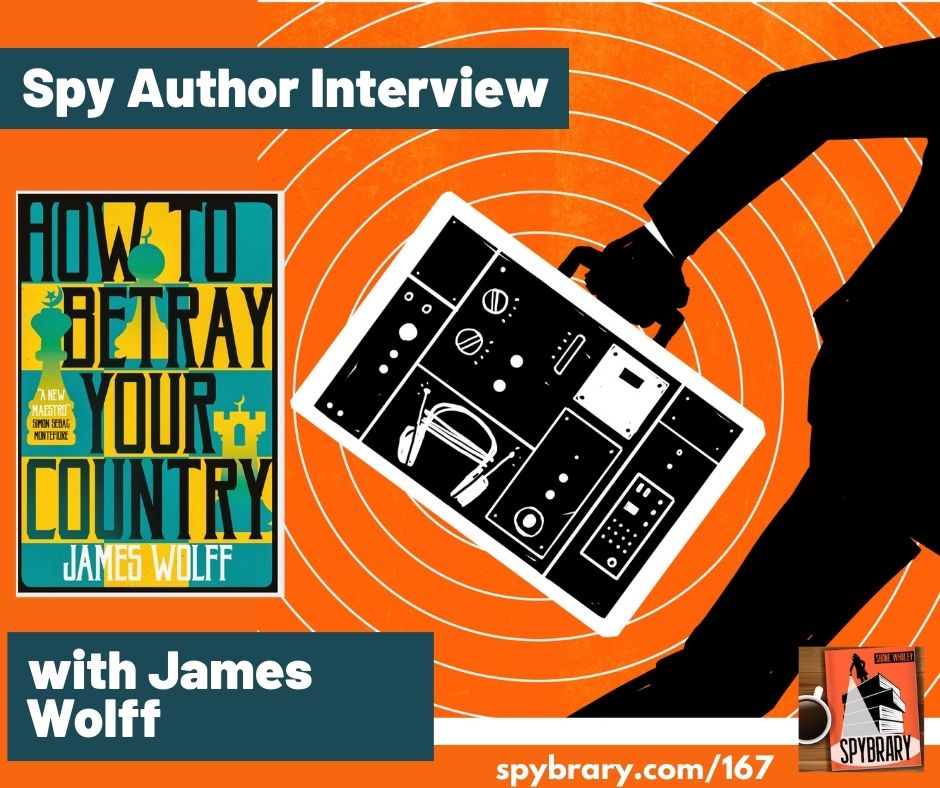
On Episode 167 of the Spybrary Spy Podcast, James Wolff chats with Spybrary Host, Shane Whaley. Available on all good podcast apps and at Spybrary.
50. James Mitchell aka James Munro
Active: 1964-75
Key works: Callan: A Magnum for Schneider, Russian Roulette, Death and Bright Water, Smear Job, Craig: The Man Who Sold Death, Die Rich Die Happy, The Money That Money Can’t Buy, The Innocent Bystanders
James Mitchell created not one but two excellent spy series. He is best known for coming up with Callan, the loner assassin for British intelligence, first as a TV series starring Edward Woodward and then in a series of four hard boiled books (much later extended to five).
The first, A Magnum for Schneider (Red File for Callan in the US) is among the most expensive and collectible first editions in the thriller market. Russian Roulette is probably my favourite. But before that Mitchell, using the pen name James Munro, had authored four books on a more Bond-esque hero John Craig, who is nonetheless at the realistic end of the Bond-imitators and, like Callan, a reluctant killer. These are also stylish, exciting and edgy reads.
The fourth book, The Innocent Bystanders, was also a film, for which Mitchell wrote the script. Mitchell didn’t stop there. He also has a string of stand alone thrillers to his name, among which I enjoyed KGB Kill, an espionage plot set in the motor racing world. Our own Michael Ripley collected two anthologies of short stories, entitled Callan Uncovered, in 2015 and 2016.
49. Jeremy Duns

Active: 2009-15
Key works: Free Agent, Free Country aka Song of Treason, The Moscow Option, Spy Out the Land
In my view our own Jeremy Duns is the greatest living scholar of spy fiction. His investigations and non-fiction work into Fleming and his determination to exhume forgotten authors is invaluable and the kindle collection of his essays is a must for anyone interested in spy thrillers. Very few people know more about the genre. His non-fiction book Dead Drop, on the Penkovsky affair, is also brilliant, by far the best thing written on the subject and, in that hackneyed phrase, itself reads like a thriller. This should not be a surprise since Duns has written four very good spy thrillers featuring his character Paul Dark. And the reason these books are so good is that Duns knows his stuff. A long grounding in the history and nuances of the genre means that when he writes a book set in the 1960s, it feels and smells like a book written in the 1960s. Dark is an interesting character. If I’m honest I struggled with him working for the other lot in the first book: Free Agent. But the human complexities this develops nicely in Free Country (aka Song of Treason) and The Moscow Option are well done.
Lots of people try the retro chic thing but few of them carry it off as successfully as Duns. It’s also worth noting that the omnibus edition of the first three books, The Dark Chronicles, has one of the best bits of cover art I’ve seen in many years.
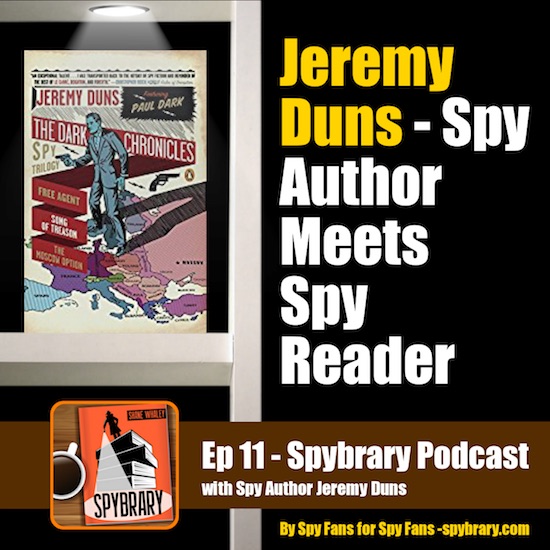
48. Bill Granger
Active: 1979-93
Key works: The November Man, Henry McGee is Not Dead, There Are No Spies, The Man Who Heard Too Much, League of Terror
I’m still in the early stages of reading the November Man series by Bill Granger, a former Chicago crime correspondent who made a serious name for himself in the spy world when his first book appeared to predict the assassination of the Earl Mountbatten by the IRA in 1979. His central character, Devereaux, is a fine creation, a talented but insubordinate CIA man who wrestles with an “asshole” boss, a feisty journalist girlfriend and, in three of the books, against Henry McGee, who Randall Masteller calls “one of the greatest villains ever created for a spy series”, an elusive and creepily lethal adversary. Granger writes with punch and wit and Without perhaps ever rising to true classic status, every one of these I have read has been at least good to very good and this is a 13 book series of high quality, which is no mean feat. Another high point of the series is There Are No Spies, which became the film The November Man, starring Pierce Brosnan as Devereaux.
47. Daniel Silva
Active: 1996-
Key works: The Kill Artist, The Messenger, The Unlikely Spy, The Secret Servant, Moscow Rules
I’m torn on Daniel Silva. His best work, (The Unlikely Spy, The Messenger), would rank higher than this and in Gabriel Allon, the art restorer turned Mossad man, Silva has created one of the less identikit and more interesting spy thriller leading men of the last couple of decades. His introduction in The Kill Artist (actually Silva’s fourth book) is compelling as he hunts down the Palestinian terrorist who killed his wife and son.
The best of these books is exciting, with a strong lead character while the writing is crisp and fluid. I find it hard to pinpoint when, but around halfway through this series Silva’s perennial presence on the bestseller list perversely did not help him and he seems to have started phoning it in. The plots got repetitive, the writing less sophisticated, Allon less conflicted and more of a Kalashnikov kid killing machine. The attractions of the early books were lost. Up to about 2010, Silva was a top 25 writer, judged on what he has written since he’d be struggling to make the top 100.
46. Edward Wilson
Active: 2008-20
Key works: The Midnight Swimmer, The Whitehall Mandarin, South Atlantic Requiem, A Very British EndingE
dward Wilson is a former decorated US army veteran, who won medals for his heroics in Vietnam but then settled in Suffolk, a quiet corner of Eastern England in the 1970s. He is the creator of an excellent seven book series featuring William Catesby, a deeply disillusioned MI6 man (though he is only a minor character in Wilson’s first book, The Envoy). Stylistically, these are very much written by a man from Suffolk rather than an ex-special forces soldier. Wilson is brilliant at the grimy, grey misery of Whitehall intelligence infighting and Catesby makes Bernard Samson or Harry Palmer look like admirers of the boss class in the British security state.
When I met Wilson at an authors’ event a few years ago he told me The Midnight Swimmer, which is set around the buildup to the Cuban missile crisis, is his best book and I am inclined to agree. He has also done very readable riffs on the Falklands War (South Atlantic Requiem) and the 1970s intelligence services plot to bring down Harold Wilson (A Very British Ending). The latter is the perfect encapsulation of what is good and bad about Wilson. It’s clever with well drawn characters and it is no general criticism to say that while a lot of spy authors are not so secret right wingers, Wilson is a man firmly of the left. But these can be bleak books based on a political stance that no real good has ever come from the UK spookocracy or the United States and Wilson is a little too attracted to the most depressingly conspiratorial explanation of the wickedness of the establishment throughout this series. But it is a considerable body of work and if you don’t always want a happy ending, it is worth spending some time with Catesby.
45. Helen MacInnes
Active: 1941-84
Key works: Assignment in Brittany, Above Suspicion, Agent in Place, The Salzburg Connection, The Venetian Affair, Prelude to Terror, Decision at Delphi
MacInnes wrote 21 thrillers in four decades, most of which had an espionage connection. The early works focus on the Second World War, and indeed were written partly during it. While Still We Live (1944) was such an accurate depiction of the Polish resistance that it was assumed she had been briefed by colleagues of her husband, Gilbert Highet, a classical scholar who was also on the books of MI6. Her best early work, as far as I’m concerned, Assignment in Brittany (1941), a taunt, tight and tense piece on SOE, was used as a training manual by allied spies and servicemen sent to Northern France to work with the French resistance. She later pivoted to Cold War themes (of which Agent in Place is my favourite) but her real stock in trade was the innocent amateur dragged into dangerous events, with the world’s intelligence agencies descending on the scene: see The Salzburg Connection, The Venetian Affair in particular. Both were fairly ropey films.
Above Suspicion, her first book, is the best of the movie adaptations. MacInnes was known as the “Queen of Spy Writers”. For a long time it was a title well deserved, since she was a trailblazer for women writers and knew how to write excitement and suspense. Unlike Evelyn Anthony, the love interest was not always central to the plot. If I have a criticism it is that too many characters existed to further the plot rather than vice versa and in too many cases, the skillfully paced denouement (such as the train ride in the Venetian Affair) only came after a build up where she got bogged down introducing too many people and themes. Indeed, MacInnes is not the top woman writer in this list.
44. Don Winslow
Active: 2005-19
Key works: The Power of the Dog, The Cartel, The Border
I originally wasn’t going to include Winslow, but was persuaded that his Mexican drugs trilogy, one of the finest achievements in modern thriller writing, does count as spy writing, since it features an alphabet soup of intelligence agencies from the DEA and the FBI to the CIA and the Mexicans. There is the familiar trope of inter-agency rivalry. But what distinguishes this series is the combination of deep research into the cynical interface between the drug cartels and the governments of the countries in which they operate, compelling characters like DEA man Art Keller and drug lord Adan Barrera, a blood-soaked viscerality which means these are books which stay with you long after you’ve read the last page. The Power of the Dog is epic in construction and Shakespearean in its themes. You are left stunned at the human waste and pretty awestruck at Winslow’s abilities as a writer. His other claim to fame from an espionage perspective is that Winslow also wrote Satori (2011), a prequel to Trevanian’s Shibumi, featuring the unique Nicolai Hel. I haven’t read it but it comes highly recommended by David Craggs.
43. Robert Harris
Active: 1992-
Key works: Enigma, An Officer and a Spy, Fatherland, Munich, V2, The Ghost
Robert Harris is one of a handful of writers where I buy their next book the day it comes out and devour it immediately. If we are talking thrillers in the round, I’d put him in the upper reaches of the Top 10 and I can’t think of many genre books better than his counterfactual Nazis won the war debut, Fatherland. His Cicero trilogy is a magnificent achievement, the first two of which in particular are an excellent example of blending history and a thriller plot, Harris’s stock in trade. While Harris is not a spy writer, he has enough espionage in his back catalogue to justify a place here. Enigma (1995), his second book, led to a boom in interest about the codebreakers of Bletchley Park during the war and is a very well plotted thriller that packs in a mass of information with the twists and betrayals you would expect.
Unlike Clancy, who often seems to write a Haynes manual of military technology, Harris’s great skill is in making his research integral to the plot. The film is also a well above average adaptation. When I interviewed Harris for the Sunday Times magazine a couple of years ago, he said that in his view his best book is An Officer and a Spy (2013), his reconstruction of the Dreyfus Affair. If it’s not his best thriller, it is almost certainly his best novel and has plenty of spying. Without giving away the plot The Ghost (also an excellent film: the Ghostwriter) has an espionage element to it and there is a good deal of intelligence work at play in V2 and Munich (also now a film), two of his more recent historical thrillers.
42. Donald Hamilton
Active: 1960-93
Key works: Death of a Citizen, The Wrecking Crew, The Removers, The Ambushers, The Interlopers, The Intriguers, The Intimidators
I guess some American readers will set Matt Helm to hunt me down and have me despatched for not even putting his creator in the Top 40. It is not faint praise to say that Hamilton is probably the finest of all US pulp espionage writers, his character by a mile the most enduring, his writing more propulsive and intense than that of Edward S. Aarons or some of the other imitators. These are hard-boiled spy stories for boys and the best of them can absolutely stand comparison with Bond. In any 28 book series across three decades there will be inconsistent entries. Expository dialogue is a perennial problem. I have by no means made a significant dent in them, but Death of a Citizen is an unusually personal way to start a series, with more character development in 200 pages than some pulp heroes manage in 20 books: Helm evolving from family man to an unsentimental contract killer. What followed was a strong first decade and then a bit of a tailing off as the plots got sillier and the sex more prevalent. But Helm himself was not silly, he was a deadly serious bastard and the comedic depiction of the character in four Hollywood films is a travesty of the source material.
However, John Fraser, a blogger on American thriller writers, says persuasively that Hamilton is in the very front rank, alongside Dashiell Hammett and Ross Thomas (one of whom you will be reading about here later). Hamilton is one of the 10 most important American spy writers, but this is my list and I can only say those above him gave me more pleasure. However, if you haven’t tried Helm, you really should.
41. Gavin Lyall
Active: 1961-99
Maxim: The Secret Servant, The Conduct of Major Maxim, The Crocus List, Uncle TargetHonour: Spy's Honour, Flight from Honour, All Honourable Men, Honourable Intentions Other: Midnight Plus One, The Most Dangerous Game, The Wrong Side of the Sky,
Venus With Pistol is perhaps the case that the books that truly make Lyall one of Britain’s greatest ever thriller writers are not the same books that place him high in a list of spy writers. But Lyall is also the author of two recognisable series, which for different reasons ought to be better known and more widely read – but that is enough to lift him above Desmond Bagley on this list and onto the coattails of Alistair Maclean. For two decades Lyall wrote first person hard boiled adventure thrillers, many of them featuring wise-cracking, cynical pilots (as one obituary noted, with clipped one syllable names) trying to survive when sucked into a perilous activity. There was certainly an element of espionage in many of these (the Finnish secret service even gets a look in during The Most Dangerous Game) but that wasn’t their purpose. The best of these books, Midnight Plus One (for which he won the Silver Dagger), features a headlong chase across France pitting a war hero against his former resistance comrades and half the hitmen in Europe. It would be better known if Steve McQueen had lived to make the film of it that he was intending. The reason Lyall is this high on a spy list is that in 1980 he changed direction (and writing style – switching to the third person) with a four-part spy series based on Major Harry Maxim of the SAS, who is basically an intelligence trouble shooter for the British prime minister.
The Secret Servant features a Czech defector, a dynamite file and KGB hitmen. Uncle Target is an attempt at a techno-spy-thriller with a state of the art tank at its heart. The best, for me, is The Crocus List, where Maxim is not convinced that an assassination bid on the US president is the fault of the Russians and sets out to prove it in defiance of his bosses. There was a Maxim TV series, with Charles Dance in the title role, but it was Lyall’s misfortune that this rather good series came as the Cold War was ending and the popularity of spy fiction was waning. In a retreat from modern reality, Lyall then wrote four period spy pieces on the early years of British intelligence, beginning with Spy’s Honour before the First World War. I haven’t read them yet but the tone was clearly more lighthearted. The Guardian newspaper called them “a splendidly entertaining mix of early Ambler with a dash of Bulldog Drummond escapism, and are clearly the work of a writer enjoying himself.”
Now we enter the top 40, which is where I hope there are no duds. I change the order in my mind every day, but as of today this is where we are:
40. Dan Fesperman
Active: 1999-
Key works: The Double Game, Safe Houses, The Small Boat of Great Sorrows, The Arms Maker of Berlin
Fesperman is a former Baltimore Sun reporter who has become one of the finest modern thriller writers in America. Lie in the Dark won the John Creasy memorial dagger for best first novel, while The Small Boat of Great Sorrows, his second, won the Ian Fleming steel dagger, a guarantee of quality. Both are a brilliant slice of Balkan war life, with civil war era Sarajevo brought to life in all its grim beauty, a hotbed of spies, gangsters and psychopaths. You can feel the place breathe as if it was Deighton’s Berlin or Arkady Renko’s Moscow.
I haven’t read The Prisoner of Guantanamo or The Amateur Spy but both are reputed to be well above average takes on the war on terror. I greatly enjoyed The Arms Maker of Berlin and Safe Houses is near the top of my TBR list. But his masterpiece, so far for me, is The Double Game, which is a love letter to spy fans – a spy novel where the clues are all based on classic spy novels as the protagonist searches for the truth about a spook turned novelist called Lemaster. Who can he have been modelled on, I wonder?
39. Craig Thomas
Active: 1976-98
Key works: Firefox, The Bear’s Tears, Snow Falcon, Jade Tiger, Firefox Down, Winter Hawk, All the Grey Cats
Once I’d read James Bond the first time as a teenager I turned to Craig Thomas, who swiftly became my favourite author. I still think he’s underrated. He became good at the sort of international thriller popularised by Robert Ludlum and with Firefox (1977) he arguably invented the techno thriller before Tom Clancy or Stephen Coonts got a look in. Firefox, which is also a decent film (again, my favourite as a boy), is a terrific book, since the tech does not overwhelm the spy story and Thomas had a tighter control over his material than Clancy. What Thomas accomplished in this book, and many others, was to combine the frontline operative (in this case Mitchell Gant) doing tense spying things, with the suits and uniforms at base (both in Moscow and London) trying to work out what was going on and providing simultaneous insight into the bureaucratic infighting.
In most of his books Thomas relied on his eccentric spymaster Kenneth Aubrey, a brilliant Freddie Jones in the film, for the grand strategy and either Gant or Patrick Hyde for the frontline excitement. Many of his plots involved a chase. Snow Falcon, which sees MI6, the CIA and the KGB unite to prevent disaster in the snowy wastes of Finland is excellent while Jade Tiger is a rare 1980s foray into Chinese spying. Firefox Down, the sequel is also worthwhile. Thomas’s best pure spy novel, though, is The Bears Tears, in which the KGB is trying to frame Aubrey as a traitor to destroy him and the only way out is for him and Hyde to uncover the real traitor. It has some quality tradecraft and if you read one of his apart from Firefox, make it this one.
38. William Garner
Active: 1966-90
Key Works: Jagger: Overkill, The Deep, Deep Freeze, The Us or Them War, A Big Enough Wreath Morpurgo: Think Big Think Dirty, Rats' Alley, Zones of Silence Others: Paper Chase, Sleeping Dogs
Garner is another excellent British spy writer who was once regarded as a titan of the genre and who is now out of print and almost completely forgotten. I discovered him in an article on Wikipedia and was quickly gobsmacked that I had never heard of him since he penned not one, but two accomplished spy thriller series. The first series, which our own Jeremy Duns prefers, was written between 1966 and 1974 about a disgraced and self-loathing spook called Michael Jagger. They are more action-oriented, Then in the mid-1980s he penned a trilogy about John Morpurgo, a left-wing MI6 man whose face doesn’t fit with his bosses but who gets to the bottom of Whitehall skulduggery. This is the better series, for me.
Reviewing the second book Rats Alley, which was shortlisted for the gold dagger, Marghanita Laski in The Listener, called Garner “Our cleverest thriller writer”. The Observer called the Morpurgo books “the supreme intelligence trilogy” and reviewing Paper Chase, one of six standalone novels, the paper called Garner was “a novelist of stature who leaves his own distinctive imprint on the le Carré scene.” The comparison is not as fatuous as some comparisons to le master. Garner writes with sophistication and subtlety and constructs a compelling intelligence universe.
37. Frederick Forsyth
Active: 1971-2018
Key works: Day of the Jackal, The 4th Protocol, The Dogs of War, The Devil’s Alternative, Fist of God
Sue me! Is he a spy novelist? Probably not. Should he be here? Most Spybrarians believe he should and regularly vote Forsyth’s brilliant debut, The Day of the Jackal, one of their favourite spy novels, even though it contains virtually no spying. My bigger objection to putting him higher, as many would demand on the basis of one masterpiece alone, is that there are three eras of Forsyth, each weaker than the one before.
His first four novels, penned in the 1970s are all strong, well-constructed and meticulously researched thrillers, which make the research part of the plot. I’m not very fond of The Odessa File but the Dogs of War is excellent (good enough on the detail to have become the blueprint for the Wonga Coup in Africa two decades later) and The Devil’s Alternative an interesting angle on the superpower standoff. Middle period Forsyth, from No Comebacks (1982) to Icon (1996) has its merits. The high point, by a mile is The Fourth Protocol, Forsyth’s only true spy novel, which became a watchable film and has a decent twist. But there is intelligence work in Fist of God, which is reputed to be based on a true story.
The six novels Forsyth has written since 2001, when he, like everyone else, started exploring the war on terror, are – to me – best ignored. The research was clunky, the plots pedestrian and repetitive, the characters always thin reduced to the width of rice paper.
36. Michael Gilbert
Active: 1967-82
Key works: Game Without Rules
Gilbert was a very good crime writer, famous for a series of acclaimed detective novels over a period of 50 years (Smallbone Deceased, Death Has Deep Roots, Death in Captivity). The reason he is here, though, is that he is also responsible for the two best collections of short spy stories I’ve ever read – the only short-form writing that eclipses Brian Garfield’s Charlie Dark stories. Gilbert’s characters are the highly eccentric but deadly killers Mr Calder and Mr Behrens who take on the jobs that the main agencies will not touch. Calder and Behrens are counter-intelligence officers and bachelor friends who live near each other in Kent, Calder with a giant deer hound called Rasselas, who plays a key role in at least one story. These are clever, dark, twisty tales with a menace of violence and death cloaked in a warped English tweeness. There were also 14 BBC radio plays based on the two books. Seek them out.
35. Clive Egleton
Active: 1970-2005
Key works: Seven Days to a Killing, The October Plot, A Piece of Resistance, The Winter Touch, Hostile Intent, Troika, A Different Drummer, State Visit
Egleton is one of those highly prolific spy writers who are perhaps not rated as highly as they should be because they really churned out the books. He is far from a pulp writer. Like Randall Masteller says on his site, I’ve never read a bad Egleton thriller and the better ones are great examples of that credible craft that a lot of skilled writers managed in the last three decades of the 20th century. Perhaps his best known book is Seven Days to a Killing, which became the film The Black Windmill (scene of the showdown) starring Michael Caine and Donald Pleasence, two actors I can watch all day. Escape to Athena, which he wrote under the name Patrick Blake, became the Roger Moore WW2 movie. The October Plot, another often listed as his best, transports us to Martin Bormann’s Berlin. But Egleton was responsible for four spy series which are worth your time.
First up was a trilogy of novels set in a Soviet occupied Britain (eight years before Deighton wrote SSGB and put the Nazis in charge). Then came two books featuring MI6 man Charles Winter wrestling with the CIA during the Suez and Cuban missiles crises (The Winter Touch aka The Eisenhower Deception and The Russian Enigma aka Pandora’s Box). Spymaster Cedric Harper features in Seven Days… but also in A Different Drummer, which I enjoyed, and two others. Then, at the end of his career, Egleton began a series of 12 novels featuring MI6 man Peter Ashton. I’ve only read the first, Hostile Intent, but I’m looking forward to working my way through this series.
34. Alistair MacLean
Active: 1955-86
Key works: Ice Station Zebra, Where Eagles Dare, The Last Frontier, The Guns of Navarone, The Dark Crusader
Alistair MacLean is, for my money, the greatest adventure novelist of all time, at least for the first half of his writing career (up to Force 10 From Navarone in 1968). He sold 150 million books so I am not alone in holding this view. Most of them, of course, are not spy thrillers but most of the best in his canon have an element of spying. His finest work, Ice Station Zebra, is a convoluted and absolutely gripping plot – infinitely superior to the rather lacklustre film. Where Eagles Dare is not only the best war mission book and movie ever written, it has at its twisted heart an espionage device which delights and infuriates in equal measure. And if you’re not convinced his writing is exquisite, I would urge you to read the rock climb at the start of The Guns of Navarone or the diving bell sequence in Fear is the Key, two set pieces which still chill my blood and quicken my heart.
The Dark Crusader (US: The Black Shrike) has an espionage plot and the world’s intelligence agencies rampage through others. The book that most makes you wish he had done more spy thrillers was The Last Frontier, a 1950s espionage story about an undercover mission beyond the Iron Curtain to recover a defected scientist that is more than a little reminiscent of Ambler. MacLean is the last of the great generalists who dabbled, but he is also my favourite of them. (Just be warned: treat anything published in the 1970s with caution and don’t touch anything from the 1980s with a bargepole) Everyone that follows is best known as a spy writer.
33. John Buchan
Active: 1895-1941
Key works: The Thirty-Nine Steps, Greenmantle, Mr Standfast, The Three Hostages, The Island of Sheep, Prester John
Here’s another one likely to send the cognoscenti into a spiral. If this was the most important spy writers ever, Buchan might have a case for inclusion in the top 10. The Richard Hannay novels are vital way points in the story of espionage fiction. The Thirty-Nine Steps is probably one of the 10 books a non spy fan might name if asked about our genre. I haven’t read as many of these as I should, but Steps is great, exciting and with an ingenious enough plot to keep you guessing. Greenmantle is probably a better novel, though not quite so exciting. Buchan himself might have been a model for Hannay. He had an interesting Great War in the intelligence corps, and then working for Lord Beaverbrook as Director of Information. He then served as an MP and governor general of Canada, a post for which he was made Baron Tweedsmuir. This ranking is an unhappy compromise between his importance and his appeal but it will have to do.
32. Jason Matthews
Active: 2013-18
Key works: Red Sparrow, Palace of Treason, The Kremlin’s Candidate
Matthews spent 33 years as an agent runner with the CIA and it shows. His debut Red Sparrow probably has the best tradecraft I’ve read in a spy novel, certainly until Damascus Station came along. More than that, at its heart is one of the greatest female spies ever written, Dominika Egorova, the young ballerina trained as a KGB honey trap agent who goes into battle with Nate Nash of the CIA, handler of the most precious Russian mole. Their love affair is well written and Marty Gable is one of my favourite cynical sidekicks in all of spy fiction. Dominika’s synesthesia adds rather than distracts, in the first book at least, and I didn’t mind the recipes at the end of each chapter as much as most people.
In short it is one of the high points of 21st century spy thrillers and won a worthy Edgar for best first novel. The film, starring Jennifer Lawrence, is decent enough but doesn’t do the book justice. When it was published I hoped Matthews would have a long career and give us a dozen great books. Instead, he only lived long enough to complete a trilogy and the second and third entries, while hugely enjoyable, were not as strong. I rather liked the way Vladimir Putin became a sinister presence in the series and Matthews managed to inject a real sense of peril into the intelligence games which could have led to Dominika’s unmasking as a double agent and execution.
Yet Palace of Treason hangs together less well than Red Sparrow. It also feels to me like Donald Trump’s emergence and the controversy around his Moscow links led Matthews to change tack a little in The Kremlin’s Candidate. It is an exciting conclusion to the series, but the denouement involving a capsule escape from Putin’s own holiday home was beginning to seriously stretch credulity. It’s a great trilogy but we were robbed of more.
31. Adam Brookes
Active: 2014-17
Key works: Night Heron, Spy Games, The Spy’s Daughter
Brookes, a BBC man, might still treat us to more than his brilliant spy trilogy, but even if he doesn’t it is another high point in recent espionage fiction. Starting with Night Heron, Brookes proves a master at set pieces and at crafting characters who both appeal to the reader as people and bring a moral seriousness to the timeless issues of betrayal. Most of all, he provides the best set of books about espionage in China that I’ve read. As a former foreign correspondent in Beijing, Brookes transports you to the sights and smells with great effect.
The first book sees a former British agent, Peanut, escape a prison camp and seek to contact his old handlers via the reporter Philip Mangan, who gets sucked into the spy game as the agencies begin to realise that Peanut’s intelligence is of vital importance. In Spy Games, Mangan is again dragged into espionage following a terrorist attack in Africa. In The Spy’s Daughter, a young Chinese girl in Washington, whose parents are Chinese spies, becomes embroiled in the same game with Mangan. This is a much more even trilogy than the three Red Sparrow books. All three are very good indeed and it is a tragedy that Brookes seems to have abandoned his writing career.
Sources of mine in the industry say his sales were not brilliant and his publishers failed to get behind the books, despite their obvious quality. If so, this is a very sad parable of the publishing industry, which puts far more effort into detective than spy fiction. I hope someone has the good sense to give Brookes another chance because writers of this ability do not grow on trees.
The 30 Best Spy Authors According to Tim Shipman
We now enter the Top 30 best spy writers and while those ranked 31-40 are all good enough to have been here on their day, the names that follow I really do feel are the creme de la creme of spy writers who I have read. I’ve agonised at great length over where to place them all in this list.For me, the top 10 or 11 are fairly unassailable, their order agonised over but I’m satisfied that for me I have them right. The second tier from 12 to 30 seemed to break reasonably naturally into those who have finished their careers and have a usually large and impressive body of work and those who, for the most part, are still writing, still building their list.
This is not a binary decision, I’ve still tried to rank people as I see them, but it became natural to favour writers of similar quality whose contribution is more extensive and whose careers it is easier to assess in the round.This is one way of saying that you are about to see a large number of authors still delighting us in the ranks between 30 and 21 (eight of them in fact).In truth, every one of these writers could have legitimately finished anywhere from about 13 to 30, depending on my mood.
30. Olen Steinhauer
Active: 2003-
Key works: The Tourist, The Nearest Exit, An American Spy, The Last Tourist, All the Old Knives, The Cairo Affair, 36 Yalta Boulevard, The Bridge of Spies
Steinhauer is one of the best modern American spy writers but suffers a little because I have only read one of his modern books, The Tourist, about a CIA hitman sidelined when he has a mental breakdown on a job but who returns to his old outfit and tries to balance the pressures of his new family life with the need to risk his life investigating the double dealing that left his former colleague dead. Milo Weaver is an excellent character, nicely human, and the CIA internal intrigue is a delight but I found the book too long to take us to a somewhat inconclusive conclusion. I’m told the other books, and some of his contemporary standalones are better. So that’s why Steinhauer is not higher.
The reason he is here at all, though, is that the man can write and I have read a handful of his detective stories set behind the Iron Curtain, starting with Bridge of Sighs, which was nominated for a truckload of awards. These are hugely atmospheric and enjoyable and I know I want to keep reading him. To cap it all, Steinhauer also devised the TV series Berlin Station, the first series of which was top notch television.
29. Greg Rucka
Active: 2002-10
Key works: A Gentleman’s Game, Private Wars, The Last Run, Queen & Country Definitive Edition Vols 1-4
Rucka might well be the best full spectrum spy writer in action today. He has turned his hand, triumphantly, to graphic novels and full blown thrillers and is also a screenwriter and deviser of video games. If he had devoted himself solely to espionage I think it’s very likely he would have been in my top 10, but Rucka is such a wild talent that he is best known for writing Batman, Wonderwoman and Batwoman for DC comics and for devising a highly realistic series of crime thrillers featuring his character Atticus Kodiak.
The reason he’s here is that Rucka devised and created a brilliant graphic novel series called Queen & Country, which is a riff on The Sandbaggers, the BBC spy series created by Ian Mackintosh. Rucka’s lead is female “Minder” Tara Chace, my second favourite female spy (no prizes for guessing who is first), a brilliant but troubled special operations operative, who fights and loves and is energising just to be around. Backed up by Paul Crocker, who runs the Minders with devious skill, against an MI6 bureaucracy that matches that wrestled with by Neil Burnside or Bernard Samson, this was the series that got me to put aside my snobbery about graphic writing. Rucka then followed these missions (helpfully collected in four paperbacks, but which also work very well on a ipad, where you swipe from cell to cell) with three superb thrillers featuring Chace.
He writes with real impact and energy and the characters are all fully formed. A film is supposed to be happening but seems locked in development hell. A lot of Brits will not know these books. You don’t need to have read the graphic novels to enjoy the thrillers. If he’d written six instead of three, Rucka would easily be in the top 20.
28. John Lawton
Active: 1995-
Key Works – Troy: Riptide, Old Flames, Blackout, Friends and Traitors, A Lily of the FieldWilderness: Then We Take Berlin, The Unfortunate Englishman, Hammer to Fall
Lawton is one of the last of the difficult to categorise writers. As the originator of one of my favourite detectives, Frederick Troy, he would be in the top 10. These are not pure spy fiction, but many of Troy’s missions see him interacting with MI5, the CIA and the KGB and, in any case, a lot of the plots revolve around acts of espionage, Blackout, the first (another hugely expensive first edition to collect) concerns the death of German scientists smuggled out of Germany to Britain in 1940 and concludes in the rubble of postwar Berlin during the air lift. Old Flames, concerns Nikita Khruschev’s visit to the UK in 1956.
Riptide, the best of his books, also concerns the early part of the Second World War and explicitly pairs Troy with MI5. A Lily of the Field has plenty of espionage too and Friends and Traitors features Guy Burgess pining for home. These are wonderful books, with a delicious family background (lefty aristocrats with Russian roots) for Troy and atmospheric riffs on real events (the Profumo scandal and the Krays are the basis of two other books). To solidify Lawton’s place further, he is also now the author of three books featuring wideboy spiv turned spy Joe Wilderness. I’ve only read Then We Take Berlin, in which he’s more smuggler than spook, but others speak highly of the two which followed.
27. Alan Williams
Active: 1962-81
Key works: Barbouze (aka The False Beards), Gentleman Traitor, The Beria Papers, The Tale of the Lazy Dog, Holy of Holies, Shah-Mak (aka A Bullet for the Shah)
Williams is one of the writers most highly praised in Kiss Kiss, Bang Bang by Michael Ripley, and with every justification since Williams is one of those writers whose wide experience rises lifelike from the page. His books are both gritty and clever, languid and louche, just like the man himself, a foreign correspondent with The Daily Express (when it was the greatest English newspaper) whose godfather was Noel Coward.
As a student he took part in the Hungarian uprising and his reporting on the Vietnam War was regarded as the best by any English journalist. Wikipedia tells us: “In Algeria, the Foreign Office received complaints about him from both the French Army and the Arabs. Subsequently, he had to be smuggled out of the country after the word ‘barbouze' (spy) had been written on his car.” (Williams’ second book was named Barbouze and is a very arresting work on the Algerian war of independence). In Beirut, he encountered Kim Philby the day before the latter disappeared to Moscow.” Williams it was too who headed behind the Iron Curtain and smuggled out the manuscript for Alexander Solzhenitsyn’s banned book Cancer Ward. This he put to good use in The Beria Papers, which John Gardner called one of the ten greatest spy thrillers ever written. Gardner said that and Gentleman Traitor, Williams’ take on Philby, were important milestones in the development of the thriller. Robert Ludlum loved Shah-Mak, his Iranian thriller. I haven’t read a bad Williams book.
My favourites, beginning with Barbouze, all feature the repellent but wonderful manipulator Charles Pol, of French intelligence. He is a malevolent but captivating figure in The Tale of the Lazy Dog, which is the book Gavin Lyall would have written if he knew Vietnam like Williams. In one of the many films of Williams’ books which was never made Orson Welles was to have played Pol. He’s my favourite fat man in espionage until Jackson Lamb came along.The next three entries are three of the finest British spy writers of the last 20 years. I find it almost impossible to separate them and ranking them has been the hardest part of this entire exercise. The first is a blazing talent but who has published fewer books, the second is the most consistently good and the third has penned my favourite of all their works and is enjoying an Indian summer of success. Interestingly, all three have had wrestling matches with the British publishing industry.
26. Simon Conway
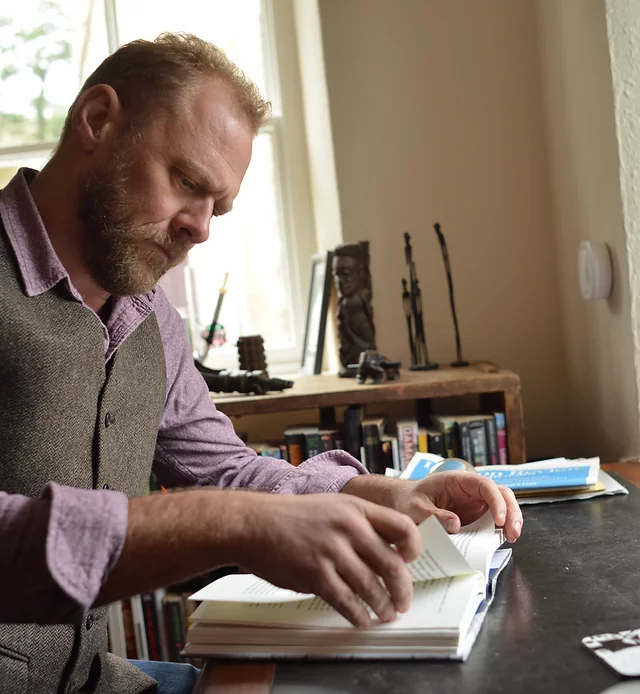
Active: 1998-
Key works: The Stranger, The Saboteur, A Loyal Spy, The Agent Runner, Rock Creek Park
Simon Conway cracked writing about the war on terror probably better than any other spy writer. That is not a surprise when you consider his background. As a former Army officer whose day job for a decade was working for the HALO Trust, which clears up unexploded ordnance in war zones, he knows the region and the military. Add to this a man who is at once sophisticated and earthy, at home in a Washington bar with a spook or sinking tinnies with a squaddie.
I know Simon a little since our paths crossed when we were both in DC. I think you can tell from his writing that you would enjoy a night out with him. He’s clever and generous but also a watcher and his characters leap off the page, a little like his personality. His writing is passionate and sophisticated, punctured by episodes of great violence and drama. The critic who said his was “a roaring, prodigal talent” and that his books are “a life experience” had it right. It is a measure of the idiosyncrasies of the publishing industry that Simon has been at this for some time but probably only in the last three or four years has he had the credit he deserves.
While his first two books, Rage and Damaged, are well worth your time, it was Rock Creek Park, named after the twisting canyon at the heart of Washington, where he took a leap forward for me, a tale that starts with a body and ends in the Caucasus. A Loyal Spy, which followed, is extremely good, roaming from Afghanistan to London, and the first in what I consider his quartet of war on terror books.
The Agent Runner has a marvelous character in the form of ISI chief, Major General Javid Aslam Khan, but the book, which is a modern homage to The Spy Who Came in From the Cold, put some noses out of joint and was never published in hardback in Britain – but you must seek it out. After a hiatus of six years he returned with two fantastic thrillers, The Stranger and The Saboteur, featuring spook Jude Lyon and terrorist, the foul Guy Fowle, one of the great modern villains. A third, The Survivor, will follow this year. Simon has now returned to Washington with his wife, the BBC’s North America Editor Sarah Smith, and I for one can’t wait to see what he has up his sleeve next. If he gets the support he deserves from publishers, the sky is the limit.
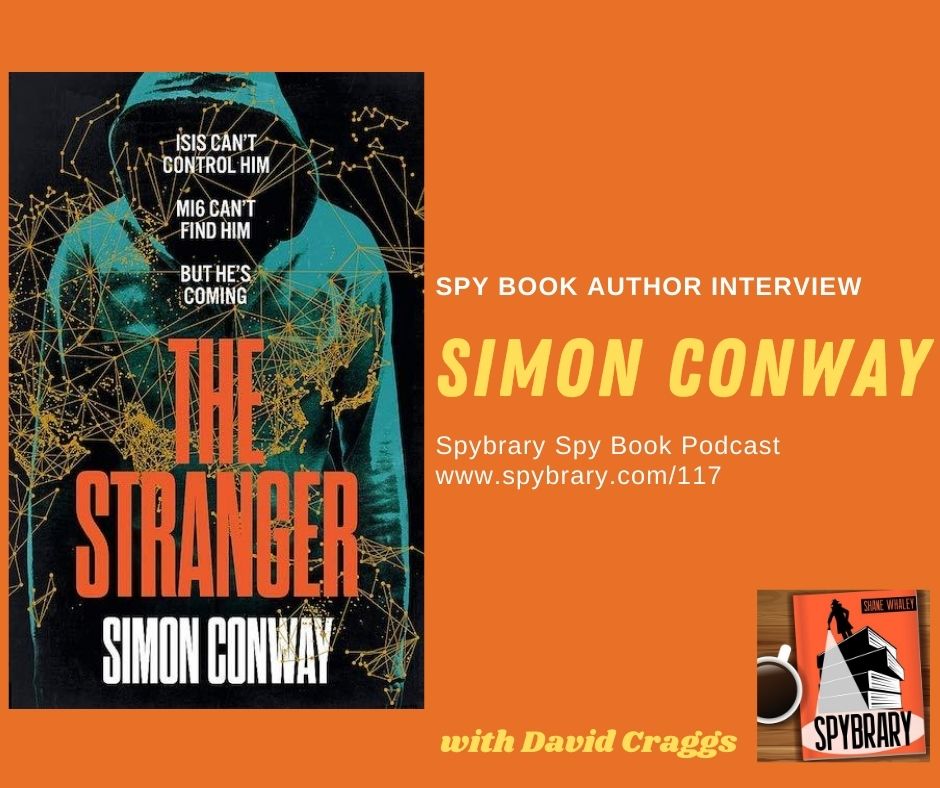
25. Charles Cumming
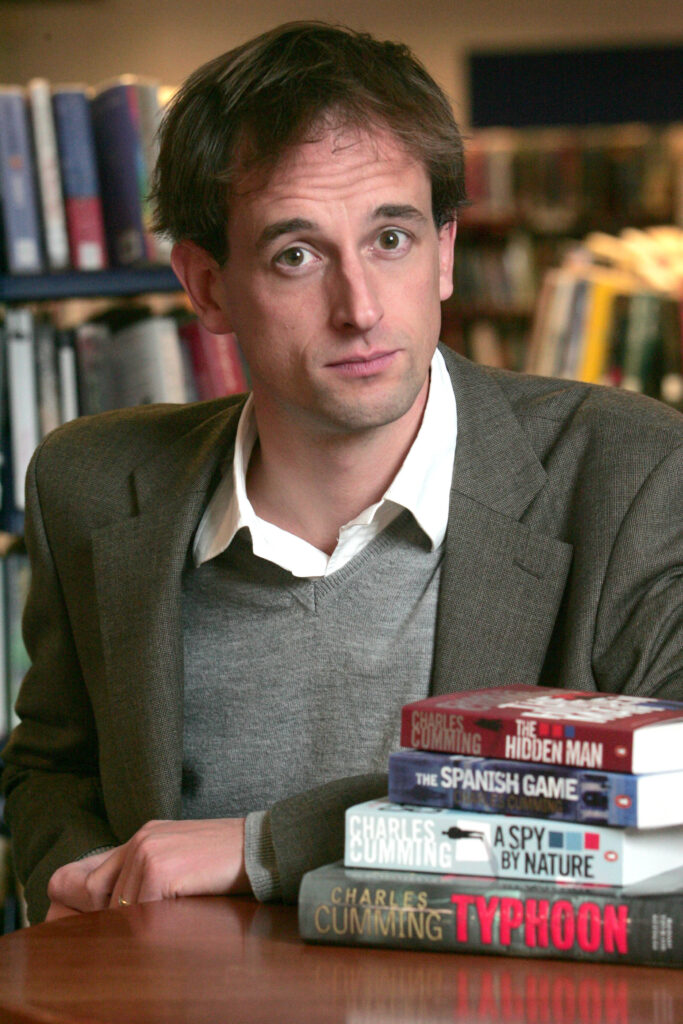
Active: 2001-
Key works: The Trinity Six, Typhoon, A Foreign Country, A Spy By Nature, Box 88, Judas 62, A Colder War, The Man Between.
Charles Cumming can legitimately be labelled one of the two English authors who saved the traditional British spy novel. At a time when the genre was falling out of favour he seemed to plough an almost lone furrow, regularly churning out very good books which stand the test of time. He was helped at the start of his career by trading on how MI6 tried to recruit him (unsuccessfully he insists, though his writing is realistic enough that some like to flatter him by calling this into question).
That first book, A Spy By Nature, is genuinely gripping as a headstrong 20-something, Alec Milius, becomes embroiled in an MI5 plot to deceive the CIA. The Hidden Man and The Spanish Game are both accomplished but Cumming’s writing really hit its stride with two standalone thrillers, Typhoon, which is up there with Adam Brookes’ books on China, and The Trinity Six, which posits that the Cambridge spy ring of Burgess, Maclean, Philby, Blunt and Cairncross had a sixth member. For my money they are still his two best books.
What followed was a trilogy of books featuring ageing MI6 man Thomas Kell, the first of which (A Foreign Country) in particular was excellent and won the ian Fleming Steel Dagger. Having bowed to pressure to write a series, Cumming’s writing saw him trying different techniques to win readers. The Kell books had gradually more action, then he switched to something akin to Eric Ambler in The Man Between. Charles is now two books into his Box 88 series, with a new lead character, Lockie Kite. Both have employed a split time narrative with the past and present day interacting, both have good tradecraft and a lot of tension and action.
Charles is another writer who has not penned a bad book. If there is a criticism of some of his work, one that has been voiced here by others, it is that not all his lead characters are folk you would have over for dinner, but the man keeps churning out good to very good books on an annual basis.
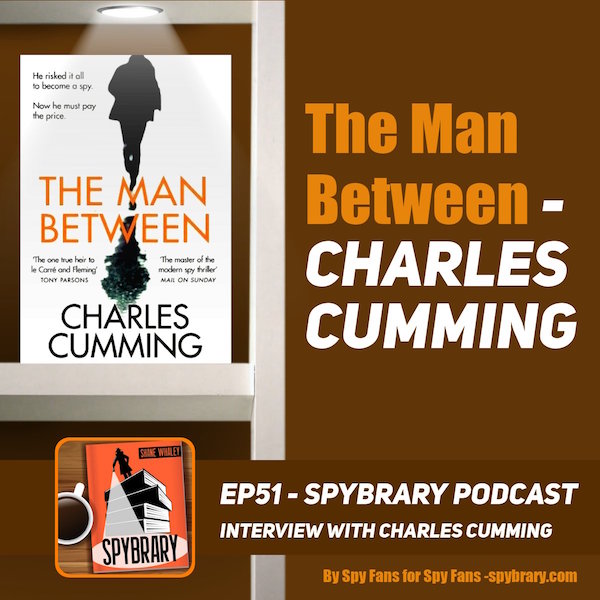
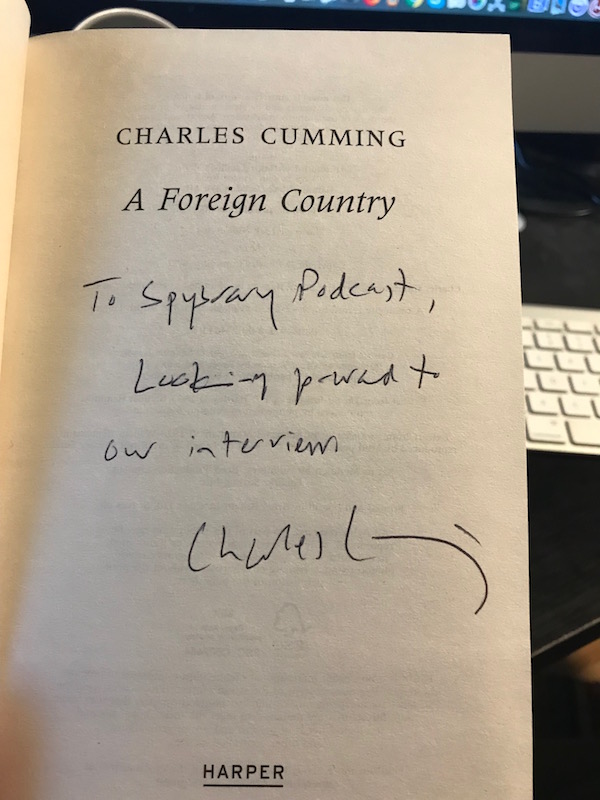
24. Henry Porter
Active: 2000-
Key works: A Spy’s Life, The Dying Light, Remembrance Day, Firefly, A White Hot Silence, The Old Enemy, Empire State
Another journalist, Henry Porter was for years the British editor of Vanity Fair and a columnist for The Observer. He was also, in the first years of the century the best British spy writer, though he was less prolific than Cumming. Porter’s first, Remembrance Day, is an extremely tense IRA terrorism thriller, focused on a plan to use mobile phones (then in their infancy) to trigger a bomb during the Armistice Day commemorations. It’s a classic of the race against time genre. Empire State (2003) was one of the first good thrillers about the war on terror and the moral and intelligence tradeoffs about using torture. Brandenburg (2005) set around the fall of the Berlin Wall had a very effective journalistic vibe but the plot was less successful.
His masterpiece, though, was A Spy’s Life, which I would rank in my top 10 spy thrillers. It is a magnificent book, with a lead you cheer for and gloriously suspicious CIA spooks on his own side. It’s one of those books where scenes stay with you for a long time. Phase one of Porter’s career came to an end in 2009 when he published The Dying Light (The Bell Ringers in the US). This is a largely forgotten book but it has a very interesting premise.
Porter, who was by then a campaigner for human rights against the overweaning state, imagined a world in which a sinister government took to the extreme all the draconian legislation passed by the Blair government during the war on terror. Perhaps it was seen as too political, when people were tiring of those battles, certainly it was marketed badly, but the book is great, combining the mood music of SSGB, Dominion and Clive Egleton’s Soviet occupation novels as it focuses on the genteel English resistance to this tyranny. Either way it killed Porter’s career stone dead for a while. While Conway was away for six years, Porter was gone from the shelves for nine. But when he returned, in 2018, he did so with a bang and a new series character, Paul Samson, one of those heroes – like the great raconteur Porter himself – who you want to have a beer with.
I’m still working my way through them but they are chasey and pacey and David Craggs says the second one, A White Hot Silence, is the best of them. My understanding is that a fourth is planned. Porter is less consistent than Cumming but A Spy’s Life is what gets him here.
23. Ross Thomas
Active: 1966-94
Key works: The Cold War Swap, Cast a Yellow Shadow, The Backup Men, Twilight at Mac’s Place, The Eight Dwarf, Ah Treachery!
Thomas is the last of the espionage part-timers. He is one of my very favourite thriller writers and if this was a list of general thriller or political thriller writers he would be well inside the top 5. Of all the American authors that most Brits have never heard of he is the one I feel safest eulogising about. If you take away one lesson from this list: go read Ross Thomas. When lockdown lifted, I visited a very high end bookseller off the Charing Cross Road and was pleasantly surprised to see a shelf of Thomas tomes and expressed my admiration. The owner told me he had spent lockdown re-reading each and every one again and loved them. This was a man with the whole of modern literature at his fingertips and it was Thomas he chose to weather the boredom with. The books are beautifully and often hilariously written, with larger than life characters who wrestle each other to steal every scene and remain with you for years afterwards.
Check out the opening lines of Chinaman’s Chance: “It was while jogging along the beach just east of the Paradise Cove pier that Artie Wu tripped over a dead pelican, fell, and met the man with six greyhounds.” They are cynical and sly and with plots to die for. Anyone who loves the nexus of murder (Briarpatch), conmen (Chinaman’s Chance), corruption (The Porkchoppers), political dirty tricks (The Fools in Town are on Our Side, The Seersucker Whipsaw, Missionary Stew), fixers (The Mordida Man) and, yes, espionage will love them.
Most, of course, are not pure spy books, but Thomas both began and ended his writing career by writing about two well-drawn spies, Mac McCorckle and Michael Padillo, who begin The Cold War Swap (Thomas’s first book from 1966, aka A Spy in the Vodka in the UK) running a bar together in Berlin, while working part-time for the CIA. In later books the bar moves to Washington DC. Their adventures continue in Cast a Yellow Shadow and The Backup Men and conclude in Twilight at Mac’s Place, which features the chaos caused by a dead spy’s memoirs. Beyond those two, The Eighth Dwarf has an espionage plot in which an ex-OSS operative and a dwarf team up after the Second World War to locate an assassin whose targets are ex-Nazi leaders.
Ah Treachery! Thomas's final book also features a luckless intelligence operative. Out on the Rim (the sequel to Chinaman’s Chance) also has an international plot that has an espionage operative vibe. In short, Ross Thomas is just as funny as Mick Herron and has similarly well-drawn characters but writes better plots and is just as important to read as the modern master.
22. Paul Vidich

Active: 2016-
Key works: The Mercenary, The Matchmaker, The Coldest Warrior, An Honourable Man, The Good Assassin
What to say about Paul Vidich, who I have got to know a little through the Spybrary Facebook Group? Simply, he is my favourite find of the last year and a writer for whom the top 10 is obtainable if he keeps up the quality of his writing.
The Mercenary, published last year, blew my doors off. As a sustained piece of suspense writing about an exfiltration, it is a masterpiece on a par with Ben McIntyre’s nonfiction account of the escape of Oleg Gordievsky. More than that though, Paul creates characters you can believe in and invest in. Most impressively he does so with an economy of effort. This is a writer who builds a picture of great depth with minimal use of florid description, showing not telling, suggesting, hinting, weaving a web that is as rich as the reader wants to make it, but without conning that reader or making them work for it.
There is something of Hemingway about his sentences, or in our realm, Paul’s great friend Joseph Kanon. This is a writer, like Jeremy Duns, with a great understanding of the traditions in which he operates.
Take the bookends of his five books so far. His debut, An Honourable Man, opens with the lead character George Mueller waiting for an agent to show themselves with a man from the FBI. In a homage to The Spy Who Came in From the Cold, Mueller it is who says let’s walk away he’s not coming, inverting the approach of Alec Leamas at the Berlin Wall – signal to me of an author who wants to acknowledge but give a new take on espionage. The final page of The Matchmaker, which has just been published, is a straight up nod to the final seconds of The Third Man. And Vidich’s books evoke the same mood of quiet conspiracy and terror of that film and novella.
For a first book, The Honourable Man is a remarkably assured and controlled performance, brooding tradecraft punctuated with violence. In The Coldest Warrior, Vidich draws effectively on a family tragedy, the death of his Uncle Frank Olson apparently at the hands of his CIA paymasters, from their scandalous experiments with LSD. The Matchmaker showcases Vidich’s combination of historical research (into Markus Wolf’s East German Romeo networks) and characters who are confronted and changed by profound choices and moral dilemmas, all wrapped up in under 300 pages.
In an age when big-name authors are not reined in nearly enough by editors, these are perfectly formed thrillers, both exciting and wise, and despite their brevity, they leave you with the feeling of having had a nourishing intellectual meal far more than books twice their length. Each of Vidich’s stories has moved successively towards the present day. He’s now working on something much more contemporary and there is a sense of anticipation about whether he can sustain the depth and subtlety of his writing when he wrestles with more recent events. A master in the making. Meanwhile, I’m keeping The Good Assassin, his second George Mueller book, in reserve so I’ve still got some Vidich to read.
Check out Tim Shipman's interview with Paul Vidich about The Matchmaker – A Spy In Berlin on the Crime Time FM podcast (highly recommend this podcast for all Spybrarians, do consider subscribing.)
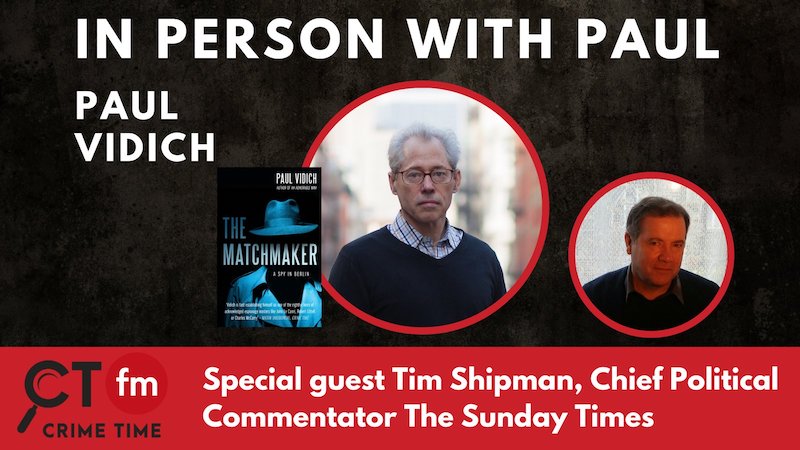
and hear more about Paul Vidich's The Mercenary in a conversation with Spybrary Spy Podcast Host Shane Whaley.
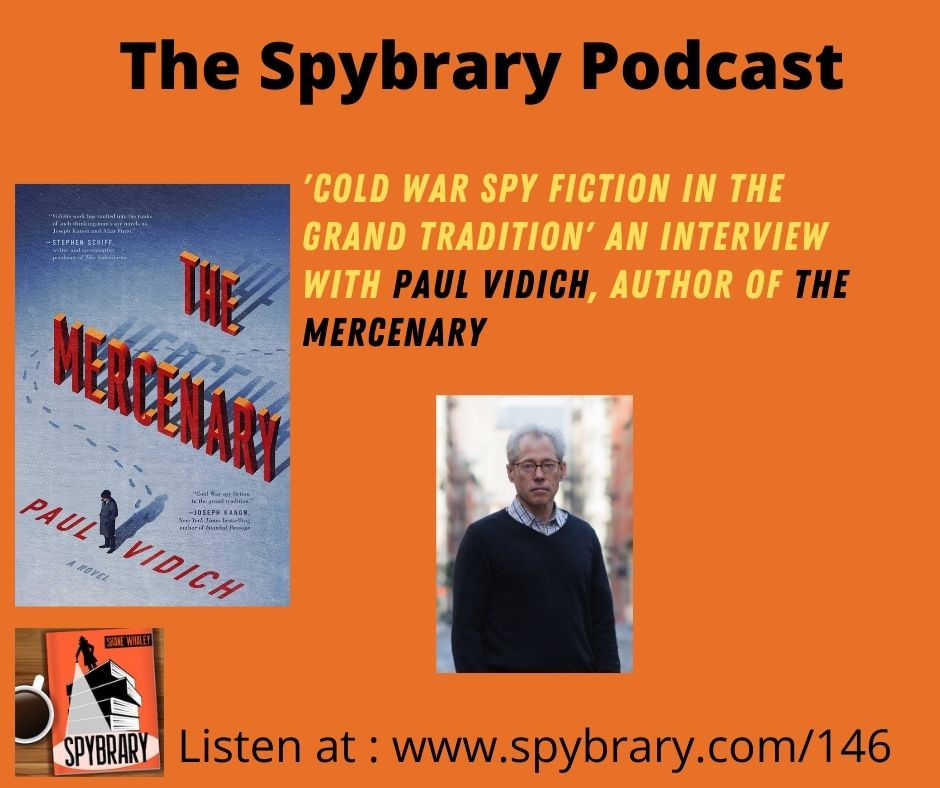
21. Gerald Seymour
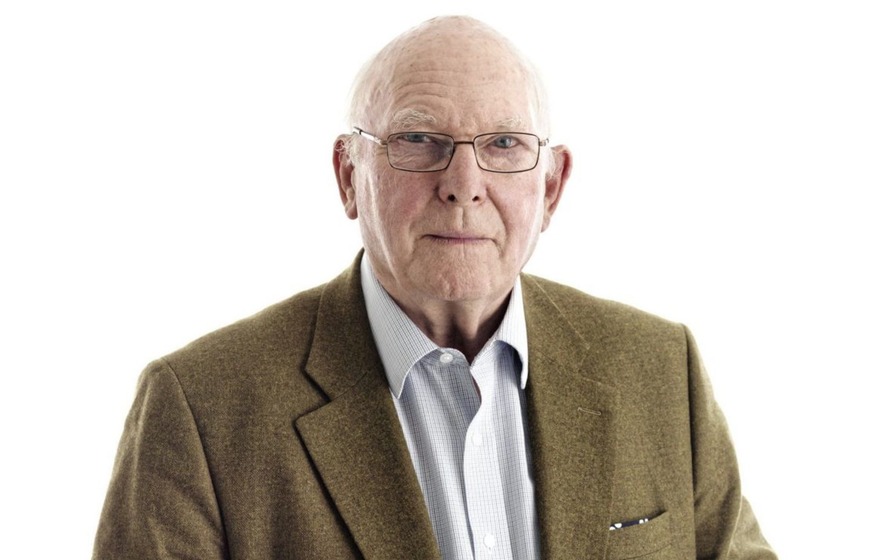
Active: 1975-
Key works: Harry’s Game, The Waiting Time, The Contract, The Crocodile Hunter.
I’ve now lost count of the number of foreign correspondents in the media who ended up penning (spy) thrillers but Gerald Seymour is surely the most august. A buccaneering war correspondent from the glory years of ITN, Seymour’s back catalogue is now approaching 40 books and pretty well all of them have some spying element, or at least a special forces lead or a terrorist theme.
However, somewhat surprisingly few are what I would call pure spy thrillers. His first, most famous, and, in the view of many, his best book – Harry’s Game – may be the best work of fiction ever written on the “Troubles” in Northern Ireland. It’s a nail-bitingly tense story of a spy undercover in the heart of IRA bandit country. The drab locales and permeating sense of fear are brilliantly conveyed. Indeed I remember the book as a feeling, a tightness in the stomach, as much as I do the plot. It has a dark authenticity that will stay with you.
Another of Seymour’s early works, The Contract, concerns an intelligence operation into East Germany, which has something of the feel of The Looking Glass War about it.
My favourite of all Seymour’s books, and undeniably a pure espionage yarn, is The Waiting Time, known as Dead Ground in the US. It concerns the attempts of the ex-lover of a young soldier murdered by the East Germans to seek justice after spotting his murderer after the fall of the wall. It’s a pulsating energised book that romps along and, I think, one of the 20 best spy books I’ve read. It remains a mystery to me that it is not better known even in Spybrary.
Seymour’s early books are excellent (The Glory Boys, Kingfisher, In Honour Bound), I find his middle period quite mixed, though Time Bomb and Traitor’s Kiss both have some good tradecraft. Increasingly his stock in trade became mission stories, with spooks and snipers deep in enemy terrain (A Line in the Sand, Holding the Zero, A Deniable Death, The Corporal’s Wife, Jericho’s War).
As he nears the end of his career, like Ross Thomas, Seymour seems to be returning to his espionage origins. Last year he released the Crocodile Hunter, his new book for 2022 is The Foot Soldiers. Both feature an MI5 man called Jonas Merrick, as Seymour somewhat belatedly seems to be embarking on a series. I haven’t read either of them yet, but this is a promising development.
20. Sarah Gainham
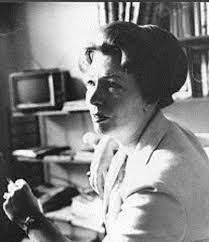
Active: 1956-83
Key works: The Stone Roses, The Mythmaker, The Cold Dark Night, The Tiger Life, Time Right Deadly, The Silent Hostage.
The only woman in the top 20, Sarah Gainham is the pen name of Rachel Stainer who was both a fascinating writer and a fascinating person. Indeed the two are inextricably linked since the primary delight of her books is that she completely captures the time and space of postwar Vienna and Berlin where she lived and worked.
In 1947 she married Anthony Terry, a foreign correspondent for The Sunday Times, who had been hired by none other than that paper’s foreign editor, Ian Fleming. Stainer/Gainham later researched the best routes from East to West Berlin and gave the details to Fleming for use in his books and she is reputed to have drawn Fleming's attention to the Soviet agent Emma Wolff, one of three Soviet women on whom Rosa Klebb was based in From Russia With Love. Terry was also an agent for MI6 and there is evidence that Stainer dabbled in espionage too. Terry gave Fleming information about Berlin and V2 rockets, the latter of which he used in Moonraker, and a meeting the two had with an agent in East Berlin became the short story The Living Daylights.
In 1956 Stainer/Gainham began a decade as the central and Eastern European correspondent of The Spectator magazine. In 1964 her first marriage to Terry, by now a controlling monster, was dissolved and she married Kenneth Ames, the central European correspondent of the economist.In the five years between 1956 and 1960 she wrote five thrillers.
The first, Time Right Deadly, which was shortlisted for the Gold Dagger, is more of a murder mystery than a spy thriller. But the other four stand comparison with Eric Ambler’s great works 20 years earlier in their authenticity and brooding sense of time and place.
The Cold Dark Night, which is set during the four power conference in Berlin, which she had reported on, and brilliantly captures the culture of a pack of journalists (complete with an unflattering facsimile of her husband) and a city swirling with spies and deceit.
The Mythmaker (aka Appointment in Vienna in the US) is even better and features a reporter-spy who has been described as a “thinly disguised portrait of Ian Fleming” by none other than Spybrary’s own Jeremy Duns, who used Terry as the basis of a character in his fourth Paul Dark novel Spy Out the Land. I haven’t read Gainham’s 5th book, The Silent Hostage.
Her greatest work, for me, is her fourth. Ask most people under the age of 50 what they think of when they hear “The Stone Roses” and 99 per cent of them will talk about the greatest indie band of them all. But the spy thriller of the same name, after which the band was named, is a stone cold classic, in which an MI6 man goes under cover as a reporter to hunt down a missing agent in Czechoslovakia in 1948.
Duns has written: “It straddles the ground between the bleaker, more realistic spy fiction of Eric Ambler and Graham Greene and Ian Fleming’s more sensational spin on the genre, to great effect. The protagonist, Toby Elyot, owes a lot to Antony Terry, but this is also the closest she came to writing a Bond novel.” Stainer/Gainham was also a critically acclaimed literary novelist.
Her best book is considered to be Night Falls on the City (1967), the first of a trilogy about Nazi occupied Vienna, which I read and enjoyed (A Place in the Country and Private Worlds followed at two-yearly intervals). It spent the better part of a year on the New York Times bestseller list. The trilogy has its fair share of spies and betrayal but these are not spy books. For me, The Stone Roses is a far greater spy thriller than Night Falls on the City is a great dramatic novel. It is one of the ten books I tend to recommend to people new to the spy genre. It’s beautifully written, with real life characters and a satisfying plot. The KGB villain, a woman in motorcycle leathers, is one of the great antagonists.
Stainer/Gainham’s literary interlude delayed her return to espionage writing, but she ended her career as she began. Her last novel was The Tiger, Life was an autobiographical tale set among the press pack of Berlin in the late 1940s. Naming it on a list of the 10 best spy thrillers in 2020, Duns wrote: “It’s haunting, thrilling and beautifully written.”
Tim's list has sparked much discussion about Sarah Gainham's spy novels, so much so that Jeremy Duns has penned A Quick Guide to Sarah Gainham's Spy Books
19. John Gardner
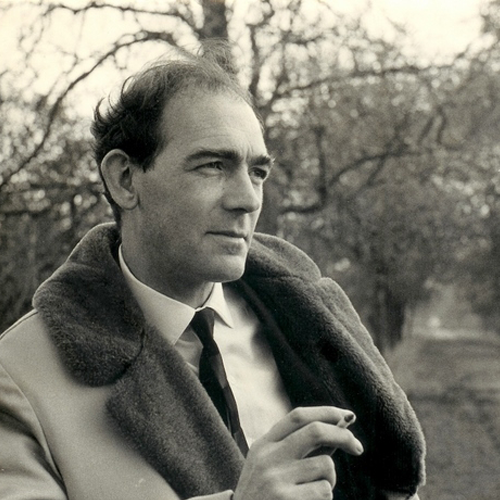
Active: 1964-96
Key works: The Garden of Weapons, The Nostradamus Traitor, The Quiet Dogs, The Secret Generations, The Secret Houses, The Secret Families, The Liquidator, Licence Renewed, Icebreaker.
John Gardner is the unsung hero of British spy writing in the 1980s. He is best known for his least achievements and that has coloured views of his contribution to the genre. Gardner was the first full time and, for the survival of the series, arguably the most important Bond continuation author. He successfully brought the franchise into the 1980s. While not everyone liked the Saab, the first half dozen, those published by Cape, are all decent and the Bill Botton covers are very much in keeping with the Fleming era. Licence Renewed is certainly worth your time and I’m fond of Icebreaker too. If the last few became increasingly ridiculous and repetitive that is hardly unknown in a long series.
What a lot of people remain bizarrely oblivious of is that while Gardner was writing his Bond books he was also creating one of the best modern spies in Herbie Kruger, the overweight, Mahler-loving MI6 man who, for me, is Gardner’s finest creation. ‘Big Herbie’ is cerebral, decent and humane, but ruthless in the pursuit of national security. The Nostradamus Traitor, The Garden of Weapons and The Quiet Dogs are all classics and there are two other Krugers which plough slightly different furrows. Herbie also pops up in Gardner’s “secret” trilogy, which tells the story of the history of British intelligence through the machinations of the Railton family. It’s like a three volume version of Robert Littell’s The Company and some will tell you it’s the best thing Gardner ever wrote – and that’s a perfectly defensible position.
Before all of this, before Bond, Gardner wrote an eight book series starring his original creation Boysie Oakes, a hitman who was scared of violence. It was an original idea well, er, executed and while the tone was more lighthearted there were thrills enough to keep you reading. In short, then, Gardner wrote four different series any one of which was good enough to see him in the top 100. But those of you who haven’t tried Herbie or the secret trilogy are missing a trick.
18. Ted Allbeury
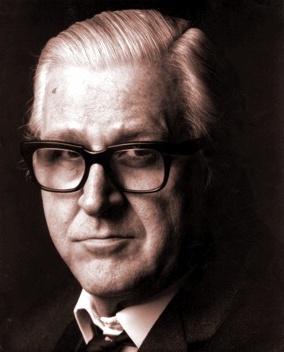
Active: 1972-2000
Key works: The Other Side of Silence, The Twentieth Day of January, The Lantern Network, Consequence of Fear, All Our Tomorrows, Moscow Quadrille, The Alpha List, Palomino Blonde
There exists a holy grail book for collectors of spy thriller first editions. It is a copy of The Ipcress File signed by Len Deighton for Ted Allbeury with the words “To the original nameless spy”. Theodore Edward le Bouthillier Allbeury was not only one of the most prolific (and curiously underrated) spy writers of all time, in a genre that attracts former intelligence operatives, he was also probably the ex-spook who had the liveliest experiences in the shadows and one his friend Len Deighton called upon as an exemplar when creating his first hero, the man better known to the public as Harry Palmer.
Allbeury was one of those gutsy types who served in the Special Operations Executive between 1940 and 1947 and is believed to be the only British secret agent who parachuted into Nazi Germany during the war, where he remained until the Allied armies arrived. Ted then ran agents in East Germany during the Cold War, where he was captured and tortured. The story has it that the Russians left nailed to a farmhouse kitchen table, by a sensitive part of his body, as a warning to others.
When he left the intelligence world Allbeury spent time in advertising and pirate radio, before penning his first novel, A Choice of Enemies, in 1972, when already in his mid-fifties, a book based on the kidnapping of his wife and daughter (by his wartime or Cold War enemies).
He then made up for lost time, putting out more than 40 novels in the next three decades, including four in one year. These are taut and tense, usually not overlong, and often evince a concern for the humanity of those involved on both sides of the intelligence war. There is a grim authenticity about his work. His output divides fairly neatly into Cold War espionage and Second World War intelligence battles.
The Cold War classics include: Snowball, Palomino Blonde, The Twentieth Day of January, Moscow Quadrille, The Alpha List, Consequence of Fear, Beyond the Silence, The Man With the President’s Mind and The Only Good German – though there are many more and you can find pretty well any plot you want. Allbeury tackles the Gary Powers spy exchange (The Crossing), MK Ultra (Pay Any Price).
For wartime thrillers I can recommend: The Lantern Network and The Dangerous Edge, though Codeword Crowmwell (as Patrick Kelly), The Lonely Margins and A Time Without Shadows all have their fans.
Allbeury’s best book is probably his take on Kim Philby wanting to come home, The Other Side of Silence. I also enjoyed All Our Tomorrows, which is his version of SSBG, with Britain under Soviet rather than Nazi occupation and The Special Collection, which is part wartime/part Cold War spying.
I find Allbeury difficult to rank. None of his books would make my all-time top 20, but every single one I have read is notable in some way and you feel you are in the hands of someone who both knows his stuff and how to write. They are exciting but also realistic, his heroes brutally competent but also human. Many of the books have bittersweet endings.
He deserves more love than he gets on Spybrary but his colossal output means people don’t know where to start.
Further Ted Allbeury Reading
The ’80s Spy Novel That Uncannily Predicted the Rise of Donald Trump (Slate)
A candid interview with author Ted Allbeury on Canadian Television 1982. Pour yourself a Scotch and enjoy this one. (Shane)
17. Francis Clifford
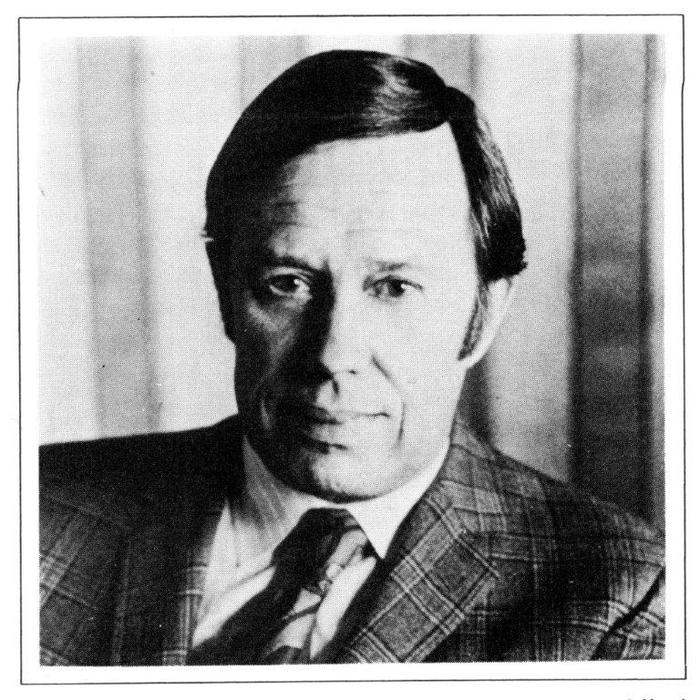
Active: 1953-76
Key works: The Naked Runner, The Grosvenor Square Goodbye (US: Goodbye and Amen), All Men are Lonely Now, Drummer in the Dark
Francis Clifford does not sound like the kind of pen name you would devise for a thriller writer, but then it’s an improvement on Arthur Leonard Bell Thompson, the author’s real name. If Ted Allbeury has a claim to being the bravest spy writer, he has stiff competition in Thompson, an officer in the Burma Rifles, who won a DSO for leading his unit, trapped behind the Japanese lines, back through 900 miles of jungle.
He wrote a non-fiction account of these heroics, Desperate Journey, and the experience was fictionalised in ‘Francis Clifford’s’ first novel, Honour the Shrine (1953). That one and A Battle is Fought to be Won (1960) are regarded as among, if not the very finest, writing about the war in the far east. Clifford also wrote several excellent character-driven thrillers, (such as Another Way of Dying, Time is an Ambush, Act of Mercy and Amigo Amigo). Another way of dying won him a runner up spot at the Edgars and Amigo Amigo won the Silver Dagger in Britain.
Only four of Clifford’s books are spy thrillers, and none of them is conventional, but I have no hesitation in including him in this list because they are fabulous and most of the others include moments of exquisite suspense that would appeal to the spy fan. Perhaps his most famous and celebrated book is The Grosvenor Square Goodbye (Goodbye and Amen in the US), which won another Silver Dagger and another runner up spot for the Edgar. It is the story of the security services response to a killing by a sniper holed up across the square from the US embassy in London. It’s taut and exciting and clever too.
In total Clifford was nominated for the Gold Dagger six times. For my money, (and of the ones I’ve read), his best book is The Naked Runner, which deals with a British businessman who travels behind the Iron Curtain on a mission to Leipzig for MI6 with his son, who is promptly kidnapped by the Stasi. This is an absolutely pulsating thriller which grabs you in the guts like a cold fist. You come to care for the characters with a burning passion. The ending is brilliant and brutal and also a surprise. The film with Frank Sinatra was less thrilling.
Clifford’s follow-up to that, All Men Are Lonely Now (a truly awful name for a thriller), concerns a mole hunt at a secret rocket development plant through the eyes of a man on whom suspicion falls.
Clifford’s final novel, Drummer in the Dark, moves between Warsaw and London and culminates in a confrontation between a features an intelligence operation against an arms smuggler and becomes a dual of wits between the British intelligence officer and the merchant of death. It was a book that led The Daily Telegraph to call Clifford “The thinking man’s Ian Fleming.”
So what puts Clifford so high on this list?
A reviewer for the New York Herald Tribune once wrote: “Not since Graham Greene was creating his adventures has there been a writer with such haunting quality, the sweet sound of sad beauty, which Clifford engenders.” That is high praise for the compassion of his writing but is also liable to put off those people looking for thrills.
Try this, from The Times instead: “Mr. Clifford constructs an anatomy of fear, drawing in with fine, sharp lines the exposed and shrinking nerves.” Both are correct. Simply I know of no other thriller writer who writes beautifully, creates characters that are rounded and introspective and writes suspense that grips like a vice all at the same time. His books are literally thrilling.
In Kiss Kiss Bang Bang Michael Ripley includes him in his list of the “leading players”, his top 15 British thriller writers. If he had written twice as many spy thrillers he would be high in my top 10.
16. Alan Furst
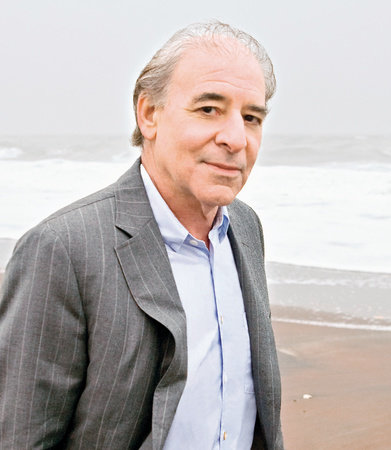
Active: 1976-2019
Key works: Dark Star, Night Soldiers, The Polish Officer, The World at Night, Red Gold, The Spies of Warsaw, Mission to Paris, Dark Voyage
Alan Furst is the king of the brooding atmospheric eastern european espionage story. An American transported to France, his writing is much more reminiscent of his location than his nationality. Furst has been called “an heir to the tradition of Eric Ambler and Graham Greene,” whom he cites along with Joseph Roth and Arthur Koestler as important influences. First’s writing is spare and efficient. I remember one sex scene on a train, which conjured so much with nothing more (if I remember rightly) than four words: “He legs fell open.” Like Paul Vidich, much is suggested with an economy of language and just as Furst’s sentences waste no words, few of the books are doorsteps.
Furst is the master of time and place, you can feel the nip in the air in 1930s Budapest or the tang of Gauloises in 1940s Paris deep in your throat when you read his work, as well as the moral ambiguity of the shifting loyalties in the run up to war in your soul. After four contemporary thrillers and a dozen years of refining his craft, Furst then hit the jackpot with historical fiction.
The typical Furst book features an Ambleresque loner from Eastern Europe, often an aristocrat, who becomes embroiled in espionage plot, crossing paths with the NKVD, the and the Nazi secret services. I think the richest and most satisfying of these books is Dark Star, his second, which is a slightly more mature work than Night Soldiers. I suspect many will place Furst in their top 10. The New York Times calls him “America's pre-eminent spy novelist”. So what is holding me back? I slightly feel that this template was overused and while I know I enjoyed all of these books (The Spies of Warsaw, which became an excellent TV series and The Polish Officer in particular), many of them blur into one.
The books that linger are his two set in Paris during the war (The World at Night and Red Gold), Dark Voyage, which is set on a freighter doing intelligence work (which has some echoes of Ambler’s Journey Into Fear), and his last masterpiece, Mission to Paris (2012), which explores the return to France in 1938 of a Hollywood star who is mixed up in intelligence and crosses paths with a delightful supporting cast of socialites, emigres and a femme fatale actress who also has dual loyalties.
In the decade since that was published the quality certainly dropped off and I would be surprised if Furst, now 81, published another book. Nonetheless his back catalogue is one of the most impressive in spy fiction.
The Top 15 Best Spy Writers (according to Tim Shipman)
15. Anthony Price

Active: 1970-89
Key works: Other Paths to Glory, War Game, The Alamut Ambush, The Labyrinth Makers, Colonel Butler’s Wolf
Anthony Price was for years the editor of The Oxford Mail newspaper while also churning out a very high quality spy series. As an unlikely intelligent thriller writer he ranks alongside his Oxford contemporary Colin Dexter, who put the city on a map with his Morse detective thrillers.
Price wrote 18 spy thrillers about an organisation like MI5. They are highly distinctive since Price was a big history buff and most of the plots were centred around a historical mystery which had an impact on the contemporary espionage plot.
They are also notable for rotating the lead character from book to book, giving them a pleasing variety. Plots centred on Dr David Audley tend to be solved by intellectual heft, those focused on Jack Butler, a more action man type, are more liable to be action-packed. The best of the ones I’ve read (I’m about halfway through) is Other Paths to Glory, which explores a First World War battle. It won the Gold Dagger and was shortlisted for the Dagger of Daggers contest between the best British thrillers of all.
My other favourite is War Game, which starts with the re-enactment of an English civil war battle, at the end of which a real corpse lies dead in the brook as part of a modern intelligence battle. It’s worth starting with the first book, The Labyrinth Makers, which establishes the character of Audley (and which won a silver dagger) but I’m not sure it’s vital to read them in order, though I have.
These are definitely at the cerebral rather than the action end of the market but they are so completely unlike anything else in the genre that they tend to stick in the mind. If you like them there is a rich backlist to engage with.
14. Robert Littell
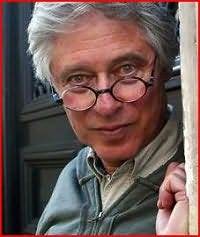
Active: 1973-2019
Key works: The Amateur, The Company, The Defection of AJ Lewinter, The Sisters, Legends, The Once and Future Spy, The Defection, Walking Back the Cat, An Agent in Place
Robert Littell is one of a handful of American authors who really invented serious American spy fiction in the 1970s. He is also one of a handful of authors where comparisons to Le Carre are not entirely stupid, since he writes novelistically about the characters and moral choices of the espionage world.
Like Alan Furst, he is an American living in France. Littell can be more playful than JLC, however, as his first novel, The Defection of A. J. Lewinter, ably demonstrates. This is an almost satirical take on a defection, with neither side quite believing that Lewinter was one of theirs. It was good enough to win the Gold Dagger and a hatful of other commendations.
The most celebrated Littell is The Company, an epic read on the CIA, which traces the history of the agency from the 1950s to the 1990s and concludes with the inevitable molehunt. It’s sweeping stuff and made for a decent TV series and I guess if you are determined to only read one Littell that should be it.
But for me, his best works are more focused and contained. My favourite is The Amateur, which also became a film, and features a CIA backroom boy whose fiancee is murdered by terrorists and goes after her killers because his bosses won’t. It has characters that truly engage and much tension to boot and a satisfying conclusion.
The Sisters has what the New York Times called “the plot of plots.” The sisters of the title Francis and Carroll, are two dangerous CIA legends (and two of Littell’s finest creations). They trick a Russian into betraying his last and best assassin in the US, who they plan to use for an audacious crime. The Russian then tries to stop it.
The Once and Future Spy is a clever book on a top-secret mission that has sprung a leak. Littell got more reflective as he got older. Legends, probably his best book after The Company made him famous outside the ranks of spy aficionados, is a wonderful psychological insight into a spy so used to living in other identities that he loses his own.
The action author Stephen Coonts once wrote: “Eric Ambler invented the modern spy novel. Robert Littell perfected it.” This is kind but tells you the esteem Littell is held in stateside. He is the fourth ranked American on this list and as the grandfather of the genre in the US, he has only one rival.
The man could write, but he could also excite.
13. Joseph Hone
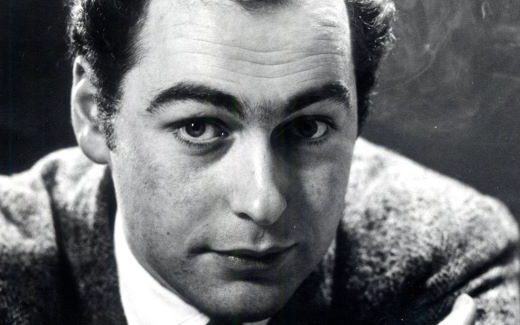
Active: 1971-82
Key works: The Private Sector, The Sixth Directorate, The Flowers of the Forest (aka The Oxford Gambit), The Paris Trap, The Valley of the Fox
We are really entering the top 10 here, it’s just that numbers 8 to 13 are pretty interchangeable and I can’t cheat and do an equal ranking.
Quality-wise, Joseph Hone is an easy top 10. He is, in my view, the greatest largely unknown spy writer of all time, despite the best efforts of myself and, particularly, Jeremy Duns, to popularise his novels. Quantity-wise, it is hard to rank him above some of those who follow.
Hone wrote just five spy thrillers but the least of them is very good and the best are as good as anything you will read in the genre. Comparisons to Le Carre are invariably fatuous but Hone, I think, is the novelist who comes closest to matching him for elegance and depth of character. And his books also have far more action. And Hone could write women. He is the missing link between JLC and the modernists. It is beyond my comprehension that he is not better known.
My favourites are the first two: The Private Sector and The Sixth Directorate. Both feature Peter Marlow, a misbegotten Englishman who we first meet when he is sent to Cairo on the eve of the Six Day War by British intelligence to hunt down an old friend who has disappeared, it is feared to the other side. The book is beautifully written, with prose worthy of Greene. A woman – Bridget – who both men love, leaps fully formed from the page. Some criticise the amount of back story on Marlow but it adds richness and if you stick with it (the plot really gets going one third of the way in) it’s also packed with action and twists.
Like many good spy thrillers, Marlow soon has problems with his bosses at home as well as his main mission. In The Sixth Directorate Marlow is sent to impersonate a KGB sleeper agent in Britain who moves to the United Nations in New York in a bid to unmask a KGB network there. It’s another tense and wondrous book. Marlow then returns in The Flowers of the Forest, an awful title (it was renamed The Oxford Gambit) that involves a classic molehunt and is also very satisfying.
His final outing, The Valley of the Fox, sees him on the run, in a chase plot somewhat reminiscent of Rogue Male. Between the first two and last Marlow books, Hone published another thriller, The Paris Trap, which features a British spy who wrote a thriller about Palestinian terrorists and his old friend who is the matinee idol actor starring in the film. Things take a sinister turn when terrorists launch a kidnapping to try to get the script written more sympathetically. It’s a complex romp.
All of Hone’s novels feature strong female characters and have at their heart a study of relationships between men and women as well as between two sides in an intelligence war. Hone took a break from writing and returned with a couple of books on a great Irish house (while born a Brit he was raised in Ireland) between the 1890s and the Second World War and an epic set around Romanov Russia but he never dabbled with thrillers again, which is a crying shame.
The good news is that Hone’s work is available on Kindle and through the Fabre Finds imprint. In the introduction to the FF edition of the Private Sector, Jeremy Duns says he regards Hone as “one of the great spy novelists of the twentieth century.” Jeremy is right.
12. Brian Freemantle
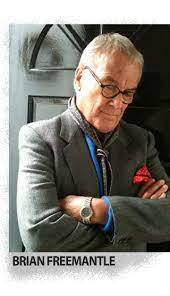
Active: 1973-2004
Key works: Charlie Muffin, Charlie Muffin’s Uncle Sam, The Blind Run, Clap Hands Here Comes Charlie, The Run Around, Goodbye to an Old Friend, The Little Grey Mice, The Factory, The Button Man
A bit like Joseph Hone, this ranking seems stupidly low, churlish even for a writer who created one of the very greatest characters in spy fiction. Charlie Muffin is like the nameless spy/Harry Palmer’s more entertaining brother. He’s a working class lad working to a bunch of public schoolboys, a pain in the backside to his bosses but a consummate operator. And if you like that sort of thing there are 17 books.
The series is a feast which I’m rationing. So many first books in a series are scene setters, they spend so long introducing the character that they forget about the plot. That isn’t the case here. The eponymous opener (known as Charlie M in the US) is such a brilliant work with a demonstrable ending that it might be considered one of the great works of spy fiction, standing in its own right. So it’s a delight that there are then more to savour.
Charlie is clever and imaginative in outmanoeuvring his bosses and the KGB but he does not always win, which is refreshing. Fremantle really gets into his stride by book four, the high point of the ones I’ve read. If it were Charlie Muffin alone, Fremantle would deserve this sort of ranking but he also had several other phases of his career.
Before Muffin, in the early to mid-1970s, he wrote a series of stand-alone spy thrillers such as Goodbye to an Old Friend, The Man Who Wanted Tomorrow, and The November Man (which predates the Bill Granger book of the same name by three years). I’m also fond of his book of short stories, The Factory, set in a branch of British intelligence of the same name. Each story stands alone but they are linked by the hunt for a mole.
Another late career highlight is his novel on the Romeo spies, Little Grey Mice, which shares some of its moral dilemmas with Paul Vidich’s latest, The Matchmaker, but takes a different direction. Both of those date from the dawn of the 1990s.
Now halfway through the Muffin series, Freemantle then began a simultaneous second series which has more of a detective feel, but which pairs FBI agent William Cowley with Dmitri Danilov, a Colonel in the Russian People’s Militia. They are brought together in The Button Man (1992) to investigate the murder of a US Senator’s daughter in Russia. It’s a good idea (if one that dates the books to the time of Glasnost) and one which ran for four books.
If that was not all enough, Brian Freemantle also wrote non-fiction books on the KGB, the CIA, industrial espionage, organised crime and a biography of Ian Fleming called The Man With the Golden Pen (under the pseudonym Richard Gant). Like Ted Allbeury the sheer volume of his output makes knowing where to start somewhat daunting, but the good books are very, very good indeed and with Freemantle it’s easy. Just pick up Charlie Muffin and get on with it. It is one of the half dozen greatest spy series ever written.
11. Charles McCarry
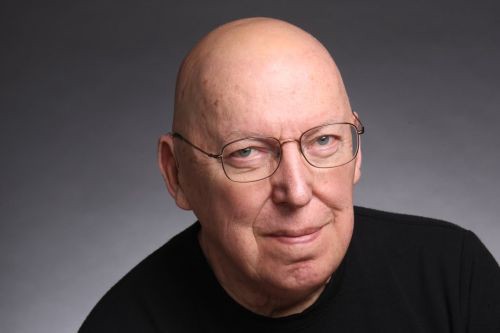
Active: 1973-2015
Key works: The Tears of Autumn, The Secret Lovers, The Last Supper, The Miernik Dossier, The Better Angels
This was a painful decision since Charles McCarry is one of the acknowledged masters of the genre and, with Littell, the most important figure in the transformation of US espionage writing into the serious competitor it now is for the best of the British authors. But as I said earlier, the top 13 is really the top 10 in terms of quality.
All that held me back slightly from putting McCarry in the top 10 proper is that, like Ross Thomas, I slightly prefer his political novels with a twist of espionage to his full-blown spy novels. The Better Angels (1979), my favourite, features some of the best writing about the characters and overblown egos of political Washington that I’ve ever read. It centres around a plot to steal the presidency by cousins of Paul Christopher, who is McCarry’s main recurring spy character.
The sequel, Shelley’s Heart (1995), features a plot to secure a presidential impeachment. McCarry was an undercover operative for the CIA for nine years before he took up writing, but he can really write and that was immediately obvious with the publication of his first novel, The Miernik Dossier in 1973, which won rave reviews and immediately established him as a major player. It concerns an investigation into a Soviet spy in Geneva but is written with calm control and in a deliberately non-sensationalised fashion designed to increase verisimilitude. Paul Christopher is introduced in the book but is not always its focus and if I have another criticism of McCarry it is that he began a series, without really planning to, with a character who was so competent and uber-cool that he sometimes seems a little cold and bloodless.
Christopher’s back story is filled in a great deal in subsequent books, but he never quite rises to the level of some of the leads in the top 10. However, this is to gripe. These are very good books indeed.
The best known, and the one which you should go for if you’re one of those people who wants to know “if I read just one…” is The Tears of Autumn (1974), in which Christopher probes the Kennedy assassination and comes up with a solution which is immediately satisfying, if predictable quite early in the book. It makes so much sense you wonder why the conspiracy theorists haven’t latched on to it.
My favourites of the Christopher series, published either side of The Better Angels, are The Secret Lovers (1977), where Christopher uncovers a plot inside the CIA and The Last Supper (1983) in which Christopher clashes with the Chinese. Both dig deeper into his personal life, humanising a character who is a mystery man in the Miernik Dossier. Second Sight, Old Boys and Christopher’s Ghosts complete the series, along with a book about Christopher’s 17th century ancestors, The Bride of the Wilderness.
McCarry also wrote a bunch of non-fiction books and several standalone thrillers, of which The Shanghai Factor (2013) is a welcome addition to writings about espionage in China. Indeed, in general, McCarry takes his characters to a host of Far East locales not that often visited in spy fiction.
The Wall Street Journal described McCarry in 2013 as “the dean of American spy writers” and Otto Penzler described him as “the greatest espionage writer that America has ever produced.” This is a perfectly defensible position and I think he’s one of those writers that every Spybrarian must read.
At various points in this process, he has been as high as eighth on this list overall. I have two other Americans ranked above him.
Further Charles McCarry Reading and Listening
NPR – You Must Read This – The Miernik Dossier – Olen Steinhauer
The Miernik Dossier Review by SpyWrite
Thanks for sticking with me this far. I’m now going to do a quick list of the writers I haven’t read who I think would have made the list if I had and hopefully we will end up with a fairly definitive list of the top 200 spy writers. Suggestions of those who are missing would be helpful…

The Other 170 must-read spy authors by Tim Shipman.
Let’s just call this project the Top 300 spy writers. As promised, I’ve now augmented the main list of 125 best spy writers I have enjoyed with what follows: more than 170 new spy writers who should be read…
The Top 10 Best Spy Authors (according to Tim Shipman)
10. Peter O’Donnell
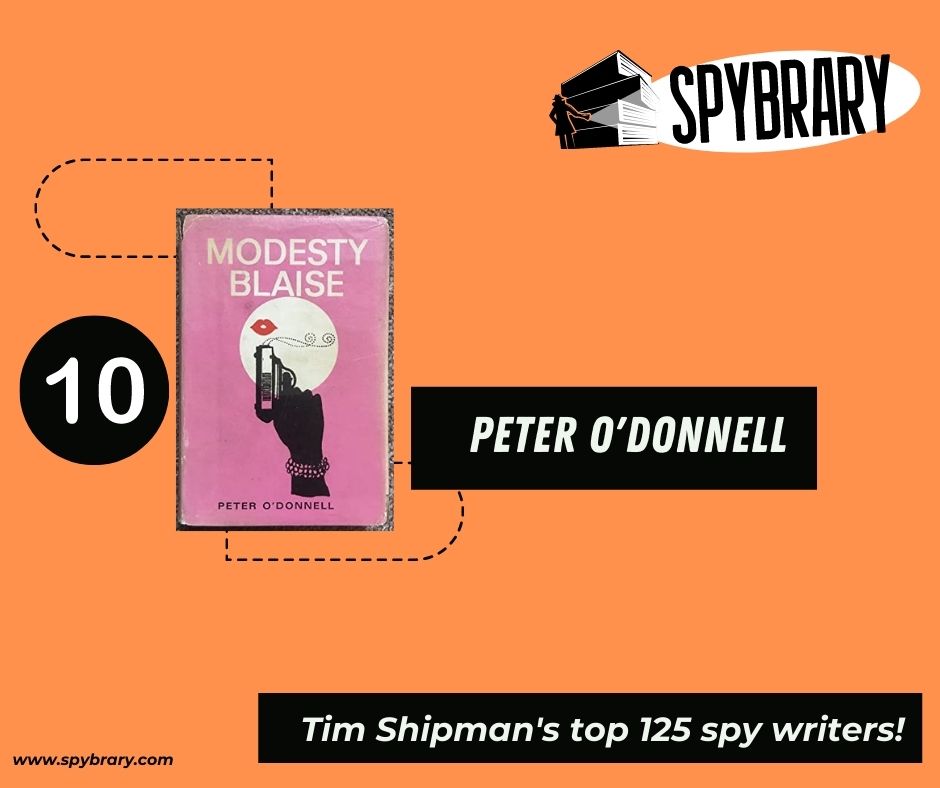
Active: 1965-96
Key works: Modesty Blaise, Sabre Tooth, A Taste For Death, The Silver Mistress, I Lucifer, Pieces of Modesty, Cobra Trap
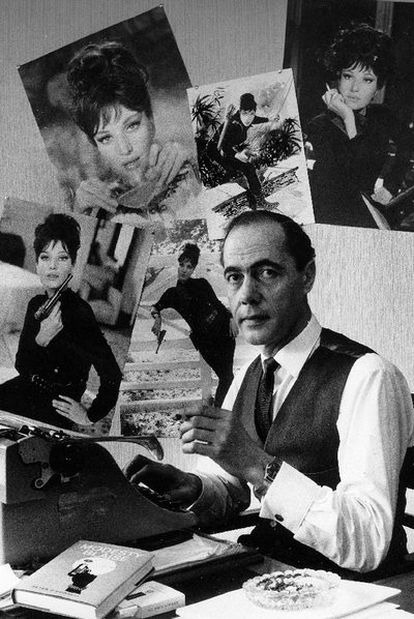
Reflecting on who and what I read and where I go back, I think I’m originally attracted by setting, by time and place and particularly by plot, but what keeps me coming back for more is character and that’s why Peter O’Donnell sneaks into the Top 10, somewhat to my surprise.
In a genre and a list where so much is either an attempt to copy Ian Fleming or to repudiate him, O’Donnell did something much more interesting: he devised a character that was in many ways similar and in the most obvious way different.
While the old line goes men wanted to be Bond and women wanted to be with Bond, Modesty Blaise is such a character that men would like to be as able as her and be with her. She is not only one of the greatest kick-ass action operatives and sexy as hell, her back story is so laden with pathos that it gives her a human and vulnerable air as well.
The other genius of the books is the relationship with Willie Garvin, who may be the greatest sidekick in spy fiction. Theirs is a relationship based on toughness and tenderness, a real partnership and friendship of mutual respect which never gets confused by becoming sexual. Modesty gets her considerable kicks elsewhere. Together these two are a well oiled machine and O’Donnell gives them truly ingenious techniques to escape their various binds and complete their missions. This may be imaginary tradecraft but it is a key element in making these books so enjoyable. And boy do they get in some binds, up against some of the most exotically psychotic villains ever put to the page.
It makes sense to start with the first one to get Modesty’s back story and to set up her relationship with Garvin and with Sir Gerald Tarrant, the spy chief who brings her out of retirement as a criminal mastermind to work for the secret service. I’ve only read the first four books but Sabre Tooth, the second, and A Taste for Death, the fourth, are generally considered the two strongest entries, though those who have read the lot also love The Silver Mistress and the two volumes of short stories: Pieces of Modesty and Cobra Trap. If some of the plots become repetitive that is not the point.
Spending time with Modesty and Willie is one of the greatest pleasures in spy fiction and it is enough to elevate them over a handful of perhaps greater spy writers. Which is not to say that O’Donnell can’t write, he can, indeed he manages the excitement with deft speed and pulse pumping tension. But what he has done is far greater than that, he has created characters who are at once both incredible and believable.
So why aren’t they better known now?
One of the greater tragedies in spy fiction history is that the Modesty Blaise film was not up to scratch. It genuinely could have been as great a franchise as Bond and, in the right hands now, it still could be. Indeed in the equality of the Modesty-Willie partnership, it is altogether more modern than Bond. It is also highly regrettable that these books are not currently available (in the UK at least) on Kindle, an omission I find baffling. Fortunately, the paperbacks can be had very cheaply online.
Modesty Blaise is both thrilling and comforting, like that old jumper you love to wear on a lazy Sunday afternoon, but when you do it still clings in all the right places – and that’s a Top 10 achievement.
Further Reading
MODESTY BLAISE AND PETER O’DONNELL AND THE LAST GREAT ADVENTURE STRIP
Peter O'Donnell Obituary – The Guardian
9. David Ignatius
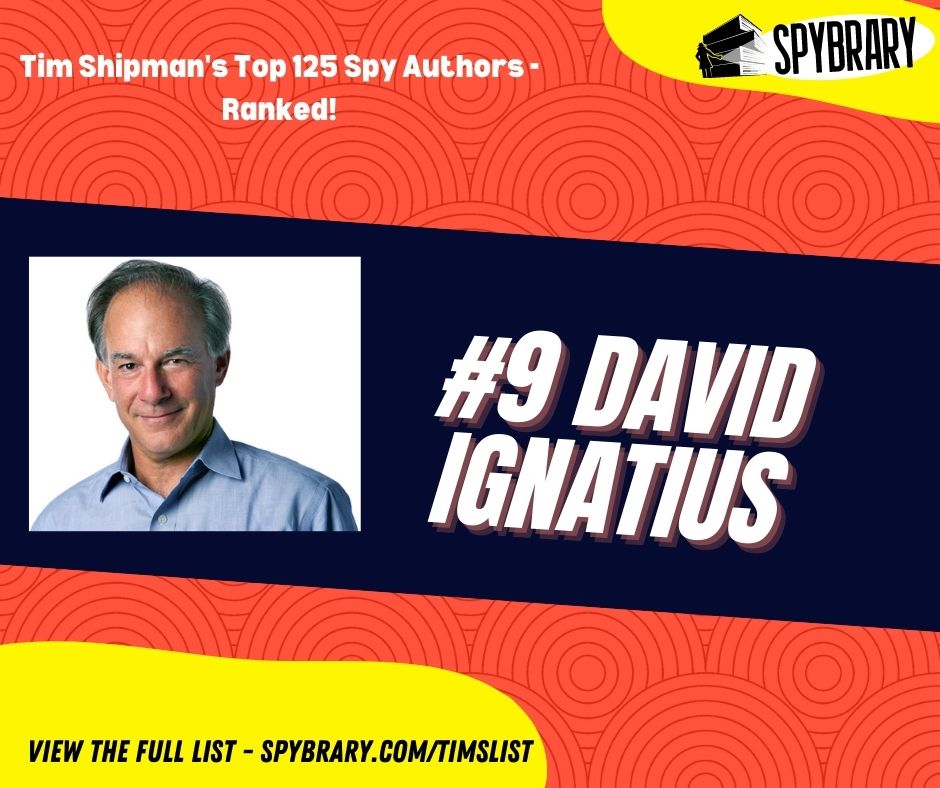
David Ignatius Official Website
Active: 1987-2020
Key works: Siro, Agents of Innocence, A Firing Offence, Body of Lies, The Increment, Bank of Fear
Every day I post these names I wonder to myself whether it’s a day when I’m going to face a torrent for putting someone too high or too low. I think this is the last day when I’m concerned about people thinking I put someone too high. In truth, I’m not that worried because I have had David Ignatius as high as No 5 on this list at various points in the process. Indeed, had his last four books been as good as his first six, I would have had no hesitation in putting him that high.
So, caveat first, it matters which ones you read because there has been a noticeable drop off in quality, which began with Blood Money (2011). That and some of those which followed could have been written by any one of dozens of perfectly accomplished but undistinguished spy writers. The kind of people well worth a slot in the 100-200 range in our new expanded list of writers.
I also don’t think it is a coincidence that Ignatius, a former security editor with the Washington Post (now a columnist), who is very well plugged into the intelligence establishment in DC, has tried to move with the times, increasingly writing about the high-tech side of spying (The Director, The Quantum Spy), which has, in real life, totally overwhelmed human intelligence gathering, and plays a bigger role in spy fiction too. But there is something inherently less satisfying about this from a dramatic point of view. The best spy fiction is about people and David Ignatius writes brilliantly about people.
His first book, Agents of Innocence, is taught in some spy training facilities around the world as a template for brilliant tradecraft in recruiting and sustaining a relationship with a source. It is the story of how the CIA spied on the PLO in the 1970s through their relationship with a senior figure in Fatah and Black September. The word in Washington is that this is basically a true account of the recruitment of Ali Hassan Salameh, known as “The Red Prince”, the most notorious playboy terrorist in 1970s Beirut. Salameh’s handler was Robert Ames, subject of the brilliant biography The Good Spy. Here he is called Tom Rogers.
As in real life, there is delicious ambiguity about whether the CIA recruited Salameh or whether he was playing a double game. Certainly, there were benefits for both sides in the 3D chess of Middle East relations and certainly, the price America paid for his information was too high. At one point the book was described by the CIA on its website as “a novel but not fiction.” As an exposition of the moral ambiguity and shades of grey in espionage it is unsurpassed. Yet what sticks in the mind are also beautifully rendered scenes at an embassy dinner party, complete with Le Carre-esque understanding of the hierarchies and rivalries, professional and sexual inside a diplomatic/intelligence community.
Ignatius’s best known book is Body of Lies, which became the rather good 2007 Ridley Scott film starring Leonard o DiCaprio and Russell Crowe. The book is even better. Its premise is stolen wholesale from the Operation Mincemeat ruse in the Second World War of planting a corpse with false information, but the tradecraft involved is a delight and the whole thing is done with sophistication, tension and panache, complete with a good twist. It is one of the better spy thrillers of the last 20 years.
Perhaps edging even both of these is my favourite of his books, A Firing Offense, which begins with one of the grand social scenes at which he excels, a Washington funeral for a legendary journalist, who it transpires was up to his neck in espionage. One of his young colleagues begins to investigate and soon finds himself in over his head. It’s gripping and beautifully written.
One of Ignatius’s great triumphs was to go to places that are a little off the overly-beaten tracks of Cold war espionage writing. Agents of Innocence is set primarily in Lebanon, The Increment (2009), the last of his great novels, is the best thriller I’ve ever read about intelligence wars with Iran. Siro (1991), another I regard as in the very top echelon of spy books I have read, and maybe even the best “if you read only one” option, features a top secret plot to undermine the Soviet Union on its flanks, taking in Turkey and the Stans. It features in new girl Anna Barnes, the cold calculating mastermind Edward Stone, istanbul station chief Alan Taylor and – most of all – heavy drinking ex-CIA man Frank Hoffman – Ignatius’s best ensemble cast. Hoffman is reminiscent of Jason Matthews’ Marty Gable, but he was there first and leaves a more indelible impression.
The Bank of Fear (1995) is also a highly accomplished novel, which shares some subject matter with Single and Single, but is perhaps a notch behind the others.
Charles McCarry (No 11) and Robert Littell (No 14) are arguably more important in the history of the development of American spy fiction, but my strong view is that Ignatius’s best books are a notch ahead of anything they wrote. Tread with caution when approaching the recent stuff (and I haven’t read The Paladin, so I’d be interested if this is a return to form) but the early books are superb and bear comparison with the best five books of pretty well anyone I’ve read.
8. Mick Herron
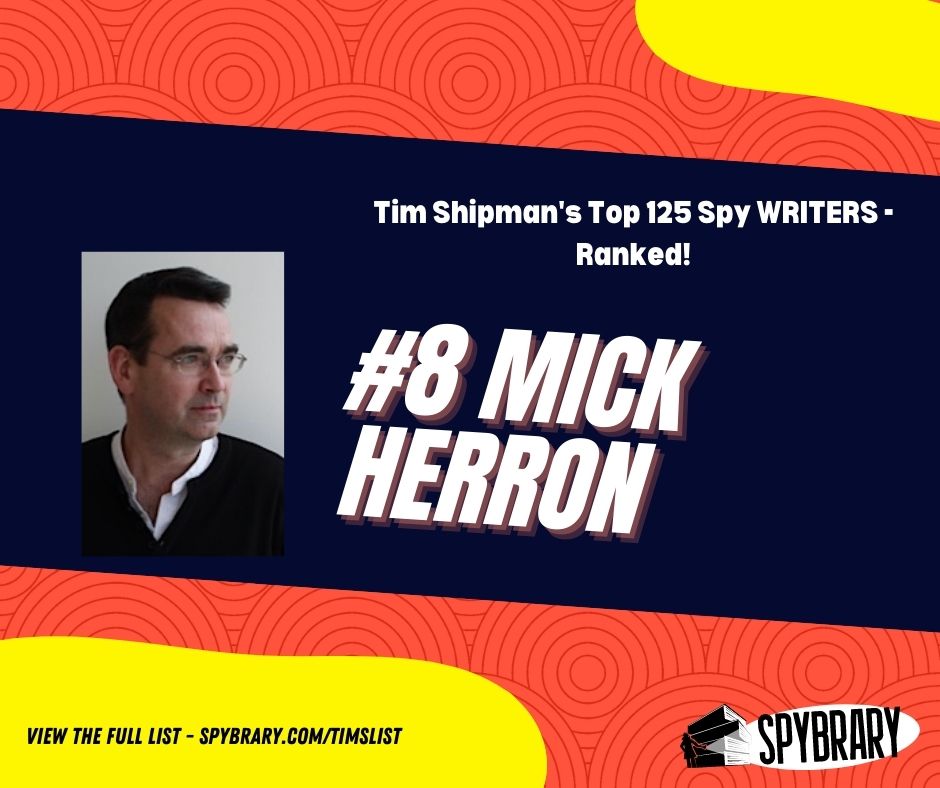
Mick Herron Official Website
Active: 2010-
Key works: Slow Horses, Dead Lions, Real Tigers, Spook Street, London Rules, Joe Country, Slough House, Bad Actors
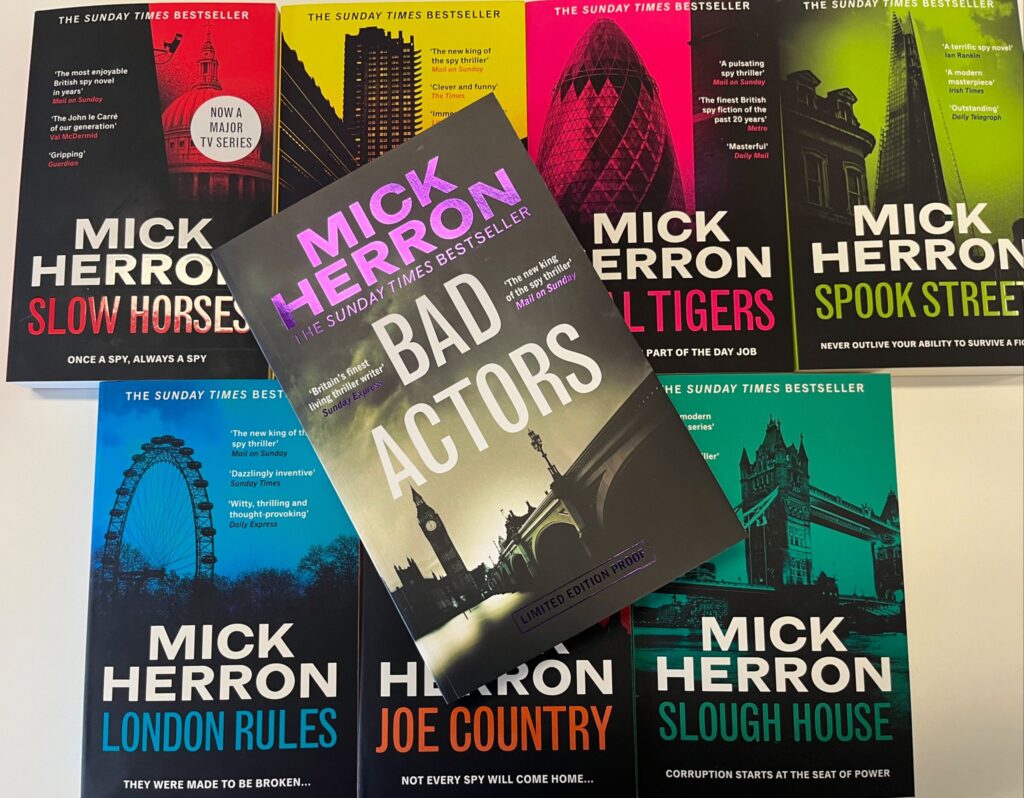
Mick Herron is the best British spy thriller writer of his generation. That such a statement is barely controversial these days says a lot. Only Charles Cumming has a rival case on the basis of similarly sustained excellence. When I spoke to Mick recently for my Sunday Times ‘Spy Fiction's New Golden Age‘ piece he said that he switched from writing about his private detective Zoe Bohme (2003-09) to write about spies because he wanted to spread his wings.
“I wanted to write about a cast of characters,” Herron told me when I interviewed him recently for my Sunday Times piece. “I left my private detective behind to write about a group of people. I didn’t want to write police thrillers because you have to research that and get it right and I’m not interested in writing a police procedural. You can make a lot of stuff up when you write about spies and convince people you know what you're talking about.”
This was a masterstroke because Mick devised a quite brilliant concept – that failed spies are not fired but sent to purgatory in a dilapidated office near the Barbican, Slough House. He also went on to populate the building with an ensemble that has no peer among his contemporaries and perhaps only a couple of rivals in the history of the genre.
In Jackson Lamb he may have created the greatest maverick spy chief we have ever seen. My own favourites, after Lamb, are Roddy Ho and Shirley Dander. It is their interactions which make the series, the fantastic plots are almost a bonus.Herron remarked: “If I could get away with it I would just have my characters sitting in the office squabbling, which would be truer to the concept I have, that these are people who don’t get out much. They’re in Slough House because they’re not allowed to do anything important, but they always end up in hugely important things. They’re like the Famous Five: every time they went on holiday, they had an adventure.”
Herron’s willingness to kill off his main characters is also brave and to be commended and it’s one which actually heightens the worth of those who survive, deepens the emotional impact of those who don’t make it, as well as keeping the reader on their toes and making the sense of peril seem very real. For this reason it is also important to read the books in order.It’s not just the characters that impress.
Herron has also created a fully realised world, complete with its own language. “Regents Park” may not be quite at “the Circus” levels of recognition yet but “first desk”, “the dogs” and other terms seem likely to enter spy yore. The three novellas (The List, The Drop and The Catch add another layer).
His main achievement, of course, is to combine character and place with genuinely gripping terror and espionage plots, biting satire and genuine humour. He sees the latter as vital: “The times got so crazy, especially since 2016, that I think the appropriate response to it is incredulous laughter, deep sarcasm, bad-tempered humour.”Slow Horses (2010), longlisted for the Ian Fleming Steel Dagger, is a triumph and for my money Dead Lions (2013) is even better. It won the Gold Dagger.
But it is the third book, Real Tigers (2016), the first which John Murray, his English publisher, championed, where Herron really hit his stride, perfecting his formula and taking it further. I think it’s still my favourite and Herron agrees it is one of his very best.
He has a very interesting insight on how this came about. Both the first two books won critical acclaim and prizes and that liberated Mick. He told me: “Real Tigers is the one where I really started having fun. There are a couple of moments in that book where I thought ‘I can’t possibly do this, it’s ridiculous.’ I had won the dagger for the previous one and I had it on my shelf. I looked at the dagger on my shelf and thought, ‘Yes, I can! I can do whatever I want’. It really made a difference. I started to feel at home with the characters.”
Spook Street (2017) is where Herron really went interstellar and eight years of slog really paid off. It won the Steel Dagger and was shortlisted for the Gold Dagger (In total, Mick has 10 dagger nominations and two wins, which is an astonishing haul). “That was when the publishers really got behind me and were making great things happen.”
The author had an ambivalent relationship with the manuscript before it was published. “Relationships with individual books go through a very familiar kind of rollercoaster,” he said. “When I’m writing them I will love them one day and hate them the next. In that gap between delivery and publication, I generally hate them and I start the next book as an apology for the last one. But after a while, you wait a year and it settles down.
I hated Spook Street when I delivered it. I actually apologised to my editor and said, ‘This is definitely a downturn in the series’, and now I think it’s probably the best. It’s the one I’m fondest of. Looking back at it now, that one had a bit more depth to it.” Taken with Joe Country (2019), the direct sequel, it is Herron’s opus.
If I have one reservation, and it is a small one, tonally, the humour can sometimes distract from the drama and the subject matter of spy books is inherently serious. There are moments in London Rules (2018), which contains some of Mick’s best action writing, that verge dangerously close to farce. Others would say it is a great amuse bouche between the heavier “River’s dad” plots of Spook Street and Joe Country.
As the series went on Herron began to use his barely veiled simulacrum of Boris Johnson, the loathsome Peter Judd, more and more. By Slough House (2021) he was integral to the plot, rather than comic relief. Time will tell whether this ages the books in due course, but it certainly adds another layer.
Herron must now share ownership of Jackson Lamb with Gary Oldman and the producers of the TV series, but I’m not worried that he will get bored of this creation. John Le Carre eventually said he didn’t want to write more George Smiley because he had bequeathed the character to Alec Guinness.
Herron says he wrote Bad Actors (2022), coming soon, without such burdens. “I don’t feel that it’s taken over the characters when I'm writing them. I love seeing them on screen but the Jackson I'm writing to is the one in my head.”
Nor will whatever fame the TV series brings him change him I suspect (“I think writers are better off when they aren’t recognised and they can focus on the work”)
One of the great pleasures of the last decade has been the chance to spend time in Mick Herron’ head. He has devised a series for the ages. He writes wonderful character, action and comedy. It would not be a surprise if he ended his career in my Top 5. I hope that moment is a long way off.
Listen to Mick Herron discuss his Slough House series on the Spybrary Spy Podcast
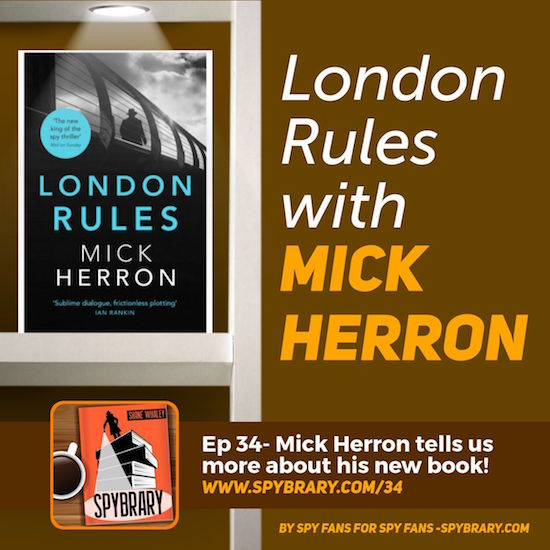
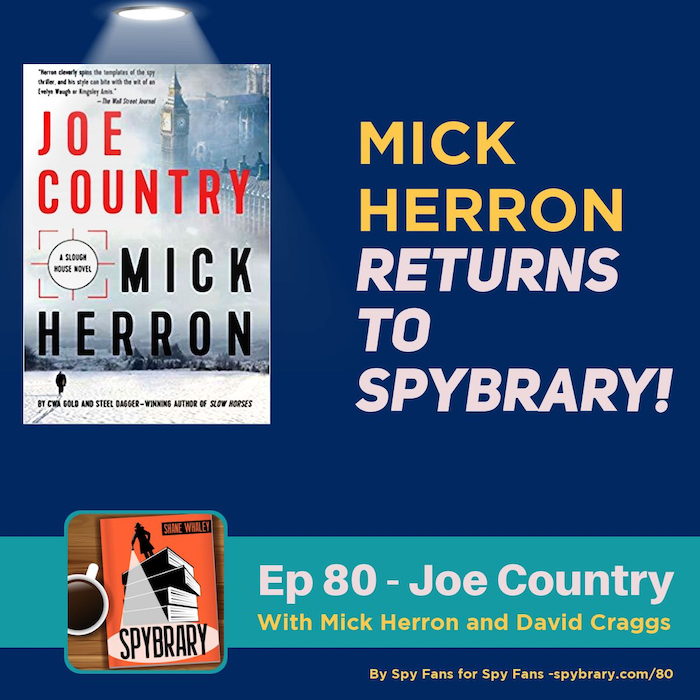
7. Adam Hall
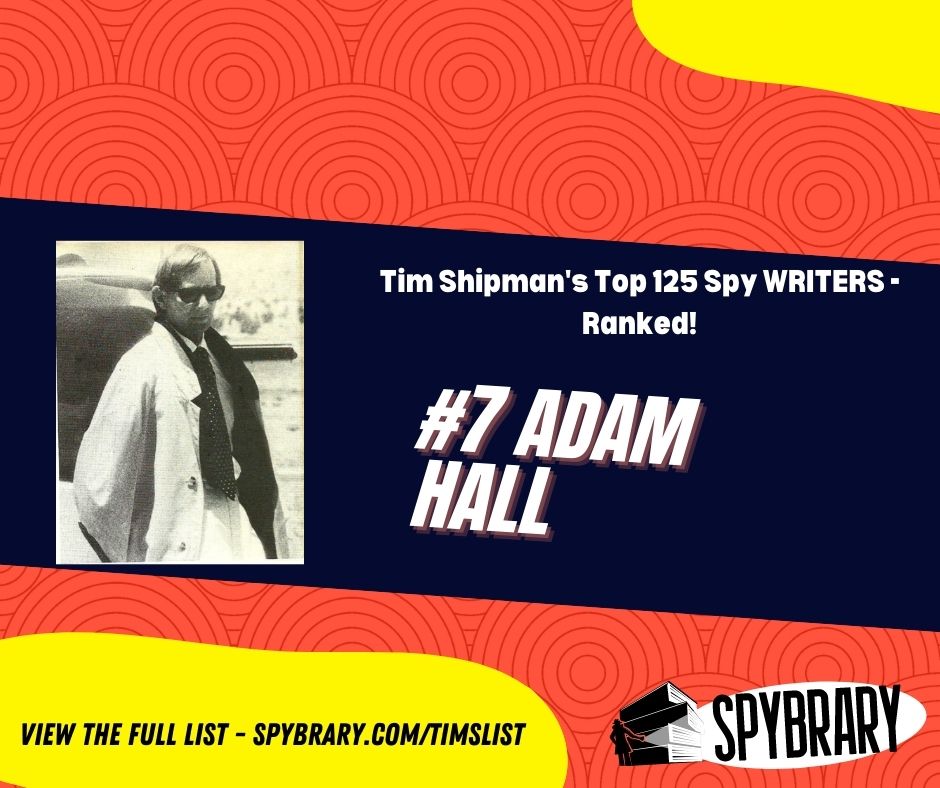
Active: 1965-96
Key Works: The Warsaw Document, The Tango Briefing, The Ninth Directive, The Kobra Manifesto, The Scorpion Signal, Quiller KGB, Northlight, Quiller’s Run
Quiller Books In Order
I was a relatively late adopter of the Quiller novels, since I joined Spybrary in fact, but they are good enough that it was a serious discussion in my head whether they are in fact the best series about a lone secret agent by a British author. Yes, including a certain Naval commander. I’m still working my way through them, but Quiller is a singular voice. You would only have to read a few sentences to know you were inside his head.
The author behind Quiller was the man with three names. He was born Trevor Dudley-Smith but changed his name to Elleston Trevor. Under this byline he wrote Flight of the Phoenix (1964), a very successful film. But it was as Adam Hall that he achieved immortality in the ranks of spy writers.The dominance of the internal dialogue he creates ia such that the books are more than usually difficult to film.
The Quiller Memorandum was a success but it was not good enough to launch a film franchise. The attempted Quiller TV series proved to be a flop, something which has damaged the brand every bit as much as it did to Modesty Blaise. And yet in spy circles these books are rightly revered, in part because the character and his creator have so deftly managed to combine proper, gripping excitement, the conjuring of place (which means you feel the cold crunch of gravel under your foot), all with a thoughtful but dynamic character whose trials you live more intimately than with Bond.
Greg Rucka, the writer of the spy series Queen and Country, correctly placed Hall’s work in the marketplace of spy thrillers when he called Quiller “bridging books…that attempted to mix le Carre’s verisimilitude and Fleming’s absurdity and come up with something that was deeper than just the average fluff.” In terms of how he did this, I can put it no better than author and Spybrary member Jeffrey Westhoff, who wrote “No author has crafted tension on the page as masterfully as Hall. With the Bond books you remember the women, the villains, the locales. With the Quiller books you remember the hand-to-hand melees, the top-speed car chases, the incredible escapes – all written in such excruciating detail you can feel each bead of Quiller’s sweat.” And this is the point.
My favourite of the books I have read, The Warsaw Document, contains the most thrilling car chase I’ve ever read. I can’t remember the full details of the plot anymore but I can still feel what Quiller felt when the car begins to skid on black ice, I can still appreciate what I felt as a reader fearing that things might go catastrophically wrong, but sharing Quiller’s own confidence that he was still, somehow, in control of his own narrative.
A word, not of warning, but perhaps of caution. When Quiller appears in the inevitable best ever spy book lists, it is almost invariably The Berlin Memorandum (retitled The Quiller Memorandum in the US, to match the name of the film) which is cited. And yet, a little like The Ipcress File, the first book is not necessarily the best entry into the series. It is over-complicated and Hall was still developing Quiller’s voice. If you are someone easily deterred I would look elsewhere for a first taste of Quiller, perhaps The Ninth Directive, where he is sent to Hong Kong to thwart and assassin intent on killing a royal personage who is clearly the Duke of Edinburgh.
Habit means I tend to read most authors of a spy series in publication order, but I think that is less essential in this case, just as it doesn’t overly matter with Bond in the way it does with Deighton, Herron, or the Smiley books. The Tango Briefing is the favourite of a lot of readers, including, I think, Jeremy Duns. I’m fond of all the iron curtain ones I’ve read.
It may be a minor point, but these books are also a delight to collect as first editions. The British covers are wonderful and the last few are very hard to get for a good price since the print runs numbered in the hundreds. Hall/Trevor was a pro to the last. The story goes that he finished the final page of the last book, Quiller Balalaika, and died within 24 hours of finishing his greatest works.
How good was he?
Shane Black screenwriter of Lethal Weapon and many other films who said – “In the last half-century or so, the mantle of “best spy series” devolves not, in my opinion, to Ian Fleming’s Bond — but rather to the QUILLER books by Adam Hall (aka Elleston Trevor). Sheer narrative intensity. Your hands may as well be nailed to the book.”
Bonus – Where to Start with Reading Quiller. (Jeremy Duns)
Over on our Spybrary Group (where this list is analyzed and debated daily, author Jeremy Duns offered this sage advice on where to start with the Quiller books.
‘Lovely stuff – I had a hunch Hall was up next. I'd add a similar word of caution/advice: these are quite hard to get into. These are the late Scott Walker albums of spy fiction.
They are a little like a whole series made up of Honourable Schoolboys in terms of difficulty to grasp so it's fairly common that people read one or two Quillers and don't really get it. Deighton's a bit the same, especially if you start with IPCRESS. But just as that novel and Schoolboy pay off, so do the Quillers.
Persist.
Read three, preferably from the first six but not Memorandum.
If you really don't like them then they are not for you – but I think a lot of people here would then find themselves with the zeal of a convert.
There is nothing else like them, and the series is an extraordinary accomplishment. I suspect that once Tim has finished the lot his admiration for them will increase further, and we could see Hall move into his top five.
In short: if you’ve tried a Quiller and didn't quite get the fuss, try again. Seriously.‘
6. Graham Greene
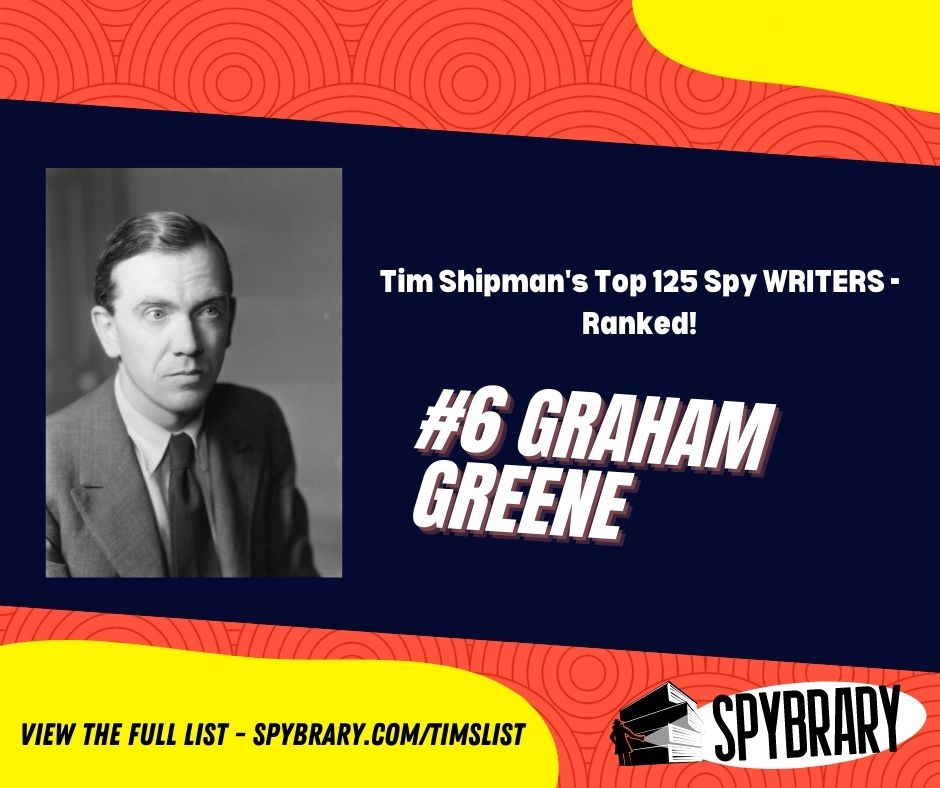
Active: 1932-78
Key works: The Human Factor, Our Man in Havana, The Quiet American, The Third Man, Stamboul Train, The Confidential Agent, Ministry of Fear, A Gun for Sale
Graham Greene is the last author on this list who is hard to categorise, a genuinely great novelist who also wrote spy fiction. But unlike some who dabbled, the espionage work was a significant part of Greene’s output. Indeed he must be seen as one of the key fathers of the genre. In any reckoning of the most important spy writers he is a key way point alongside Buchan and Ambler in the legitimising of espionage as something to be taken seriously – though ironically he went some way to undermining the notion that they should be considered alongside his great “serious” novels by labelling many of them “entertainments”.
While that may be true of Stamboul Train (1932 – the second best thriller set on the Orient Express), The Confidential Agent (1939) or Ministry of Fear (1943), it is selling The Human Factor or The Quiet American short to consider them anything other than absolutely top drawer entries in his back catalogue.
I would say both will be read by people wanting to understand the 20th century through its literature long after Heart of the Matter, The End of the Affair or Brighton Rock. Greene, of course, brought personal experience as well as authorial excellence to his spy work. He was recruited into MI6 by his sister, Elisabeth, who worked for the agency, and posted to Sierra Leone during the Second World War. Kim Philby was Greene's supervisor and friend even after he quit SIS in 1944. Greene later wrote an introduction to Philby's 1968 memoir, My Silent War.
It is not a coincidence that The Human Factor (1978) is one of the best books ever written about the banality of betrayal. Like Le Carre and Deighton were already doing by that stage, Greene explored how life-changing decisions could be made by office-bound drones who were bored and depressed as well as ideological or greedy.
In his memoir, Ways of Escape, Greene wrote of The Human Factor: “I wanted to present the service unromantically as a way of life, men going daily to their office to earn their pensions, the background much like that of any other profession.”
Perhaps his most important work for us is one not usually taken as seriously as it should be. There is an argument that The Third Man is the greatest British film ever made. It is probably my favourite. The book is often dismissed as a novella that simply sketched out the details of the film, but it was an important staging post in the history of espionage fiction. When I was recently exchanging messages with Paul Vidich about Greene’s place on this list, he made an observation that immediately chimed with me.
Paul wrote: “It is important to place The Third Man and The Quiet American in Greene's oeuvre of spy fiction. I rate The Quiet American among his best novels, and The Third Man, while slim, is (together with Carol Reed's film, which Greene wrote the treatment for), a story that defined the beginning of the Cold War grimness in fiction. Casablanca, with its Hollywood romance, defined the pre-war period, but The Third Man's gritty, cynical, anti-romantic spirit helped shape the beginning of Cold War realism in fiction and film. And The Third Man's narrative structure was pretty novel. Finally, the premise of the novel (writer coming in search of a man who we discover is dead) is a nod to Ambler's A Coffin for Dimitrios.”
In that sense, Greene is the pivot between the pre-war Popular Front, idealistic Ambler and the disillusioned writer who eviscerated the communist bloc in Judgment on Deltchev. The Third Man (1949) came 14 years before Le Carre published The Spy Who Came in From the Cold and supposedly created the cynical, realistic spy novel. Le Carre’s debt was even clearer, of course, in the way he lifted (for The Tailor of Panama) the premise of Our Man in Havana (1958) wholesale – a failing spy in pre-Castro Cuba realises he can keep his bosses happy by inventing a network of counterfeit spies and stumbles across the truth.
The plot owed something to the Garbo network in the Second World War, where a highly elaborate network of counterfeit agents was created to funnel useless, false, and outdated information to the Nazis. But the dark satire and humour and the first hand knowledge of Havana, which allowed him to recreate an atmosphere you can taste, was pure Greene.
Our Man in Havana was a reasonably good film too and has some right to be considered the most important and iconic British spy thriller before the building of the Berlin Wall created the conditions for what we now regard as the classic Cold War spy novel.
The Quiet American (1955), the other contender for Greene’s greatest espionage fiction, may be the best thing I’ve read about Vietnam, foreshadowing as it does how idealistic Americans (in the person here of blinkered CIA man Alden Pyle) would cause disaster in the decades ahead with a narrow-minded belief in US exceptionalism, literally and metaphorically screwing the locals. The Michael Caine film of the book is, with The Third Man, the other great Greene screen adaptation.
For a lot of writers, Greene’s prose is the lodestar of excellence. Joseph Kanon was recently thrilled by a review of The Berlin Exchange in The Times, which compared his writing to Greene’s. “The sort of comparison that is ultimately the most flattering is comparison to Graham Greene,” Kanon told me. “It doesn’t get better than that. He is just a really great writer.”
And, Spybrarians, he is one of ours. Amen to that.
5. Ian Fleming
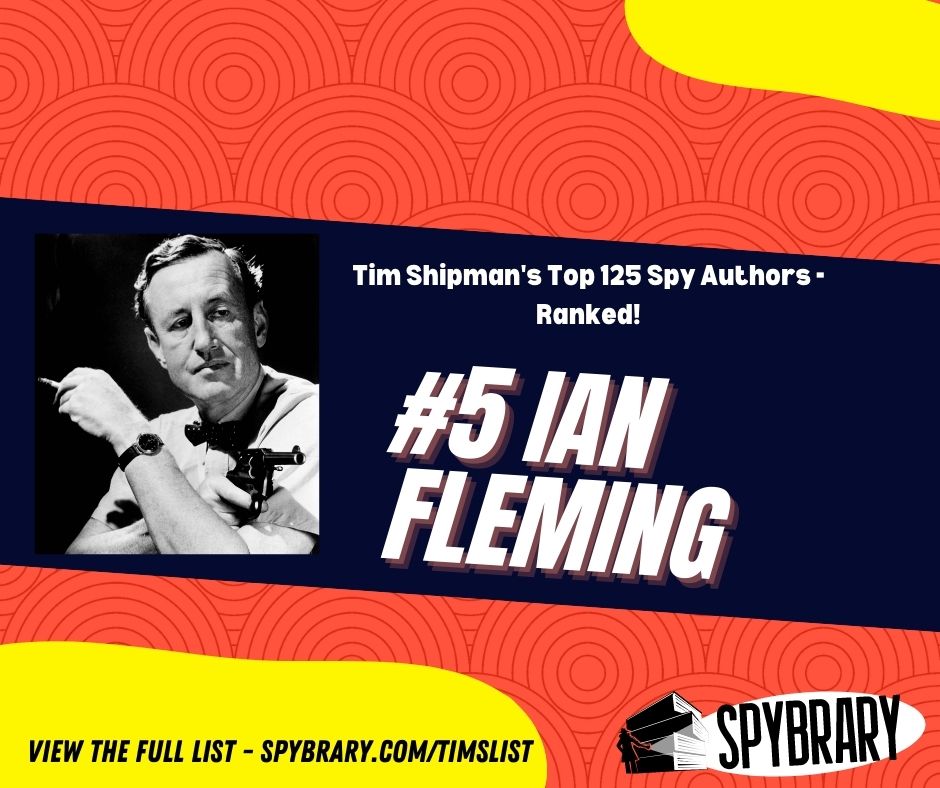
Active: 1952-65
Key works: Moonraker, From Russia With Love, Casino Royale, OHMSS, Dr. No, Thunderball, Goldfinger, You Only Live Twice, Live and Let Die
So how many of you thought he would be in the top three?
Most, I suspect.
For many of you, he will be No. 1. Before you all go bananas, this is not a list of the greatest or most important spy writers, it is my list of those I have enjoyed the most, the authors where I salivate at the prospect of picking up one of their unread books.
It would be hard to argue against Fleming being the most significant spy writer of the 20th century, the fixed point others sought to emulate or repudiate. But, being frank, if you asked me now who I would most like to sit down and read, I doubt Fleming would make the Top 20.But like many of you, reading Bond was a formative and transformational experience for me, what Matthew Bradford brilliantly described as “a certain alchemy when the right books hit you at the most impressionable time”.
His books were not just vital way points in the history of the genre, they were the first significant signposts for my life of reading and that counts for a lot. While there are rather too many weak entries, where the high camp is not balanced by gripping plot or character work, the very best entries are very, very good indeed. They have been described as Fleming working out fantasies about himself, but there is also a good deal of his wartime experience there.
He combined the easy style of a Sunday Times journalist (where he was foreign editor) with someone who had spent the war in Naval Intelligence, where he was involved in dreaming up outlandish schemes. They were not all confined to his novels. Admiral Godfrey, his boss (and the putative model for M) put him in charge of Operation Goldeneye, a plan to launch stay behind commandos and sabotage operations if Spain ever fell to the Nazis. Fleming later used the name for his Jamaican villa, where he wrote the novels every spring.
He also had oversight of two intelligence units, 30 Assault Unit and T-Force. Ben Macintyre also believes Fleming was the inspiration behind a memo from Godfrey in 1939, called The Trout Memo, which compared the deception of an enemy in wartime to fly fishing. It proposed a plan to plant misleading papers on a corpse that would be found by the enemy, the inspiration for Operation Mincemeat to fool the Germans before the invasion of Sicily.
Fleming is a much better writer than he is given credit for. There is perhaps (from a modern perspective) a little bit too much travel writing, necessary in the 1950s to describe places which were exotic and unknown to most readers but have become more familiar with the dawn of cheap air travel. Fleming himself wrote that he wanted to introduce the reader to places, foods and experiences they did not know. It is easy to see why this was a heady brew in the drab austerity years of the 1950s.
Yet he is also magnificent at conveying mood and drama with an economy of effort. No one has ever written better about gambling and the baccarat scenes in Casino Royale and the Bridge scene in Moonraker (my favourite piece of Fleming’s writing) thrill the reader even where the subject matter is games they may not understand, quite apart from the atmospherics of the scene.
You can smell the smoke and leather in Blades and there can’t be many better first lines of a career than “The scent and smoke and sweat of a casino are nauseating at three in the morning”.
Bond, of course, is a far more nuanced character than is to be found in the films and while some of the sexism and racism is troubling these days, he remains someone it is good to spend time with. Nor is he the boilerplate lothario of yore. In Casino Royale he is fooled and betrayed by a woman. In Moonraker he doesn’t get the girl. Making the case for Fleming is almost superfluous since there cannot be a soul here who does not have strong views.
For my money the books in my top tier are in publication order): Casino Royale, Moonraker and From Russia With Love, with Dr. No, Thunderball and OHMSS a little behind. I like Goldfinger, but that is the one example where the film is considerably better than the book.
While I hated The Spy Who Loved Me as a teenager, I can see it is a brave and intelligent piece of writing . With just fourteen volumes, these are also the most highly collectible first editions in the spy world and anyone can put together a nice run of Pan paperbacks even if they can’t afford the Cape firsts.
Bond is an industry as well as a literary experience and the genius of Fleming in creating something so culturally durable. During his lifetime Fleming sold thirty million books and another 60 million in the two years following his death. The films have grossed in excess of $6.2bn.But we are here for the books and we can each only react in our own way.
Fleming created the modern glamour spy business and spawned so many imitators that well over half the authors on my “also must read list” were from the 1960s and 1970s.
Without Bond there would be no Matt Helm, Sam Durrell, Jonas Wilde or Dr Jason Love. And yet, for me, the enjoyment of escapism has a ceiling. Bond is a real character, with shades of grey, but not all his supporting cast are. The better books (Exhibit A: From Russia With Love) did connect Fleming’s creation to the real world Cold War context, but for me, the very best of those authors who attempted to write from the real world, have a slight edge.
In 2008 The Times ranked Fleming fourteenth on its list of “The 50 greatest British writers since 1945” (le Carre was 22nd, Greene not even listed).
Fleming deserves his Top 5 spot, but all I can say is that I prefer reading all four authors above him, at least three of whom have nearly as much right to call themselves the most important British spy writer of the last century.
The other is the best living spy writer. So if this placement feels wrong to you, I can only say it was the highest he was ever going to get.
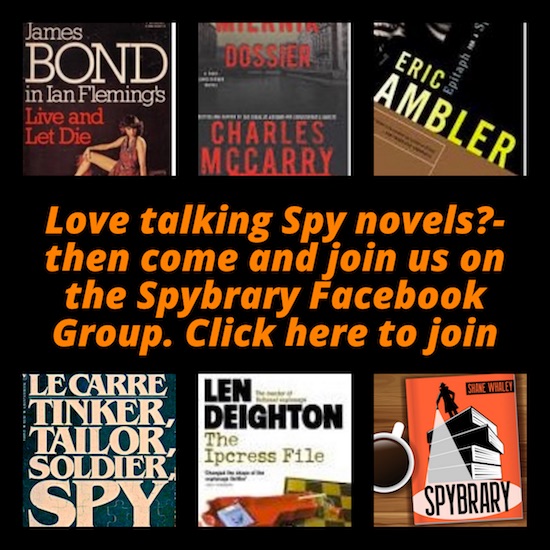
4. Eric Ambler
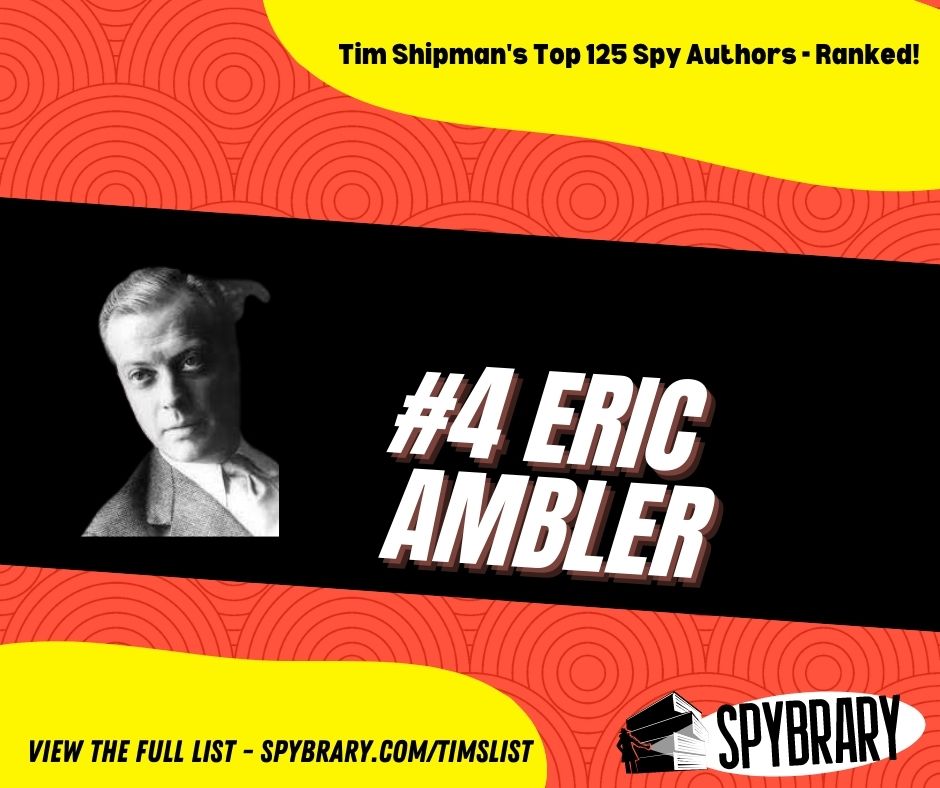
Active: 1936-81
Key works: The Mask of Dimitrios aka A Coffin for Dimitrios, Epitaph for a Spy, Judgment on Deltchev, Journey Into Fear, Cause For Alarm, Uncommon Danger aka Background to Danger, The Light of Day, Passage of Arms, The Levanter, The Dark Frontier
Eric Ambler was one of the world’s leading thriller writers for pushing five decades, which would be impressive enough for its longevity, but unlike some authors who stack up good but unmemorable books, Ambler also wrote more than a handful of the finest spy novels of the century.
There is an argument that between 1936 and 1940 he had the greatest sustained period of espionage writing of anyone in history. Of his first six books, written in the buildup to war, five are stone cold classics. But he also had two other significant careers after the war, one in books and the other in Hollywood.
If Ambler did not invent the bewildered amateur lead thrust into perilous circumstances he does not understand or want, where he finds resources he did not know he had, he certainly perfected it.
His was a world of shadows and crooks, spies and conmen, secret policemen, blackmailers and assassins.A lot of authors I have tried from the 1930s – and many of those I included in the other list of classic spy authors to try – read like they are from another world, a world of patriotism, jingoism and moral certainty. The crucial thing with Ambler is that they read like modern books, like Alan Furst recreating the smoke and mirrors of an ambiguous age, but at the time when it was being lived.
Ambler was the first modern spy author and can be enjoyed as such. Peter Lewis of the University of Durham wrote: ”Ambler raised the thriller from the subliterary depths, showing that the genre and good prose were not incompatible, and redeeming its conventions for more serious purposes than the display of macho derring-do. Virtually single-handedly, he redefined the thriller so as to make possible the achievement of such postwar realists as John le Carre and Len Deighton.
”Ambler had a career in advertising when, on holiday in Marseilles, he was cheated at poker dice by a barman and fantasised about murdering the man with a rifle at a street crossing in the city. A year later, a Croatian assassin shot and killed King Alexander of Yugoslavia at the very same spot. In his wonderfully ambiguously titled memoir, Here Lies Eric Ambler (1985), he wrote: “I felt oddly guilty, but also pleased. ‘In the Mediterranean sunshine there were strange and violent men with whom I could identify, and with whom, in a way, I was now in touch.” This, and the dark streets of Eastern Europe, became his canvas.
By his own admission his first book The Dark Frontier (1936), was a not wholly successful experiment, though it was one of the first thrillers to focus on the prospect of nuclear weapons. But what followed was stunning.
Uncommon Danger aka Background to Danger (1937) pitches a delinquent journalist, Kenton, into the middle of a battle between spies and assassins searching for stolen plans for the Russian invasion of Bessarabia, home of vital oil fields. It is a plot straight from Furst, but more memorable.
Cause for Alarm (1938) features a similar innocent abroad, an engineer who moves to Italy to represent a firm which bores shells, where he gets caught in an espionage battle between the Russians and Germans.
The most famous book, often considered Ambler’s best, was his fifth, The Mask of Dimitrios (1939), known in the US as A Coffin For Dimitrios, which follows a mystery writer Charles Latimer through political intrigue, assasination and drug smuggling in the Turkish underworld as he researches what became of the eponymous crook. He is guided by one of Ambler’s greatest creations, Col Haki of Turkish police (played by Orson Welles in the film). To say much more would be to spoil one of the classics.
For sheer tension I rank Epitaph for a Spy (1938), in which a Hungarian emigre is accused of spying at a Riviera hotel and has to identify the real culprit to save himself, just as highly. And arguably the most exciting early Ambler is Journey Into Fear (1940), in which a British armaments engineer carrying plans for Turkish defence system is trapped aboard an Italian ship alongside a German spymaster, an assassin, a Turkish secret agent, a Spanish dancer and a warring French couple. It is a masterclass in cranking up the tension in a confined space.
After the war, Ambler had a successful screenwriting career with The Cruel Sea (for which he got an Oscar nomination) and A Night to Remember, the first major film of the Titanic disaster, his two biggest hits. He also collaborated with Australian writer Charles Rodda on a series of novels under the pseudonym Eliot Reed (though Ambler says he only contributed meaningfully to the first two).
Eleven years after his last novel, he did it again with Judgement on Deltchev (1951), one of the best books ever written about Soviet show trials. Ambler, like many, in the 1930s had believed in the concept of a left-wing popular front resisting fascism, and that informed much of his early work, where Soviet intelligence is often not the enemy. This world view was shattered by the Nazi-Soviet pact in 1939 and with Deltchev Ambler angered his former fellow travellers with an unsparing look at communist dictatorship. It is every bit as good as his pre-war output.
Eric Ambler wrote ten more novels, the most famous of which was The Light of Day (1962), which won the Edgar for best thriller and became the classic heist movie Topkapi, with Peter Ustinov as the central amoral character Arthur Abel Simpson, who returned in Dirty Story (1967). Both Passage of Arms (1959), set among Asian guerilla wars, and The Levanter (1972), set in the Israel-Palestine conflict, won the Gold Dagger.
Alan Furst said The Levanter “features some of the strongest action scenes to be found in Ambler”.If Furst’s debt is the most obvious, Ambler’s influence is wider than that.
Those who have acknowledged a debt to Ambler, include Graham Greene, Ian Fleming, John le Carré, Julian Symons and Frederick Forsyth. Greene praised him as ”the greatest living writer of the novel of suspense” and called himself an Ambler “disciple”. Le Carre called his work ”the well into which everybody had dipped.” Fleming paid him a more subtle compliment. A copy of The Mask of Dimitrios saves James Bond’s life during his duel with Red Grant in From Russia With Love.
It is easy to pronounce Ambler one of the five most important spy writers Britain has ever produced. But it is also the case that he is among the most enjoyable. Too many people have not read him. Don’t be those people.

3. Joseph Kanon
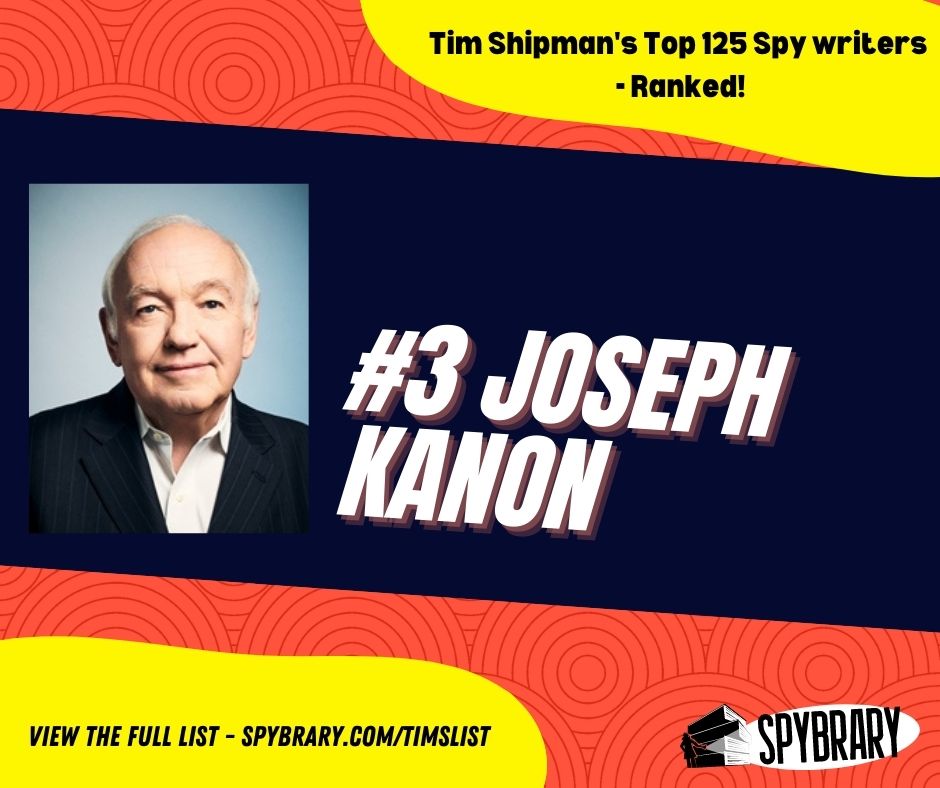
Active: 1997-
Key works: Defectors, The Prodigal Spy, Los Alamos, The Berlin Exchange, Stardust, The Good German, Istanbul Passage. The Accomplice, Alibi, Leaving Berlin
Joseph Kanon is, for my money, the best spy writer working today, an author of rare gifts as a stylist, plotter and creator of characters. He is also the greatest writer ever of historical espionage fiction, having chosen to set every one of his books in the past. It is a testament to his writing that the sense of time and place which permeates his writing means it is as if Kanon had personal experience of every locale.
He is far from the only writer to find Berlin, Moscow, Istanbul, Washington and Venice an appropriate canvas for espionage and it is a cliche that the best writers turn these places into characters in the story but few have ever done it better than Kanon.
Alibi may be one of his second tier novels (and even they compare favourably with most of his peers), but I can still taste the damp, cloying mist coming off the Venetian canals in the back of my throat and see the flickering shadows shape shifting on the walls of the houses.
He writes with the elegance of Greene and the economy of Furst. He is a master of “show don’t tell”, revealing character through dialogue rather than exposition, minimal words of sly commentary from the author appended to give the briefest direction. (“Everything is fine.” Another lie. That’s a typical Kanon construction).
The effect is to reveal the story in layers of peeled revelation, taking the reader by the hand but rewarding most those who pay closest attention.At the heart of each story are spies, defectors and people seeking to understand what happened to their relatives, thrust into events that present them with moral dilemmas, challenge their beliefs about themselves and explore the human being under stress.
“People often think they read for plot, but how many plots do we really remember? We remember characters,” Kanon told me recently when I interviewed him for my Sunday Times piece on spy fiction.
“What makes spies interesting is that they are living a lie. Everything he does is a lie. The dichotomy between the private self and the public self is there the whole time.”His work divides neatly into the immediate post war period when the superpower battle was reforming the world and what I would call high Cold War.
In the former category are Kanon’s brilliant debut Los Alamos (1997) and perhaps most famously The Good German (2001), set in Berlin when it was a recently divided city, which became a pretty good film starring George Clooney. Also in this category are Istanbul Passage (2012), a transitional place at a transitional time, and Alibi (2005), which is based on the immediate post war hunt for war criminals. The Accomplice (2019) is set in 1960s Argentina but is thematically part of this section since it also concerns the hunt for a Dr Mengele-type war criminal. Only perhaps Sarah Gainham has a more atmospheric grasp of an era when the new alignments were taking place.
His high Cold War books include some of my favourites. “The spy was centre stage,” Kanon says. “In the Cold War they were the shock troops and the intelligence agencies were the ground forces. They were the ones in the field risking capture, imprisonment and even death. They get to be the star of the show. A lot of the spies for the KGB were doing it for ideological reasons, which is inherently dramatic.”
The Prodigal Spy (1998) features a son in search of his father two decades after he fled America accused of being a traitor. Kanon tackles the McCarthyite era in Leaving Berlin (2014) and Stardust (2009), the latter of which is not strictly a spy book but is one of his very best, set in the Hollywood of the 1950s, the world of sordid gossip columnists and the black list. Joe himself says it is one of his favourites.
The crowning glories of this part of his oeuvre are Defectors (2017), which explores what happened to a fictional Burgess, Maclean and Philby once they had defected and his most recent book, The Berlin Exchange (2022), set in 1960s Berlin, where an atomic spy is sent back to East Germany, his ex wife now married to an operator who runs a trafficking operation, sending political prisoners to the West in exchange for hard currency.
When I spoke to Joe recently for my Sunday Times piece on spy fiction I asked him which of his books is best. He said: “You always think the one you have just done is, because you hope you are getting better.” I hadn’t at that point read The German Exchange. The great pleasure is that this time he may be right.
Kanon has not received his dues, in my view, because he has not succumbed to the publishing tyranny of writing a series character. As a former publishing executive before he started to write, he is ironically more liberated to say no and do his own thing. But each of his books is a beautifully crafted work of its own where the tension gets steadily cranked tighter and tighter.
Take the first 100 pages of The Berlin Exchange, where we see a dramatic crossing of the wall, a tense personal reunion, revelation about a past betrayal, an unwelcome professional reunion, new peril and then a body. It is all machined with Swiss watch precision but always seems logical and real. The final 100 pages is almost unbearably tense.
At the heart of his books are relationships between men and women which are crafted with subtlety. The women are not the pneumatic fantasies of some spy fiction but real people who you are more attracted to because they seem to have stepped straight off the page into your life.
He also, to be blunt, writes the best sex scenes I’ve ever read in thrillers – always grounded in emotion and the story, but all the more impactful because you experience the textures and tastes rather than the classic scene break and “Afterwards…” which some authors employ. I can still see now the lithe body performing naked backstroke in a swimming pool in Stardust. I have seldom loved a character like Molly in The Prodigal Spy after a night of passion in Prague. “Sex is the most intimate thing that happens between two people,” he explains “and consequently he can be very revealing. I find it fun to do.”
The main rival to The Berlin Exchange, is the book that Kanon also thinks his strongest: “The one that I thought did what I wanted it to do was Defectors. It just clicked for me.” He then explained the fascinating back story to the novel, which I had not heard before. The idea came from a conversation with Donald Maclean’s brother. “He worked in publishing, in fact I worked for him. It was of course known, but no one ever discussed it.
You just didn’t bring it up because it would be considered rude. But one day I had left and he was in New York on business and we had lunch and he said: ‘I went out to see Donald.’ I was just thunderstruck and said: ‘Oh, and how did that go?’ It just seemed to me one of the most extraordinary stories. How do you pick up the traces with someone you have known all your life and who has blown up everybody’s lives around him – and yet he’s the same person. It was fascinating and in that way you sort of file things to the back of your mind… I wasn’t then a writer and I wasn’t thinking about using it, but it never left me.
Years later I thought: what happens to them afterwards is a story that almost is never told. You get on a ferry with Burgess and that’s the last we hear of them. We really don’t know what their lives were like once they had landed. That’s what that book was. Was it about spies? Yes. But this was about the lives people get after they have successfully defected, having given up their lives for this cause, only to discover that once they were in the heartland they were ignored and shunned.”
Is Joseph Kanon as important a writer as Eric Ambler?
Clearly not.
He has not broken new ground or reshaped the espionage novel to reflect the times in which he is working. But he has maintained an exceptionally high level of quality for 25 years and I can’t help escape the conclusion that he is almost at the apex of what it is possible to achieve in this genre, a brilliant synthesis of what has been learned about great thriller writing: the atmospherics and peril of Ambler, the characterisation of Deighton, the moral ambiguity of Le Carre and the clean and propulsive prose of Greene.
He is absolutely worth his place in the pantheon of the greats.

2. Len Deighton
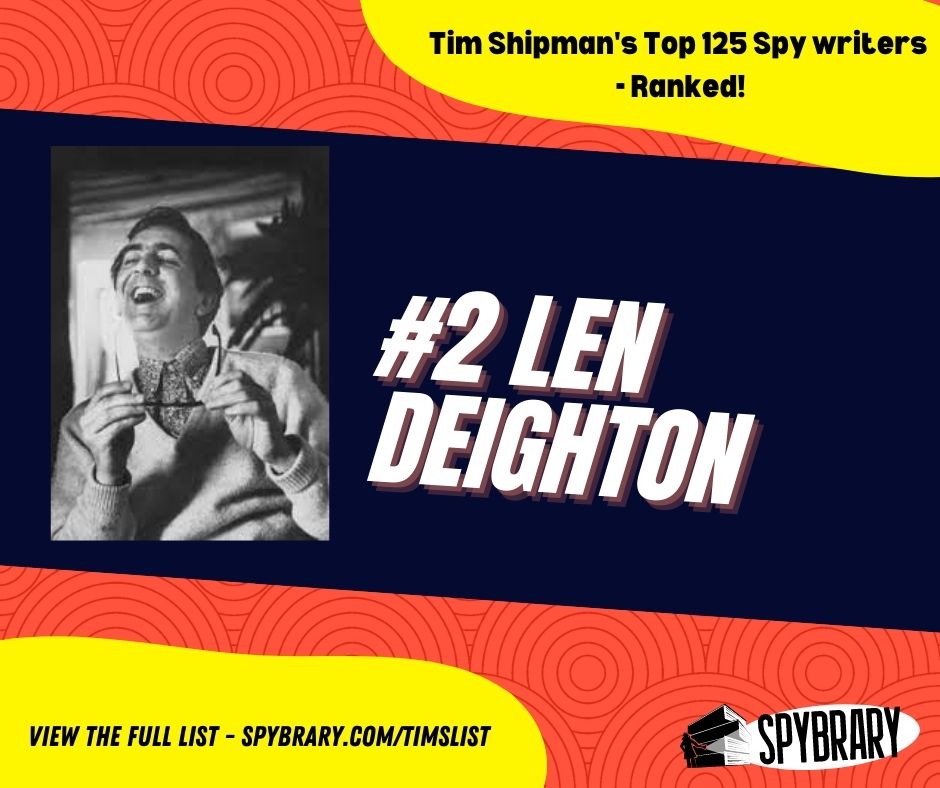
Active: 1962-96
Key Works –
Espionage: Berlin Game, Funeral in Berlin, Spy Line, Spy Sinker, Mexico Set, London Match, Horse Under Water, Spy Hook, Billion Dollar Brain, Yesterday’s Spy, Spy Story, Winter
Other: SS-GB, Bomber, Close-Up, Goodbye Mickey Mouse, Only When I Larf
If I disappear in the next few days it is because Rob Mallows, Jason King and, perhaps even, Shane Whaley have had me taken away for re-education. And yes, I feel bad. Len Deighton has given me as much pleasure as any writer alive and created, in the Bernard Samson series, what is I think the greatest long series of modern spy novels. His is, with competition only from the Slow Horses, the best ensemble cast there is.
Years after reading these books, the personalities of Werner Volkmann, Dickie Cruyer, Frank Harrington, Erich Stinnes, Tante Lisl, Brett Renselaar, Silus Gaunt and all the rest remain clearly delineated in my mind, as if they were sitting here now as I type.
Berlin Game (1983) is a stupendously good book, with a killer ending, one of the very best in spy history, but it also kickstarts the best multi-volume storyline there is. Game, Set, Match, Hook and Line (all written from Bernard’s perspective) are one extended story, with Spy Line (1989) resolving the conundrums of the first book.
Deighton’s masterstroke, however, was his idea to make Spy Sinker (1990), book six, a recitation of those events from the perspective of others. It becomes clear very quickly that Bernard has not been a reliable narrator, and was indeed (necessarily) ignorant of much of what had been going on. It is the master stroke that lifts this from a great series to a novel in many parts, the Dance to the Music of Time of spy fiction.
When someone is new to the genre of spy fiction, Berlin Game is invariably where I send them. The third trilogy – Faith, Hope and Charity (1994-6) – adds to the story but, if I have a criticism, there is a noticeable drop off in quality. These were Deighton’s last books. They may have suffered in my mind because I read them back to back and it seemed as if they were all repeating a formula: Bernard goes to Berlin, Bernard endures a difficult meeting with Dickie, Bernard endures a difficult dinner with Silas etc. Perhaps read a year apart these would be nostalgia, read together they can seem episodic and repetitive. But that is to quibble. No one else has sustained one story over this long a series. It is the symphony of spy thrillers.
Deighton’s importance was two-fold. Firstly, while Ambler moved the genre from superhero secret agents to amateurs, Len made his professional spies rugged working class men in temperamental opposition to their upper middle class bosses, which added another dimension. Le Carre focused instead on the subtly nuanced divisions within the middle class in his workplaces.In the unnamed spy books, with which Deighton began his career, this gave rise to some wonderfully pointed writing, particularly between his lead and Dalby.
This is the true significance of The Ipcress File (1962), his debut breakthrough, which plot-wise is a mess (and as a result really not the best place to start). Some argue that whole scenes and chapters, unconnected to the main plot, are there to show the confusion of a spy’s work and how he can be working on several things at once, but it is not a help to the novice reader.
However, Ipcress is perhaps the ultimate sixties spy book (far more so than Spy Who Came in From the Cold), as important as Mary Quant and Mods as a symbol of Swinging London. Deighton himself has described it as “a spy procedural” in the hard-boiled tradition of American detectives.Ipcress was so immediately iconic, as David Craggs explained in an excellent piece for Artistic Licence Renewed , that Harry Salzman, who had only just released Dr No, bought the film rights months before The Ipcress File was even released with a mind to creating an anti-Bond film franchise.
He told Deighton: “I am the only person in the world who won’t try to make your working-class anti-hero into some kind of James Bond.” Enter Michael Caine and his specs as the newly-named Harry Palmer. Craggs puts it nicely: “Bond paved the way for Len’s unnamed intelligence agent in a similar way as The Beatles did for The Rolling Stones.”
The book was serialised in the London Evening Standard and Hodder & Stoughton’s first run of 4,000 copies sold out within 24 hours.
Nonetheless, Funeral in Berlin (1964) is much the best of the early books, with Horse Under Water (1963) – scandalously overlooked by many because it was never filmed – not far behind.
Len’s second great achievement was to take us into the office and explore the kind of dynamics recognisable to anyone working in that environment. We all know a few Dickie Cruyers. Le Carre did this too but Deighton’s office politics was more acute and amusing and The Sandbaggers and The Human Factor are both unimaginable without Deighton’s example. Yet he also knew how to write action and stands as the historic bridge between Le Carre and Fleming.
The curiosity with Deighton is that he started and ended strongly, but his middle period spy thrillers are his weakest. I quite like Yesterday’s Spy (1975) but An Expensive Place to Die (1967) and Twinkle Twinkle Little Spy (1976) – a better title than it is a book – are both disappointing. However, the middle period is where Deighton’s great wartime novels fell. SS-GB (1978) and Bomber (1970) are up there with Berlin Game as his best work and Goodbye Mickey Mouse (1982) is highly atmospheric and enjoyable. (Avoid XPD, 1981, which is a curious misfire).
Also worth mentioning is Close-Up (1972), his expose novel on the movie industry. I have a copy signed by Len in which he describes it as “my best book”.
When considering Deighton in the round, there are two other attributes worth hailing. He was also a first class historian, penning Fighter on the Battle of Britain and other works of military history. The second is that as a graphic designer before he became a novelist (he designed the British cover of Kerouac’s On the Road), Deighton cared greatly about his covers. The Raymond Hawkey designs, in particular, are landmark moments in spy thriller cover design, every bit as iconic as the Chopping Bonds, and are much missed in this banal age of “silhouette man” on every damn spy book. They make Deighton’s books highly collectible.
One of my most prized possessions is a paperback copy of the Ipcress File, which Len very kindly sent me a year or two ago. In it, he describes the back story to the famous gun on the cover. “I remember where Ray got that .38 hammerless S&W…it was mine, given to me by a classmate. His father – a police inspector – had been issued with it in 1939. It became a photographic prop – such is life.” What a wonderful footnote.
It was great to see a new generation being given a taste of Deighton’s work with the new ITV adaptation of The Ipcress File. It was certainly better at conveying the essence of his writing than the 1980s version of Game, Set and Match. I watched that with my dad when it first came out and loved it, but a rewatch on a dodgy DVD a decade ago showed that by modern standards it was agonisingly slow. I’m not sure Len was right to hate it as much as he did (the reason why it has never been re-shown or been granted a DVD release) but if TV producers are looking for material, a remake of all nine Samson books could be spectacular.
There are some who will place Len one spot higher. He would be a worthy winner. We would not be here without him, since Shane Whaley began Spybrary so he could discuss Deighton’s work with others. But to declare joint winners would be a cop out and I have to chose.
Check out some of our Len Deighton related episodes on the Spybrary Podcast, including the very first episode.
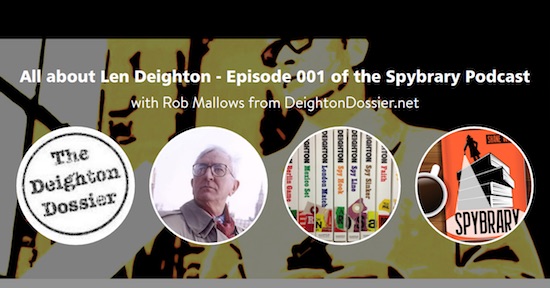
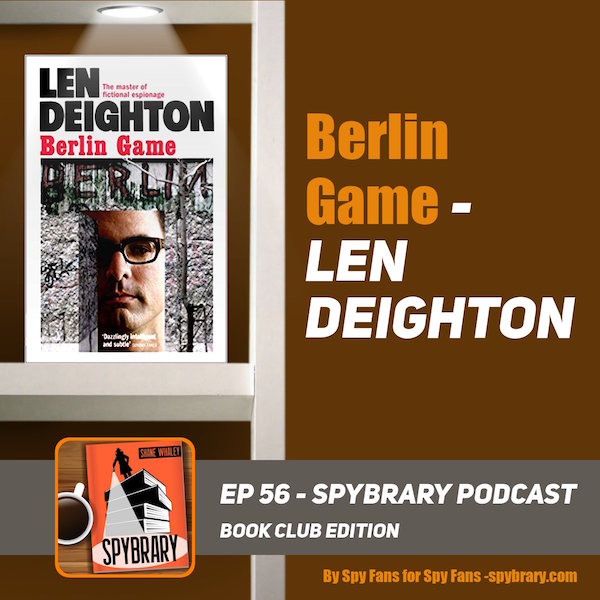
(Shane – Len does not have his own website, the next best thing is The Deighton Dossier, meticulously kept up to date by Rob Mallows and officially endorsed by Len Deighton. Do also consider joining the accompanying Deighton Dossier Facebook Group for more Deighton discussion and news.)
For reasons I will explain the top spot goes to…
1. John le Carré
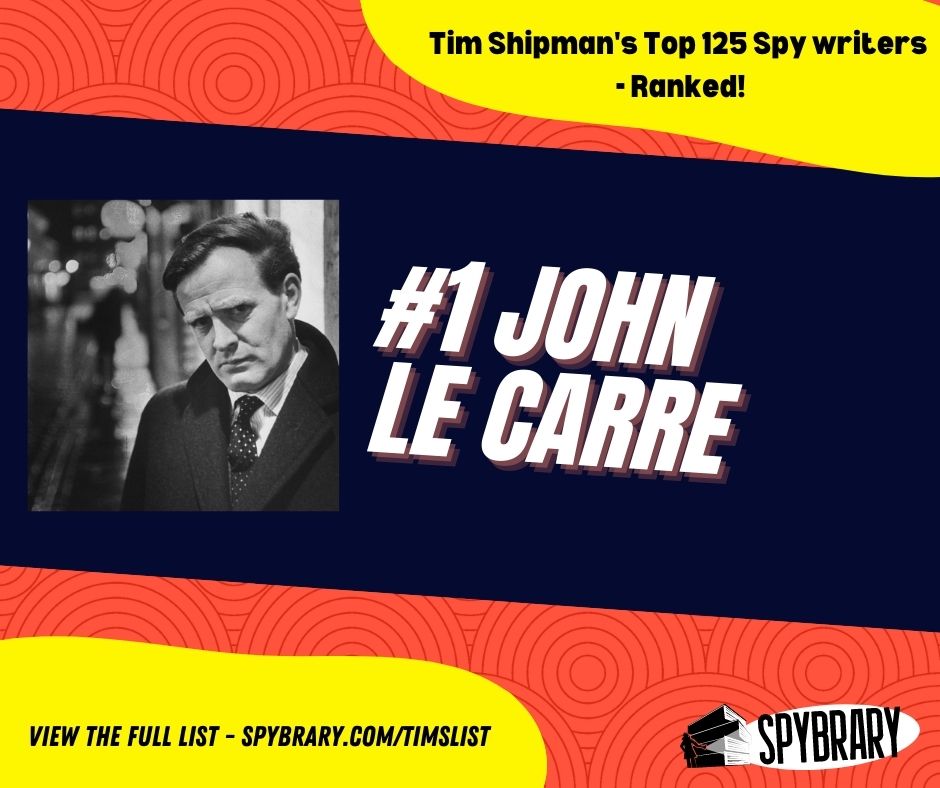
Active: 1961-2021
Key works: Tinker Tailor Soldier Spy, The Spy Who Came in From the Cold, The Honourable Schoolboy, A Perfect Spy, Smiley’s People, The Constant Gardener, A Small Town in Germany, The Little Drummer Girl, Our Game, The Night Manager, The Russia House, Call For the Dead, Agent Running in the Field, A Most Wanted Man, Absolute Friends
Official John le Carre Website
Well, who else was it going to be?
Take it or leave it, but my view is that John Le Carré is not just the greatest spy writer of all time, but one of the most significant English novelists in the second half of the 20th century and one of the very best prose stylists to boot.
He managed to be an important commentator on his times for 60 years and found something meaningful to say about all of them. With John Buchan, Eric Ambler, Graham Greene, Ian Fleming and Len Deighton, he is the writer who advanced and elevated the spy novel through its history, but this is to miss the point. The point is that the books themselves are so absolutely bloody brilliant in plotting, language and character that they bear re-reading like no other spy author.
Even when you know what is going to happen the journey is like consuming a tasting menu by one of the world’s great chefs.
There are spy authors who make you want to have a go at writing one yourself. There are others, and Le Carré is king of this, who make you think there is absolutely no point trying at all, since his work is so untouchably brilliant.
He is not for everyone. If you want constant gun battles, look elsewhere. But those who say he can’t and doesn’t write action, have not read the latter part of The Honourable Schoolboy.
It is legitimate to say that too many of his female characters, particularly in the early work, existed for the purposes of the men. But all those who say he could not write women cannot have read The Little Drummer Girl. And in the 1960s and 1970s it was, for better or worse, a man’s world and Le Carre gives all his characters humanity. I would argue that getting upset, as a recent feminist reviewer did in the FT, that Liz Gold in The Spy Who Came in From the Cold is “a tragic creature”, is missing the point. That was sort of the point of the plot. Everyone in that book is tragic in their own way. It is a searing and brilliant book, with one of the greatest twists I’ve ever read and a conclusion that is horrifically right.
Graham Greene described it as “the best spy story I’ve ever read” and it has only one rival.I have discussed the Le Carré list at huge length when I ranked his novels, so I won’t repeat everything here but suffice to say, when I attempt to drawn up a list of my top 10 spy books, I struggle to place fewer than five of Le Carré’s there (The three volumes of the Karla Trilogy, TSWCIFTC and A Perfect Spy) and I would personally find it easy to justify seven or eight, frankly.
David Cornwell took his pen name when he served in both MI5 (where he met John Bingham, supposedly the model for George Smiley) and MI6 before his cover was blown by Kim Philby’s defection and his writing career made employment by SIS impossible.
My favourite of all his books is Tinker Tailor Soldier Spy (1974), which is his response to Philby’s betrayal of a country and his class. For my money, the greatest spy thriller ever written. The best author, in his best period, doing his version of the biggest scandal ever to engulf British intelligence, a book that entices and grips and excites as well as any shoot-em-up. The BBC TV series that followed, with Alec Guinness as Smiley, may also be the best serial drama there has ever been.
Le Carré’s prose in The Honourable Schoolboy (1977), which followed, is even better, confirmation that he was a great novelist, not a genre writer. It has a reputation for being difficult, but you just have to approach knowing that the layers of the onion will be peeled slowly.
The first 50 pages, which could have been dealt with in two by a lesser author keen to crack on with the plot, are from this journalist’s perspective the best thing ever written about a pack of news hounds. Enjoy the starter, rather than complaining that the steak is late, I say.
Smiley’s People (1979), which completes the trilogy, is also wonderful and contains some of Le Carré’s best character work, where his key creation confronts the moral ambiguity of what he is prepared to do to lure Karla. The cigarette lighter moment may be the most indelible image he ever wrote.
“You won George.” “Did I? I suppose I did,” may be his best ever lines of dialogue.
The BBC adaptation of this one is a clearer recitation of the central storyline. This is the best trilogy/short series in spy history and achieves for depth and majesty what Deighton managed across nine books in just three. It is an astonishing piece of work which makes you appreciate more the subtleties of the character we met, fully formed and “breathtakingly ordinary”, in Call for the Dead (1961): “Short, fat and of quiet disposition, he appeared to spend a lot of money on really bad clothes, which hung about his squat frame like skin on a shrunken toad.”After that golden era, Le Carré still managed to maintain a very high quality of work.
The Little Drummer Girl (1983) is great and then came A Perfect Spy (1986), which Philip Roth called “the best English novel since the war” and he may be right. I always think of this hugely autobiographical work as Le Carré’s best novel, even if it is not his best spy thriller.
Le Carré might have lost relevance as the Cold War ended but he kept churning out great books: The Russia House (1989) and Our Game (1995) on aspects of the great power conflict in the new Russia; The Night Manager (1993) on the arms trade and (my favourite from this era) The Constant Gardener (2001), which reminded me of the equally wonderful A Small Town in Germany (1968) in its filleting of the rivalries within an embassy and the power, as a plot device, of a quest for someone who has disappeared.
Then came the war on terror. It was a period where, to me, Le Carre’s lingering anti-Americanism became slightly too much, his instinctive left of centre politics worn slightly too prominently on the sleeve, the shades of grey in which he always specialised given over to a little too many black and white views in a battle where there really wasn’t an equality of evil. But there is still great writing.
The first book he wrote after 9/11, Absolute Friends (2003), has a great friendship at its core and one of Le Carrés best ever opening paragraphs as Ted Mundy contemplates mad King Ludwig’s castle as his “past returned to claim him”.
There was much to deplore in the war on terror of course and A Most Wanted Man (2008) dealt brilliantly and poignantly with the most reprensible: rendition. It became a cracking film with Philip Seymour Hoffman (my favourite modern actor) in the lead.
Brexit had a similar effect on Le Carre the man, a cause of ill-concealed rage, but the novel in which he dealt with that, Agent Running in the Field (2019), was one of his best late books, a good old-fashioned narrative about an intelligence operation with a great depiction of a service wife with every bit as much agency as her husband. To its critics, this is a shrill bellow from an old man disillusioned by Britain’s departure from the EU – but in the end, Le Carre subverts that with a final twist which means the last laugh is on the remoaner tendency. In so doing he puts the craft of writing before politics.
Silverview (2021), published posthumously, was a slight work but his prose was as good as ever and there are scenes (the background briefing by the retired and married spies – another great female character) which will stay with me.
In short, Le Carré was a great novelist, a thrilling writer and as Joseph Kanon said to me the other day “the master” who all other spy writers look up to.
I feel sorry for anyone who doesn’t get the enjoyment from these books that I do.

Stay tuned for a special episode of Spybrary where we discuss Tim's spy writer selections. In the meantime do check out some of our John le Carre related episodes on the Spybrary Podcast.
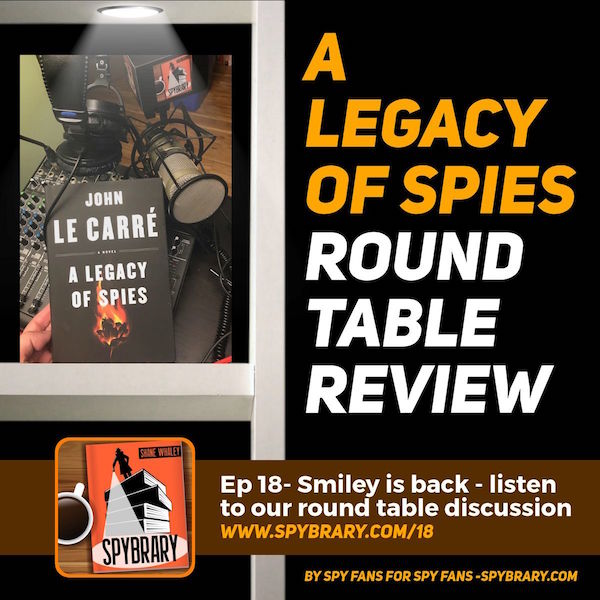
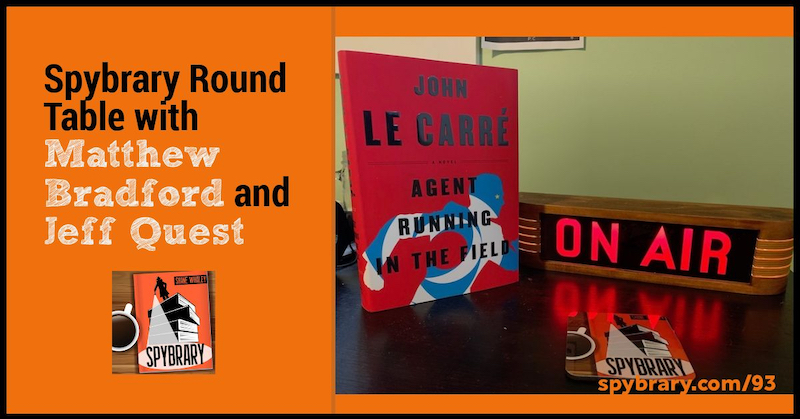

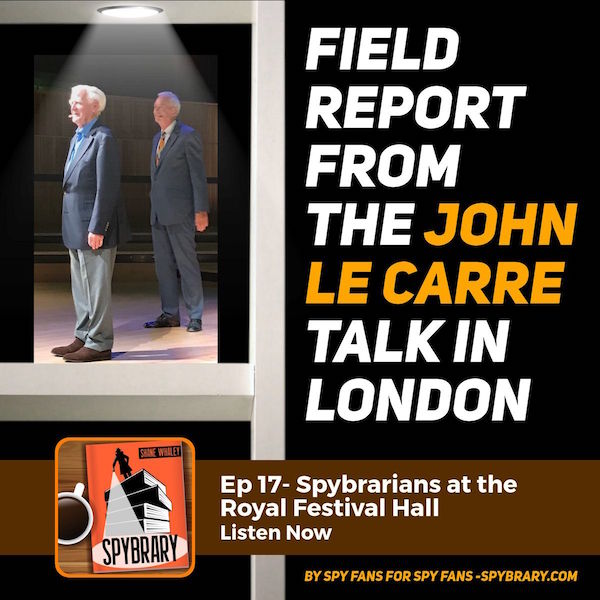

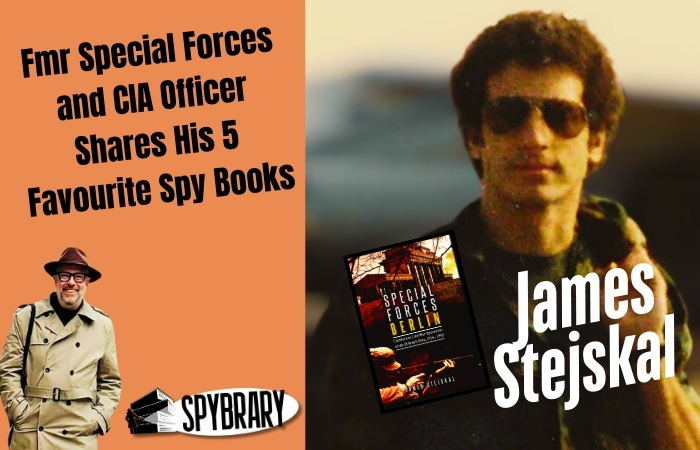


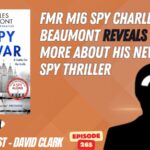
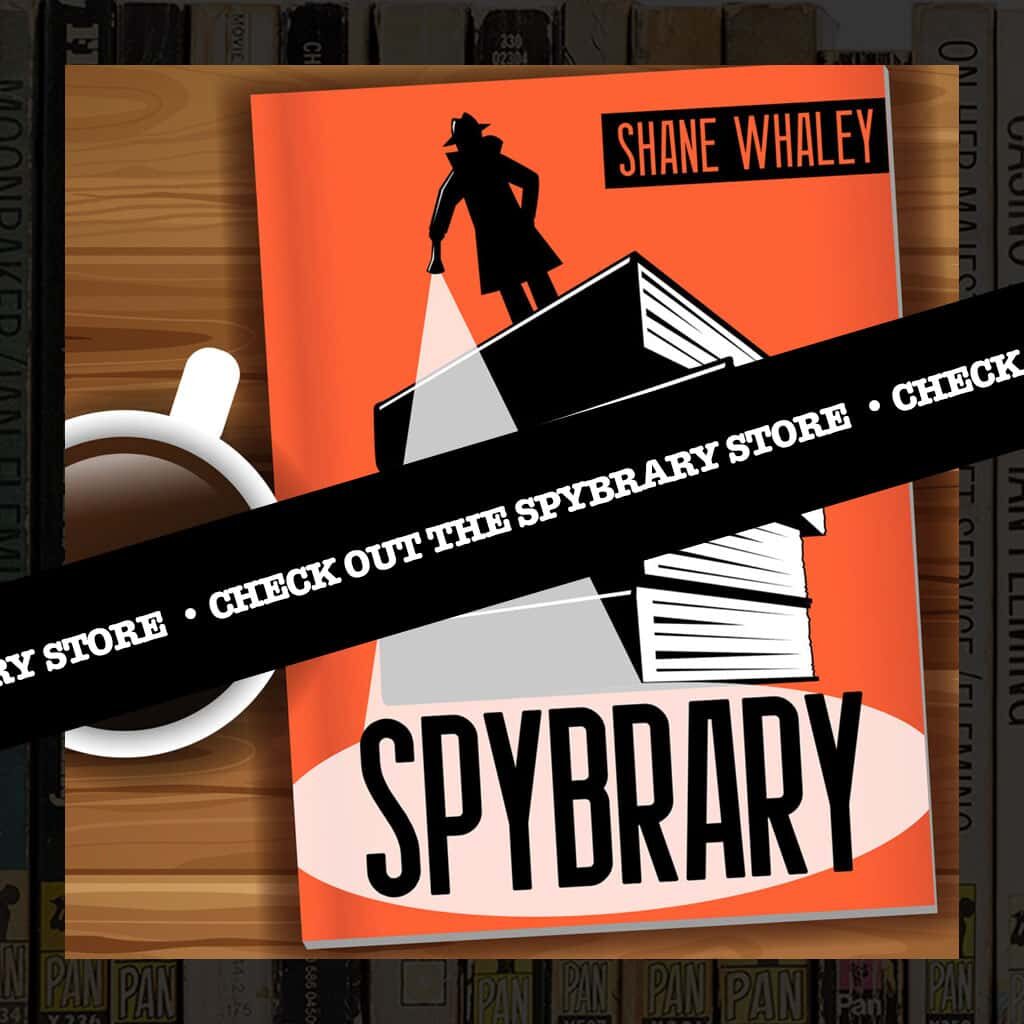
[…] Shipman is sharing his 120 top spy writers in ranking order, for Spybrary. He shared the following message as he begins the countdown from […]
[…] just call this project the Top 300 spy writers. As promised, I’ve now augmented the main list of 125 best spy writers I have enjoyed with what follows: more than 170 new spy writers who should be […]
[…] today’s show, it would be remiss of me, not to mention that Tim Shipman has finally completed his list of 125 spy writers and not only has he ranked them but he gives us a short observation on why he rates that spy author […]
[…] few months ago, spy fan and journalist Tim Shipman published his list of the best spy authors of all time. This was no top ten list though; Tim revealed his favorite 125 spy writers and ranked […]
[…] I never heard of it before or since, not even in the maybe later category of the esteemed Shipman best 125 spy authors list, but what was made clear by Jake was that this was not a conventional spy novel it's off road, […]
[…] Tim Shipman's top 125 spy writers – ranked […]
[…] Berry's debut novel, Tim Shipman, chief political commentator of the Sunday Times and author of the Top 125 Spy Authors list, weighed in on Berry's Edgar […]
[…] Top 125 Best Spy Authors Ranked by Tim Shipman for Spybrary […]
[…] Top 125 Best Spy Authors Ranked by Tim Shipman for Spybrary […]
[…] Top 125 Best Spy Authors Ranked by Tim Shipman for Spybrary […]
[…] Top 125 Best Spy Authors Ranked by Tim Shipman for Spybrary […]
[…] Top 125 Best Spy Authors Ranked by Tim Shipman for Spybrary […]
[…] Top 125 Best Spy Authors Ranked by Tim Shipman for Spybrary […]
[…] Top 125 Best Spy Authors Ranked by Tim Shipman for Spybrary […]
[…] Top 125 Best Spy Authors Ranked by Tim Shipman for Spybrary […]
[…] Top 125 Best Spy Authors Ranked by Tim Shipman for Spybrary […]
[…] Top 125 Best Spy Authors Ranked by Tim Shipman for Spybrary […]
[…] Top 125 Best Spy Authors Ranked by Tim Shipman for Spybrary […]